





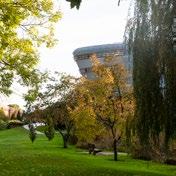

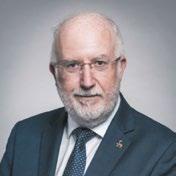



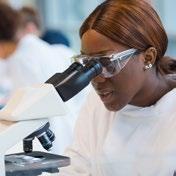










CONTENTS Our vision, mission, values and heritage 11 The year in numbers 03 Foreword from the Chair 05 Vice-Chancellor’s review 06 Delivering our strategy 13 Education and student experience 18 The view from the deans 26 Research and innovation 30 Valuing our people 46 Sustainability and environmental impact 50 Managing risk 54 International engagement 58 Corporate Governance Statement 62 Financial statements 83 Building strong relationships 39 Welcoming our new Provost 10 Financial review 73


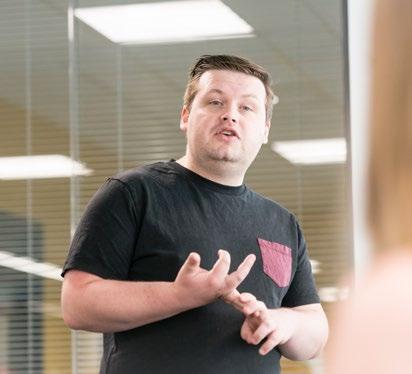

in the UK, National Student Survey overall rankings1 alumni in 187 countries overseas students research income philanthropic support raised from donors in the world, Times Higher Education Impact Rankings 1 All higher education institutions, excluding specialist providers 2 As measured by grade point average (GPA) for employability in high-skilled jobs, south-east of England, HESA Graduate Outcomes survey undergraduate students postgraduate students employees2 for quality of research outputs in the Research Excellence Framework 20212 9TH 55TH 2ND 136,000 5,006 £41.3m £7.74m 11,418 4,230 3,064 TOP 20 THE YEAR IN NUMBERS 03
1891
OUR STORY SO FAR
Battersea Polytechnic Institute, the forerunner to the University, is founded.
1966 Royal Charter establishes the University of Surrey; construction begins on the new campus in Guildford, Surrey.
1968 Students arrive on the new university campus.
1985 Surrey Research Park’s first tenants take up residence.
1995 The European Institute of Health and Medical Sciences is established.
1998 HM Queen Elizabeth officially opens the Surrey Space Centre.
2010
Surrey Sports Park opens; Guildford School of Acting (GSA) merges with the University.
2015
HM Queen Elizabeth opens the School of Veterinary Medicine’s new buildings; the 5G Innovation Centre (5GIC) officially opened.
2016
Surrey is named University of the Year and University of the Year for Student Experience in The Times and Sunday Times Good University Guide.
2017
Innovation for Health laboratory opens, advancing learning in medical engineering and physical sciences.
2020
Kate Granger Building, home to the School of Health Sciences opens; the new 6G Innovation Centre (6GIC) is launched.
2021
Surrey named University of the Year for Graduate Employment in The Times and Sunday Times Good University Guide for 2022.
2022
New Surrey School of Medicine announced, to begin training doctors from 2024; the Institute for People-Centred AI and the Institute for Sustainability open.

04 CONTENTS
THE FINANCIALS
FOREWORD FROM THE CHAIR
In 2021-22 we began to deliver on our Forward Thinking. And doing strategy.
Having laid the groundwork for success in the previous academic year, I was delighted to see the University already achieving some of the goals we set.
We improved our ranking in the Research Excellence Framework 2021, a testament to the investment we’ve made in cross-disciplinary research and innovation. And we significantly increased our student satisfaction scores in the National Student Survey (NSS).
These are two critical benchmarks that reflect our core mission – to deliver a great student experience and to create new knowledge and impact through the research we do. It’s especially gratifying to see that our students appreciate the efforts we made to improve during a difficult time when the pandemic continued to affect our services.
Our greatest impact lies in what our students go on to do when they leave the University. I’m proud that our graduates continue to be attractive to employers, which was reflected in another strong performance in the Graduate Outcomes survey.
I also welcomed the announcement that we will open a new School of Medicine, training new doctors for the first time from 2024. The last couple of years has taught us the importance of our health services and the need for well-trained nurses and doctors.
I can’t think of a greater contribution we can make as a University than adding to the talents we already produce through our nursing and paramedic graduates. Our medical degrees will integrate the latest medical technology and artificial intelligence (AI), creating doctors who can meet the needs of patients in the 21st century.

During 2021-22, we created a new pan-University research institute, The Institute for People-Centred AI, and announced the Surrey Institute for Sustainability, to open in late 2022. These are examples of how our academic mission can reach out across all disciplines, sharing knowledge, innovation and ideas in key areas of development for the future of our economy and society.
All of these achievements are a testament to the leadership provided by the Vice-Chancellor Max Lu
and the Executive Board. I was glad to see the executive team strengthened with the appointment of a Provost and new faculty deans bringing a wealth of academic, research and commercial experience to the University. I’m confident that they will continue to deliver excellent programmes for our students, while also helping to spur future economic growth.
During the coming year I will step down as Chair of the Council after four years in the role and a total of nine years serving on the Council. I’m glad to say that as I leave, the University is very well placed to take an international leadership role in both excellence of its teaching and the high quality of its research across a broad range of disciplines.
Following the refinancing we arranged last year, the University is in good financial shape, while the governance changes we put in place in 2020-21, including the new structure of the Council and committees, have been highly effective. I am delighted that the University has found such an able candidate to replace me in Charlie Geffen, who has extensive governance experience in the private and charity sectors.
I also step down this year as head of the national Committee of University Chairs, a role that has given me a wider perspective on the sector. As I do so, I’m more convinced than ever that universities are an immense national asset. They are critical to driving the UK forward, solving societal, economic and productivity challenges through investment in research and encouragement of innovation and entrepreneurship. Surrey exemplifies this approach with our hub for innovative companies, which is helping to create the high-value jobs of the future.
Finally, as I go, I would like to thank all of the staff, students and Council members I have worked with over the last nine years. It has been a privilege to serve in your company.
Michael Queen Chair of the Council

05
VICE-CHANCELLOR’S REVIEW
It gives me great pleasure to introduce this year’s Annual Report, which shows how the University’s contribution to society and its reputation continues to rise
of our staff and colleagues
and research.
In the last academic year, we’ve seen the fantastic achievements of our staff and students show through in our Research Excellence Framework (REF) and National Student Survey (NSS) results, as well as a number of improved league table positions.
These successes come despite the economic and societal challenges caused by the war in Ukraine, the cost-of-living crisis and the ongoing impact of the global pandemic at a time of political flux.
The Surrey Community has shown great resilience as it continues to improve lives through practical education and research. I am confident we will build on our successes in the year to come.
Our priorities for the year ahead include streamlining and strengthening research and innovation support for all academics to help them reach the next level, and optimising our academic achievement framework to enable everyone to achieve their full potential.
We will also be supporting early career academics via a future fellowship scheme to further boost our research capacity and performance. And we’ll invest in student services and facilities as part of our ongoing commitment to providing an excellent student experience.
STRATEGY OVERVIEW
Over the past year our refreshed strategy, Forward thinking. And doing, has guided us to make great strides in creating the conditions for our success, enhancing the student experience and focusing research intensity.
To realise our vision of being a leading global university and to deliver on our core mission of best-in-class research and education, we cannot stand still.
This report provides a record of our key achievements in the last year and offers insights into how we can achieve greater things by investing in our students and research capabilities. In turn, this will enable our students and staff to shape the future for a fairer, healthier and more sustainable world.
To help towards these goals, in February we launched an ambitious global campaign, The Future Says Surrey, which aims to supplement our existing investment by raising £60 million. It promises to inject new funds into key areas of research including health, sustainability and artificial intelligence (AI), as well as providing much-needed support for students experiencing hardship.

06
ANNUAL REPORT AND FINANCIAL STATEMENTS 2021-22 CONTENTS THE FINANCIALS
thanks to the hard work, dedication and commitment
in supporting our core mission in education
INSTITUTES
In November 2021 we opened our pan-University Institute for PeopleCentred AI with the aim of delivering an inclusive and responsible future for the technology.
I am pleased to say that the Institute is already working with industry and academic stakeholders to unlock the potential of AI in health, robotics, cyber security and the creative industries – all the while putting people and their needs at the heart of AI development.
Similarly, the new Surrey Institute for Sustainability due to be launched late in 2022 is tasked with maximising the positive impact of our sustainabilityfocused research and innovation.
This includes our multidisciplinary research on sustainable living, net-zero energy, clean air and sustainable prosperity.
In the field of health and medicine, we are launching the new Surrey School of Medicine to train a new generation of doctors. They will be equipped with cutting-edge skills from the world of AI and digital health, as well as innovative solutions in healthcare, to shape the medical landscape of tomorrow.
Our researchers are developing new diagnostics as well as treatment for diseases, helping to improve the quality of life in an ever-ageing society. We are also leading innovative studies into the healthcare of humans and animals.
TEACHING, ASSESSMENT AND THE STUDENT EXPERIENCE
The wellbeing and success of our students remain a key part of our strategy, so I am proud that we improved our satisfaction score in the National Student Survey significantly to 84.25%, which ranks us 9th in the UK.3
We also placed 9th in the Postgraduate Taught Experience Survey (PTES), rising 12 places and improving our satisfaction scores in every category.
In line with our refreshed strategy, we are improving more than 90 teaching spaces across campus, including the Teaching Block, where new technology and furniture will create the flexibility to accommodate different learning and teaching pedagogies.
The University is also investing in new learning technologies such as MySurrey Engagement and MySurrey Attendance to support the seamless student journey, helping them to fulfil their potential.

I firmly believe that anyone, regardless of their personal circumstances, should have the chance to benefit from an excellent education to launch their career.
Funds generated by our fantastic supporters and The Future Says Surrey campaign will help us offer more scholarships than ever before to students, regardless of their background.
COMPARATIVE PERFORMANCE
Our NSS and PTES results are not standalone successes.
In April, we achieved our highest position ever in The Times Higher Education Impact Rankings, rising from global 61st place in 2021 to 55th in April 2022 because
of our contributions to the United Nations’ Sustainable Development Goals.
In REF 2021, Surrey submitted research from over 660 staff in 14 of the 36 units of assessment, representing the breadth and depth of research across our faculties. We were rated in the top 20 for the quality of our research outputs when measured by Grade Point Average (GPA).
This exceptional outcome makes Surrey one of only three institutions in the UK to be in the top 20 of REF output rankings and the top 10 of the NSS overall satisfaction ranking3
The REF outcomes also saw Surrey move up 12 places (from 45th to 33rd) in the overall ranking of our research quality (by GPA), with 89% of our submitted research outputs rated as world-leading or internationally excellent.
More success in league tables came in June as Surrey rose an impressive 17 places in the Complete University Guide’s best university league table to 18th out of 130 institutions. Our courses in information technology and systems and tourism, transport, travel and heritage studies ranked as the best in the United Kingdom.
07 RESEARCH
3 Excluding specialist institutions and colleges
MANAGING OUR FINANCES
Our financial performance in 2021-22 showed continued recovery from the impact of the pandemic. Our consolidated income for 2021-22 was £305.3m, up by £5.5m (2%) on the previous year. Student numbers held up better than expected, partly due to continuing to offer the mid-year intake of postgraduate students, first introduced in 2020-21.
We managed to keep our operational spend within internal budgets through careful management of costs by department leaders throughout the University. Our investment in the ongoing University strategy meant that we reported an underlying operating deficit of £6.6 million as seen on page 77, compared to a deficit of £1.5 million in 2020-21. We also invested more than £30 million in our estate and IT infrastructure to advance the University and improve the student experience.

The UK economy is being buffeted by severe inflationary headwinds. We will need to manage our resources ever more efficiently during this period, prioritising activities that have the greatest positive impact on achieving our strategic goals. We will focus on managing our costs carefully to ensure we achieve value for money in a challenging external environment, as well as exploring and identifying further opportunities to grow our income.
EMPLOYABILITY – SURREY
AS THE PLACE TO START AND BUILD A CAREER
These successes align with our mission to produce graduates that continue into further study or progress into highly skilled graduate jobs. We are very proud of our staff who support and cultivate the employability of our students.
Our reputation and legacy depends on our graduates having a real-world impact and changing lives for the better. So, I was delighted that Surrey is ranked in the top 10 of this year’s Graduate Outcomes survey, as published by the Higher Education Standards Agency (HESA). Over 85% of our graduates have gone on to secure graduate-level employment.
We are currently University of the Year for Graduate Employment in the Sunday Times/Times Good University Guide and in March we won Best University Careers and Employability Service at the National Undergraduate Employability (NUE) awards.
We continue to invest in our students’ employability and help them transition into the workplace. This includes building on the success of our Professional Training Year programme and finding more opportunities for work experience through summer and graduate internships for students of all backgrounds.
The new Surrey Graduate Futures programme provides successful student applicants with a year’s placement at the University working in professional services. This will give them an employability head start and is the next step in empowering our students.
08
ANNUAL REPORT AND FINANCIAL STATEMENTS 2021-22 CONTENTS THE FINANCIALS
WE ARE CURRENTLY UNIVERSITY OF THE YEAR FOR GRADUATE EMPLOYMENT IN THE SUNDAY TIMES/TIMES GOOD UNIVERSITY GUIDE.
THE SURREY COMMUNITY
We have a strong sense of community at Surrey which we value greatly. Our strategic workstream, Build the Surrey Community, has a range of initiatives and events designed to instil a sense of pride and belonging at the University. We’re also encouraging our students and staff to enjoy our wonderful campus, facilities, and the benefits of being together in person. This is especially important as we emerge from the Covid-19 pandemic.
Nothing has given me greater joy this year than seeing colleagues and friends returning to campus, strengthening a community identity and collegiate spirit that even several lockdowns could not break.
Particularly memorable was the Free Fest event which took place on campus to mark the Queen’s Platinum Jubilee, bringing staff and families together to celebrate an incredible milestone.
At the end of the year, Surrey Showcase brought together some of our leading academics and gave them a platform to talk about how their research and innovations are transforming lives and the human condition. Our Alumni Awards also allowed us to see and celebrate some of the incredible contributions Surrey graduates are making to the world.
The first in-person open day in two years created a real buzz on campus, topped only by the remarkable and memorable postgraduate and undergraduate graduation ceremonies in April and July, respectively.
The easing of Covid-19 restrictions meant we could once again celebrate the achievements of our students in person at Guildford Cathedral, together with their families and friends, with a spectacular reception each day in the marquee on PATS field. We also celebrated the contribution of our colleagues in a new Values Award Scheme. This recognises and rewards colleagues for their passion and dedication in living our values of inclusion, inspiration, innovation and integrity. I’m pleased to say that well over a thousand staff have received an award since the scheme’s launch in March.
CONCLUSION
Our values define our culture and create a more inclusive community.
In this community, we all have a role to play to firmly establish Surrey among the UK’s top higher education institutions and enhancing our reputation for world-leading research, innovation and graduates who shape a better future for the world.
The University of Surrey community has emerged from the pandemic with a fresh determination to thrive in a quickly evolving higher education landscape, driving positive change for our students so they can go on to contribute to the wider society.
We can look forward to an exciting year ahead, working together to advance the University, our community, the UK and the world.

09
Professor G Q Max Lu AO DL President and Vice-Chancellor
WE CAN LOOK FORWARD TO AN EXCITING YEAR AHEAD, WORKING TOGETHER TO ADVANCE THE UNIVERSITY, OUR COMMUNITY, THE UK AND THE WORLD.
WELCOMING OUR NEW PROVOST
Previously Deputy Provost at The University of Queensland in Australia, Tim is responsible for delivering the academic mission set out in our Forward thinking. And doing strategy, working closely with the faculty deans.

He brings more than 30 years’ experience as an academic leader, having been Executive Dean of large faculties at both Queensland and Exeter universities. A world-renowned expert in the field of international relations, he is recognised for his research on human rights protection and foreign policy making, on which he has written and edited 14 books.
Tim is an elected Fellow of the Academic of Social Sciences, Australia and an Emeritus Professor at The University of Queensland, and has continued to be an active teacher and researcher throughout his career.
He said: “It is a privilege to serve the University of Surrey as the next Provost. The University is well placed to move forward confidently despite the disrupted world in which we live.
“All the elements for future success are in place. Clear strategic vision from the leadership team, internationalist in outlook, values-led, and above all, committed to providing the best educational experience for Surrey’s students. I am relishing the opportunity to play a constructive part in building a community where our people can reach their full potential.”
10
Surrey appointed Professor Tim Dunne as its new Provost and Senior Vice-President in April 2022.
IT WILL BE A PRIVILEGE TO SERVE THE UNIVERSITY OF SURREY AS THE NEXT PROVOST. THE UNIVERSITY IS WELL PLACED TO MOVE FORWARD CONFIDENTLY DESPITE THE DISRUPTED WORLD IN WHICH WE LIVE.
ANNUAL REPORT AND FINANCIAL STATEMENTS 2021-22 CONTENTS THE FINANCIALS
WE TRANSFORM LIVES AND SHAPE THE WORLD FOR A BETTER FUTURE.
OUR VISION, MISSION, VALUES AND HERITAGE
The University of Surrey is a research-intensive university committed to teaching and research excellence, with a focus on practice-based education. We strive to deliver a world-class experience to our students, who go on to make positive contributions to society.
OUR MISSION
To be a leading global university by providing excellent education and advancing and disseminating knowledge. We transform lives and shape the world for a better future by partnering with students, governments, businesses, alumni and local communities. We deliver social and economic impacts through research and innovation, together providing solutions to global challenges.

OUR VALUES
OUR VISION

We will be renowned for the outstanding quality and impact of our graduates and research, as well as our collective contributions to society. We will build on our distinctive heritage of practice-based learning and excellent student experience and embrace our future by focusing on digital transformation.
Everything we do is informed and shaped by our core values:
• Inclusion: to value everyone in our community.
• Inspiration: to find it in ourselves and each other.
• Innovation: to work together to make tomorrow better than yesterday.
• Integrity: to do the right thing, individually and collectively.
11
BUILDING ON OUR UNIQUE HISTORY
The University of Surrey’s rich heritage goes back to the founding of the Battersea Polytechnic Institute in 1891. In 1956, the Institute was among the first to receive the designation ‘College of Advanced Technology’ and in 1966 the University of Surrey received its Royal Charter.
Since then, we’ve continued to make an impact through our research, teaching, innovation and enterprise. We’re committed to working in partnership with students, businesses, governments and communities to push the boundaries of knowledge and apply it in the real world.
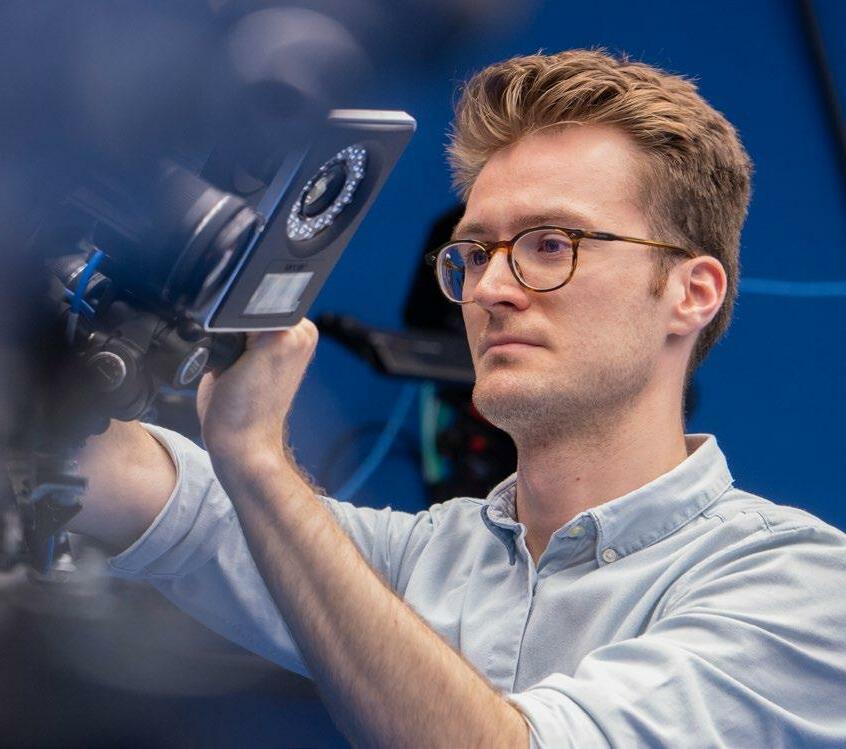
We’ve developed innovative research in areas as diverse as satellite technology, mobile telecommunication, chronobiology, food and nutrition science, and hospitality and tourism.

Our academic reach has broadened to incorporate the humanities, arts and social sciences, and health and medical
sciences, while continuing to build on our traditional strengths in science and engineering.
Additions to our campus have included the School of Veterinary Medicine, opened in 2015, and the multidisciplinary Innovation for Health building, opened in 2017. Our 5G Innovation Centre, originally opened in 2015, was relaunched in November 2020 as the 6G Innovation Centre, pioneering the next generation of wireless telecommunication technologies.
During 2021-22, we announced the new Surrey Medical School, which will begin training doctors from 2024. And we created a new interdisciplinary research institute – the Institute for People-Centred Artificial Intelligence – which will help to shape the future of AI for public good, and announced the upcoming launch of an Institute for Sustainability.
CREATING THE SURREY ADVANTAGE
We aim to equip our students with a set of skills and attributes that will lead them to personal and professional success, creating exceptional graduates who can think critically and make a real impact on society.
This is the Surrey Advantage, the premium that each and every student or partner gains by choosing us as the place to study, qualify or collaborate. It’s based on:

• excellence in academic programmes, teaching practice and facilities
• practice-centred Professional Training programmes
• enhanced soft skills including global and cultural intelligence, digital capabilities, employability and resilience and resourcefulness
• extra-curricular activities and campus life that give students the confidence to adapt to change, as well as an outstanding network of friends and alumni.
12
ANNUAL REPORT AND FINANCIAL STATEMENTS 2021-22
CONTENTS THE FINANCIALS
DELIVERING OUR STRATEGY
Last year the University of Surrey embarked on a new strategy – Forward Thinking. And Doing – to meet the needs of a changing world and make the most of new opportunities, while also contributing solutions to some of the great societal challenges such as climate change.

In 2021-22 we made significant progress towards achieving the goals and ambitions we set in our three priority areas – providing a world-class student experience, intensifying the excellence of our research, and creating the right conditions for success.


This section outlines these priorities, how we are working to achieve them and how we are doing so far against our target metrics.
OUR AMBITION

13
TO BE A LEADING GLOBAL UNIVERSITY RENOWNED FOR THE OUTSTANDING QUALITY AND IMPACT OF ITS GRADUATES, RESEARCH AND INNOVATION, TOGETHER MAKING GREAT CONTRIBUTIONS TO SOCIETY.
DRIVING THE STUDENT EXPERIENCE
OUR PRIORITY
We will deliver an excellent experience for all students regardless of background.
HOW WE ARE WORKING TO ACHIEVE THIS
TEACHING AND LEARNING
• Embedding our learner-centric curriculum design across all programmes to ensure that students get a rounded research-led education, including opportunities to contribute to a networked digital society and develop as future leaders in sustainable thinking.
• Using learning analytics to ensure all students are supported across the student journey, targeting early intervention where it is needed.
• Providing flexible, digitally-enabled learning opportunities and spaces, delivered by engaged academic staff using the latest technology, while building on the hybrid education model developed during the pandemic.
STUDENT EXPERIENCE
• Giving our students an employability head start by enabling them to become rounded and resilient graduates with the skills to succeed.
• Ensuring a seamless experience for students of all backgrounds from pre-arrival to post-graduation, listening to what they say, identifying and improving support services and infrastructure for a truly joined-up experience.
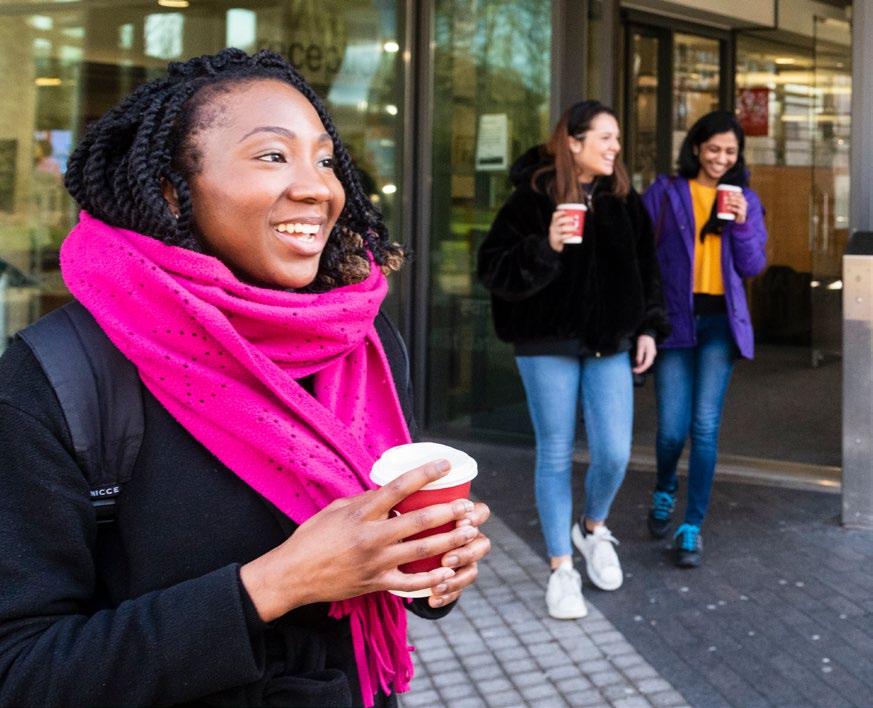
HOW WE WILL MEASURE SUCCESS
• Student satisfaction:
TOP 25%
for assessment and feedback, teaching on my course and academic support in the National Student Survey4
• Awarding gap:
4 All higher education institutions, excluding specialist providers
LESS THAN 6%
• Student retention (continuation):
a good degree (2:1 or above) attainment gap between white and black students of with parity between POLAR quintile 5 and quintile 1
TOP 25%
PROGRESS SO FAR
We have achieved some of our student experience targets already, placing in the top 15% for teaching and top 12% for academic support in the National Student Survey 2022. We also improved in assessment and feedback although we still have work to do to reach our objectives in this area. The awarding gap between white and black students rose to 20%. We are working hard to investigate the causes and reverse this trend. The number of students progressing to their second year of study fell slightly, partly a result of the disruption to study caused by the pandemic over the last two years.
14
(ACHIEVEDBY2025)
ANNUAL REPORT AND FINANCIAL STATEMENTS 2021-22 CONTENTS THE FINANCIALS
STUDENT EXPERIENCE
• Highly skilled graduate employability:
TOP 10%
1% GAP
• Student voice:
TOP 25%
• Learning community:
with less than between white and black students in the National Student Survey in the National Student Survey
TOP 25%
PROGRESS SO FAR
We have achieved our targets for student experience, placing us in the top 10% of universities for highly skilled graduate employability in the Graduate Outcomes survey, with a 1% gap in outcomes between black and white undergraduates. In the National Student Survey 2022, we ranked in the top 15% for both student voice and learning community. Our goal is now to maintain and build on these achievements in future years ensuring all students regardless of background are able to achieve their potential.
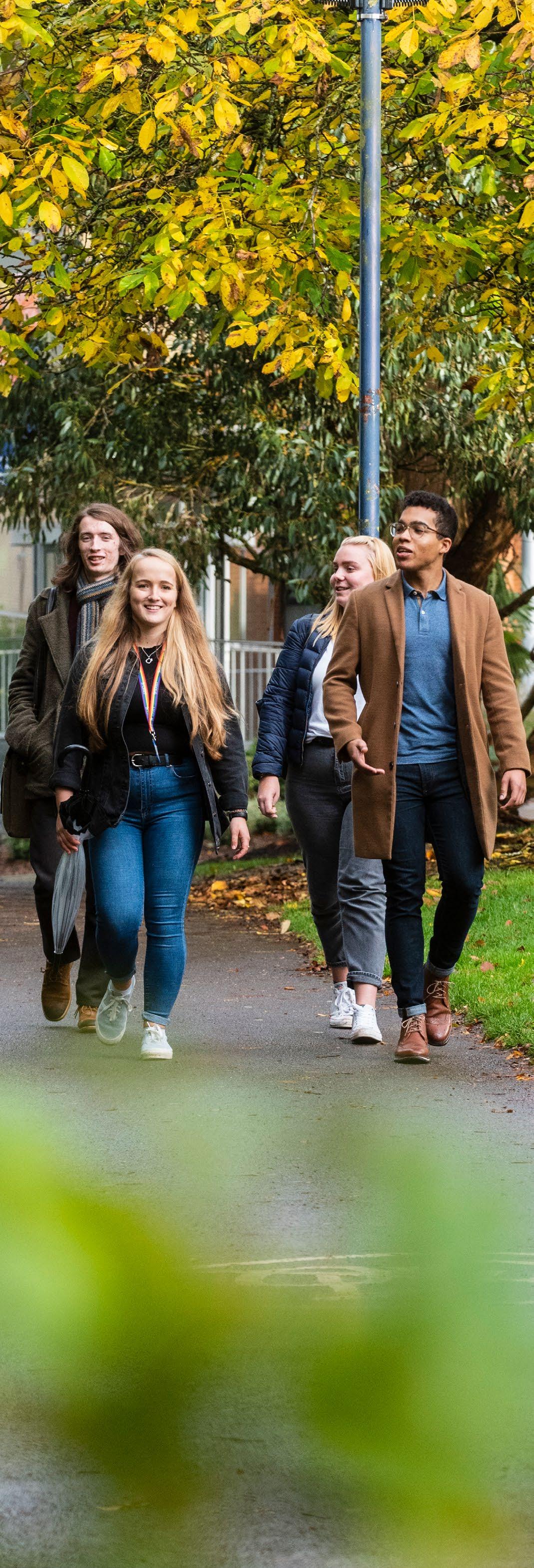
15
OUR GOAL IS NOW TO MAINTAIN AND BUILD ON THESE ACHIEVEMENTS IN FUTURE YEARS ENSURING ALL STUDENTS REGARDLESS OF BACKGROUND ARE ABLE TO ACHIEVE THEIR POTENTIAL.
FOCUSING RESEARCH INTENSITY
OUR PRIORITY
We will focus our resources and support around our existing and emerging critical masses of excellence.
HOW WE ARE WORKING TO ACHIEVE THIS
• Creating pan-University research institutes to serve as flagships of cross-disciplinary research, from which to elevate our global impact and visibility.
• Scaling our innovation to grow societal impact, involving greater numbers of staff, students and postgraduate researchers in impact and innovation.


• Increasing the synergies between our research and teaching, bringing the research and education missions of the University ever closer together, building on the synergies already achieved by individual teachers and researchers.
• Strengthening our support and infrastructure for researchers, making sure it is researcher-centric, can-do, digital and integrated.
•
CAPITA
PROGRESS SO FAR
We moved up 12 places in the Research Excellence Framework rankings for the overall quality of our research, from 45th to 33rd, putting us on track to achieve our goal of a top 30 position by 2027. While income from research grants and contracts was slightly lower than in 2020-21, we’ve put measures in place to drive this forward. We’ve grown our pipeline of bids year-on-year and need to maintain this momentum to achieve our income target by 2024.
16
HOW WE WILL MEASURE SUCCESS
Research income:
Research Excellence Framework:
Knowledge Excellence Framework: £50M A YEAR BY 2024 be on track to exceed TOP 30 OUTCOME IN 2027 be on track for a in working with business and in IP and commercialisation TOP 10%
•
•
PER
ANNUAL REPORT AND FINANCIAL STATEMENTS 2021-22 CONTENTS THE FINANCIALS
CREATING THE CONDITIONS FOR SUCCESS
OUR PRIORITY
We will foster talent and create an environment where all our staff, students and postgraduate researchers are empowered and supported to flourish, valuing each and every contribution.
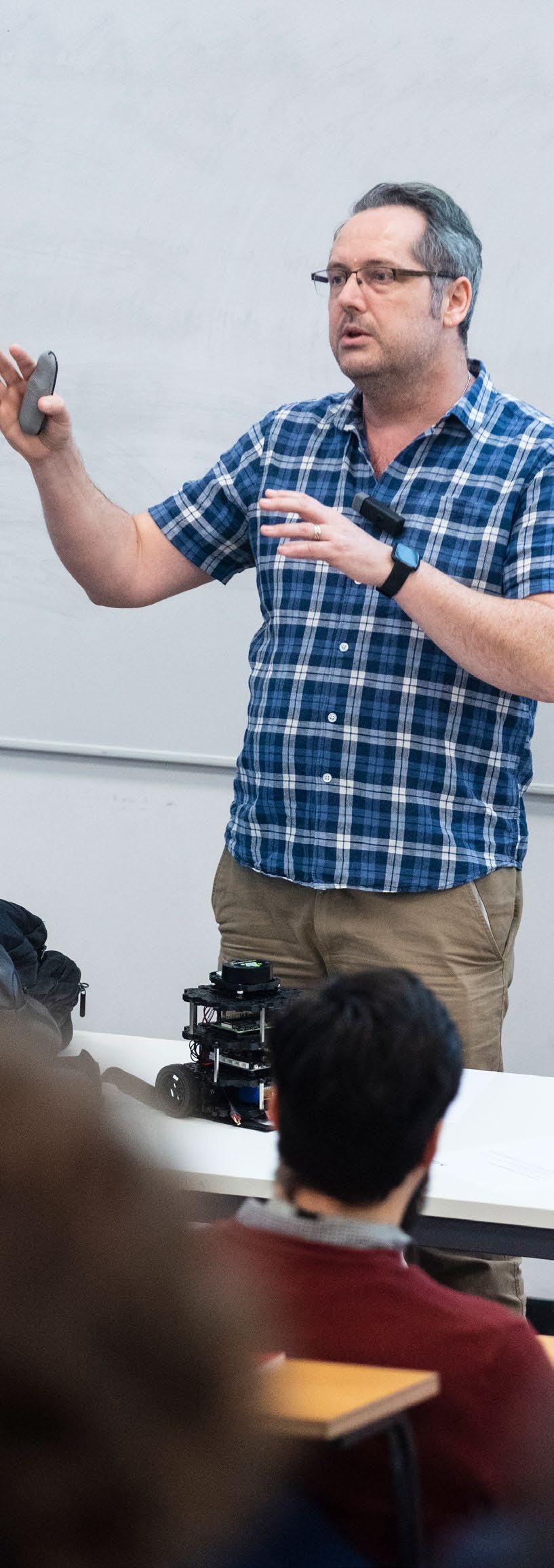
HOW WE ARE WORKING TO ACHIEVE THIS
• Make Surrey the place to start and grow a career by creating a fulfilling environment where diversity and wellbeing are championed and where everyone can achieve their potential.
• Redesigning our resource allocation model and our support processes to reward excellence, enable growth, and to create more resources for teaching and research.
• Building a stronger Surrey community, an inclusive culture in which our staff, students and postgraduate researchers feel a sense of belonging and everyone can flourish and fulfil their potential.
• Using technology to enhance our systems and simplify processes, removing unnecessary bureaucracy while seizing the significant opportunity to improve processes and remove duplication.
HOW WE WILL MEASURE SUCCESS
•
•
These top-level
will enable us to see that we are creating the conditions in which our staff are able to excel within a financially sustainable model.
17
measures
Staff engagement:
Underlying operating surplus: 70% ENGAGEMENT SCORE 3.5% PER ANNUM BY 2025 (based on a basket of metrics in our People Survey) At least
SO
We exceeded our staff engagement target with a 75% engagement score in our latest
Survey. We made an underlying operating deficit as we
to invest to improve the quality of our
research
return
surplus
our
PROGRESS
FAR
People
continue
teaching,
and the student experience. We expect to
to
as we move on from the investment phase of
strategy in the coming years.
EDUCATION AND STUDENT EXPERIENCE
PRIORITY: DRIVING THE STUDENT EXPERIENCE
SUMMARY
The University returned to in-person teaching while building on the experience of the hybrid model we developed during the pandemic. This allowed students to learn in a way that suited their learning preferences and personal needs, but maintaining the campus-based experience that is at the heart of the Surrey advantage.
Throughout the year, we continued to invest in teaching services, study resources and student welfare. We continued our upward trajectory in the 2022 National Student Survey with an improved score for overall satisfaction and a ranking inside the top 10.
The proportion of students graduating with good degrees and the number progressing to their second year
of study both fell slightly, partly a result of the disruption to study caused by the pandemic over the last two years. The awarding gap between white and black students rose. We are working hard to investigate the causes and reverse this trend.
The total student population fell as intakes continued to be impacted by the pandemic. However, the number of postgraduates increased slightly.
At the start of the year, we were named University of the Year for Graduate Employment in The Times/Sunday Times Good University Guide for 2022 and Graduate Outcomes data placed Surrey in the top 10 nationally for progression into highly skilled employment.
9th in the UK in the National Student Survey overall rankings, up 16 places on the 2021 survey and into the top 10.
9th in the UK in the Postgraduate Taught Experience Survey.
Top 10 nationally for employability in high-skilled jobs, shown in analysis of the Graduate Outcomes survey and second in the south-east of England.
Best University Careers/Employability Service in the National Undergraduate Employability Awards 2022.

Up to 100 new paid summer internships created for under-represented groups.

2021-22 HIGHLIGHTS
18
OUR RELENTLESS FOCUS ON MAINTAINING A HIGH-QUALITY TEACHING AND STUDENT EXPERIENCE CONTRIBUTED TO A GOOD PERFORMANCE IN LEAGUE TABLES.
9TH 100 9TH 10 TOP ANNUAL REPORT AND FINANCIAL STATEMENTS 2021-22 CONTENTS THE FINANCIALS
PROVIDING A HIGH-QUALITY EDUCATION
2021-22 marked the return to face-to-face teaching as we began to emerge from the shadow of the pandemic. Although we still faced considerable Covid-related uncertainty, we managed to bring all of our students back onto our Surrey campus by the end of week six at the beginning of the academic year.
We resumed in-person lectures, tutorials, seminars, and lab and studio sessions and delivered more than 90% of our teaching in-person face-to-face.

However we did this while integrating the best aspects of the hybrid education we developed during the pandemic. We continued to develop our interactive virtual learning environment SurreyLearn improving the quality and variety of modules available. We also enabled students to submit assessments online and offered new digitally-enhanced study spaces.
We maintained online options alongside face-to-face for all of our careers and other support services so that students could access them seamlessly on or off campus.
Surrey continued to invest in teaching staff and facilities. In 2021-22, we began to implement a plan that will increase the number of our academic staff by over 10%. This will help us to reduce class sizes and increase the quality of interactions between teaching staff and students.
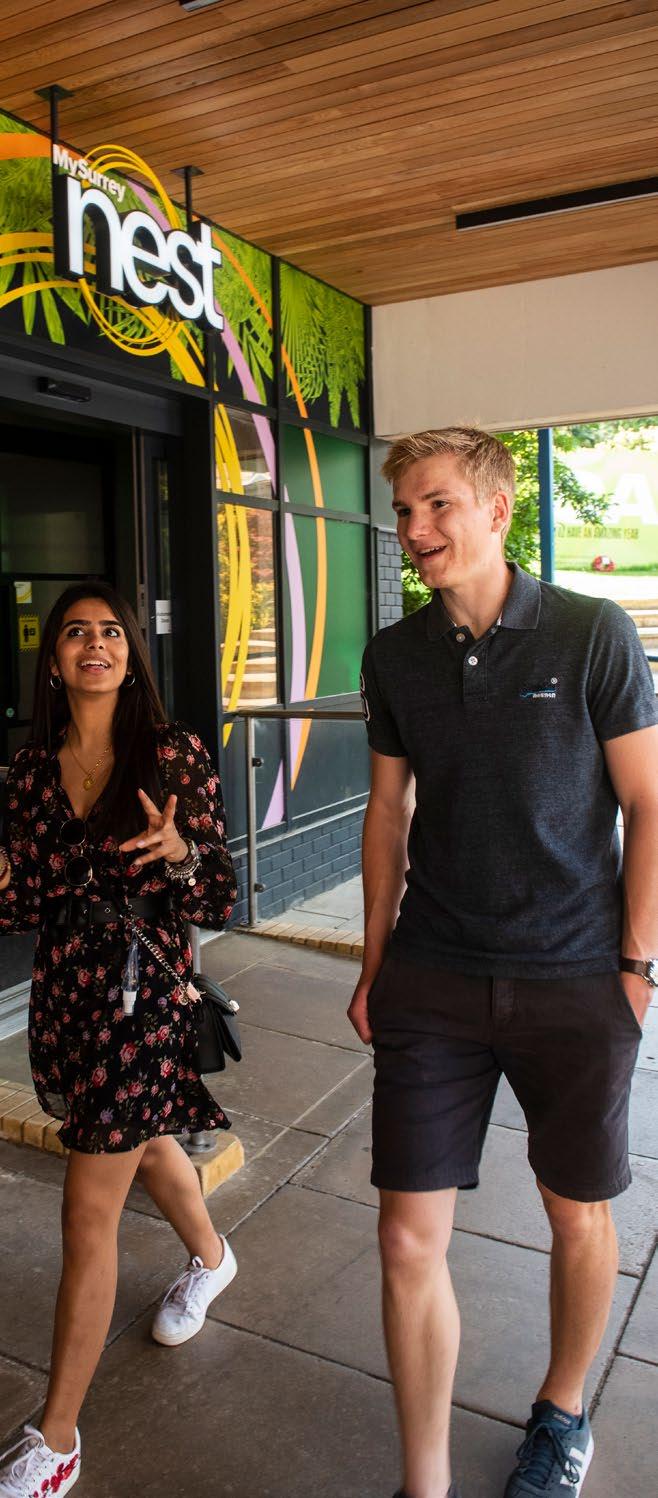
We announced the creation of our new Medical School, which will offer a four-year, graduate-entry bachelor’s degree medical programme, and expects to welcome the first cohort of 40 students in 2024. This will be the first time we have trained new doctors, who will join our excellent nursing, veterinary and paramedic graduates in contributing to the nation’s health services.
Our relentless focus on maintaining a high-quality teaching and student experience contributed to a good performance in league tables, including the Complete University Guide, where we rose 17 places among best universities to 18th out of 130 institutions.

19
STUDENT NUMBERS

Overall, we welcomed 11,418 undergraduates to Surrey, either for the first time or as returning students, a slight decrease compared to the previous year as we continue to see the impact of reduced intakes during the pandemic.
The number of postgraduate students held up well, increasing from 3,863 to 4,230. Of these, 3,068 were postgraduate teaching students and 1,162 were postgraduate research students.
Overseas recruitment continued to be impacted by the global pandemic and the consequences of Brexit with smaller intakes than prior years, but nevertheless in line with plan. However, our international student intake was better than expected in 2022-23. We are exploring new and growing overseas markets as well as continuing our efforts to recruit from countries that have sent students to Surrey in the past.
We expect renewed interest in Surrey as a place to study, driven by both improving league table performance and growing demand for UK higher education from students in the UK and abroad.
STUDENT OUTCOMES
We saw a small decrease in good degrees (first or 2.1 for all students) from 83% last year to 79%.
This was partly due to the impact of the pandemic. It caused severe disruption for the students who graduated in 2021-22, affecting their engagement with study.
The removal of the pandemic safety net arrangements during the year may also have contributed, along with an increase in students repeating part of their final year, Level 6.
The attainment gap increased between white students and all ethnic groups except mixed. The gap between white and black students increased by more than 5% to over 20%. The attainment gap also increased between higher and lower socio-economic groups.
We are implementing long-term measures to investigate the causes and turn this around. During 2021-22, we carried out a comprehensive quantitative analysis of the awarding gap, which will inform our inclusive education agenda in the coming year. We also set up a new Students Success Group which is focusing specifically on learning and teaching approaches to improve inclusivity and reduce the gaps.
STUDENT RETENTION
As part of our commitment to increasing participation, we work to retain students and help them progress through to complete their degrees. We have a goal of 90% continuation from first to second-year study, Level 4, across the student population.
Continuation to Level 4 dipped from 85% last year to 82%. Pandemic disruption was a major factor in this result. We saw that first-year students struggled to engage with study, particularly in the second term. The lack of examinations at A-level and reduced content in many subject areas, such as maths, may have also affected students’ preparation for study at university and ability to undertake the expected requirements of their courses.
We have taken action to support first-year students and make sure that more of them progress to second year. We introduced a new Progression Enhancement Support service in 2021-22. Early in 2022-23, we launched My Surrey Engagement, which will help students and their personal tutors to track engagement. We also developed a seven-point attendance plan, and we will shortly launch further interventions to support retention across the University.
Our Student Success team, which launched in 2021, provides guidance, pastoral care and personal mentoring for any student who needs it, including disadvantaged, at-risk and disengaged students who are thinking of leaving their studies.
20 ANNUAL REPORT AND FINANCIAL STATEMENTS 2021-22 CONTENTS THE FINANCIALS
STUDENTS 4,230
IMPROVING STUDENT SATISFACTION
Our overall satisfaction rating in the National Student Survey (NSS) 2022 was 84.25%, up 3.8% from last year, improving our position6 relative to our peers from 25th to 9th. This is the highest it has been since 2014-15. We also rose in the Postgraduate Taught Experience Survey (PTES) rankings, moving to 9th in the UK with an improved overall satisfaction rating of 87.2%. We achieved our target scores in both overall satisfaction and assessment and feedback, while also scoring highly on pandemic response.
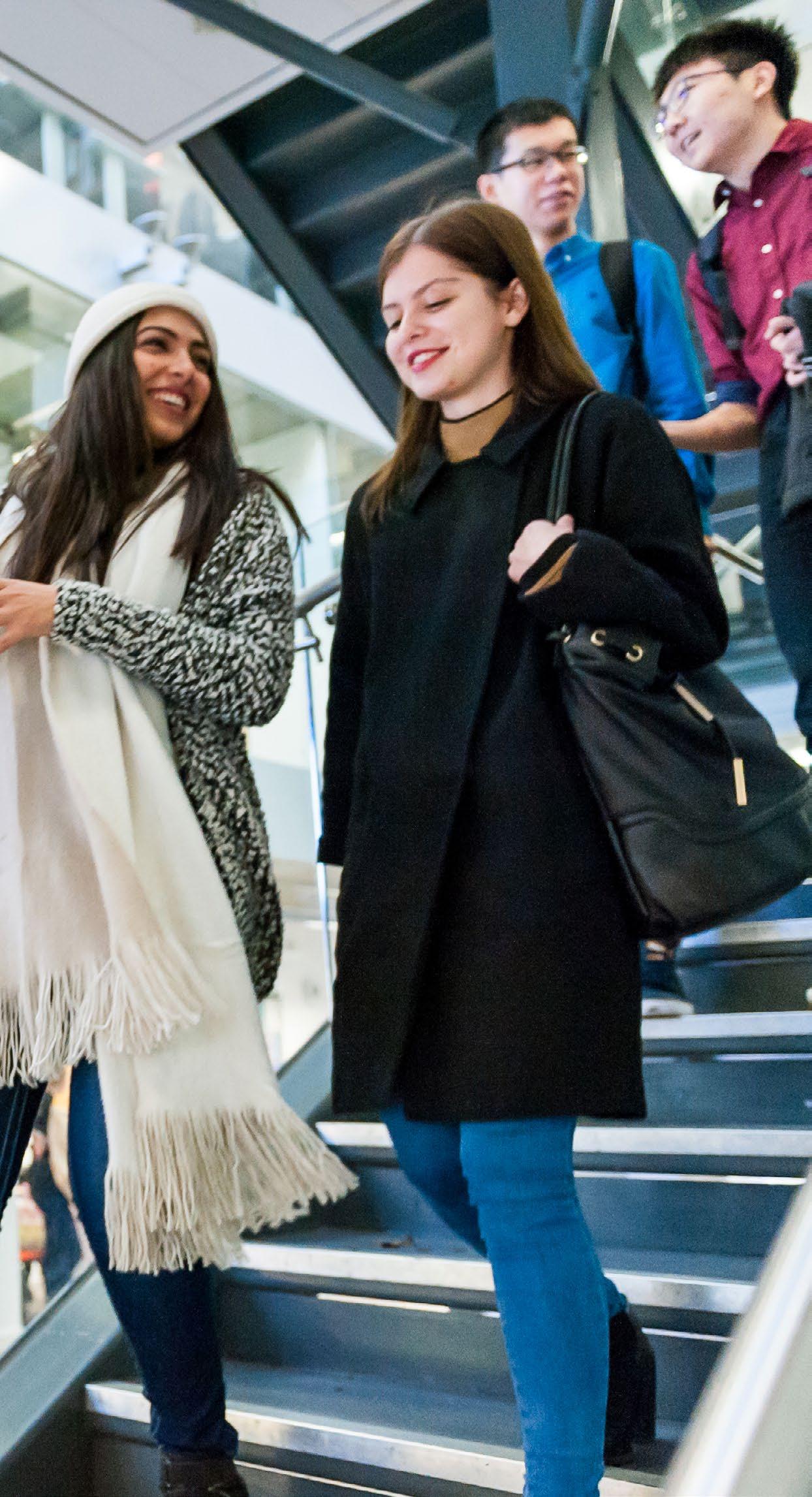
Some of the actions we took to improve the student experience during 2021-22 include:
• improving assessment and feedback content and turnaround times, providing enhanced support, guidance and clarity around assessments and improving the consistency of developmental feedback across our programmes
• supporting academics to improve their teaching effectiveness by paying attention to student feedback through module evaluation and MySurrey Voice

• launching additional shared study space, MySurrey Spark, to complement the Library, MySurrey Hive and MySurrey Nest
• investing in academic posts to bring down student-to-staff ratios across all academic departments
• communicating throughout the year to help students make the most of the education and support activities available to them.
POSTGRADUATE
21 6
NUMBER OF
Excludes specialist institutions and colleges
FOCUSING ON EMPLOYABILITY
Surrey graduates are among the most employable in the UK according to the latest Graduate Outcomes survey. The results ranked Surrey 10th in the UK for the number of graduates in high-skilled jobs – up two places from last year – and second only to Oxford University in the south-east.
A total of 95% of those who graduated in 2020 were employed or in further study, a 2% improvement on the previous year, while 87% were in graduate-level employment or study, also a 2% improvement.
These results come from a consistent focus on employability in our curriculum, our placement schemes and the support provided by our award-winning Employability and Careers team.
There was a 2.3% gap between black, Asian and minority ethnic students and their white peers in securing highly skilled employment. This was a slight increase on the previous year. We are committed to reducing this gap and will work to address the causes during the coming year.
Surrey won the National Undergraduate Employability Award for the Best University Careers and Employability Service 2022. This reflects the quality of our experiential learning opportunities, which range from laboratory and group work to short placements, through to full one-year Professional Training programmes.
We continued to run our Professional Training placements for students, increasing participation from 723 students in 2020-21 to 900 this year. This was a welcome increase but is still below pre-pandemic levels. Although we are seeing the number of opportunities rise as businesses recover from the disruption of the pandemic, we need to be aware of the impact a potential recession could have on our work placement partners.
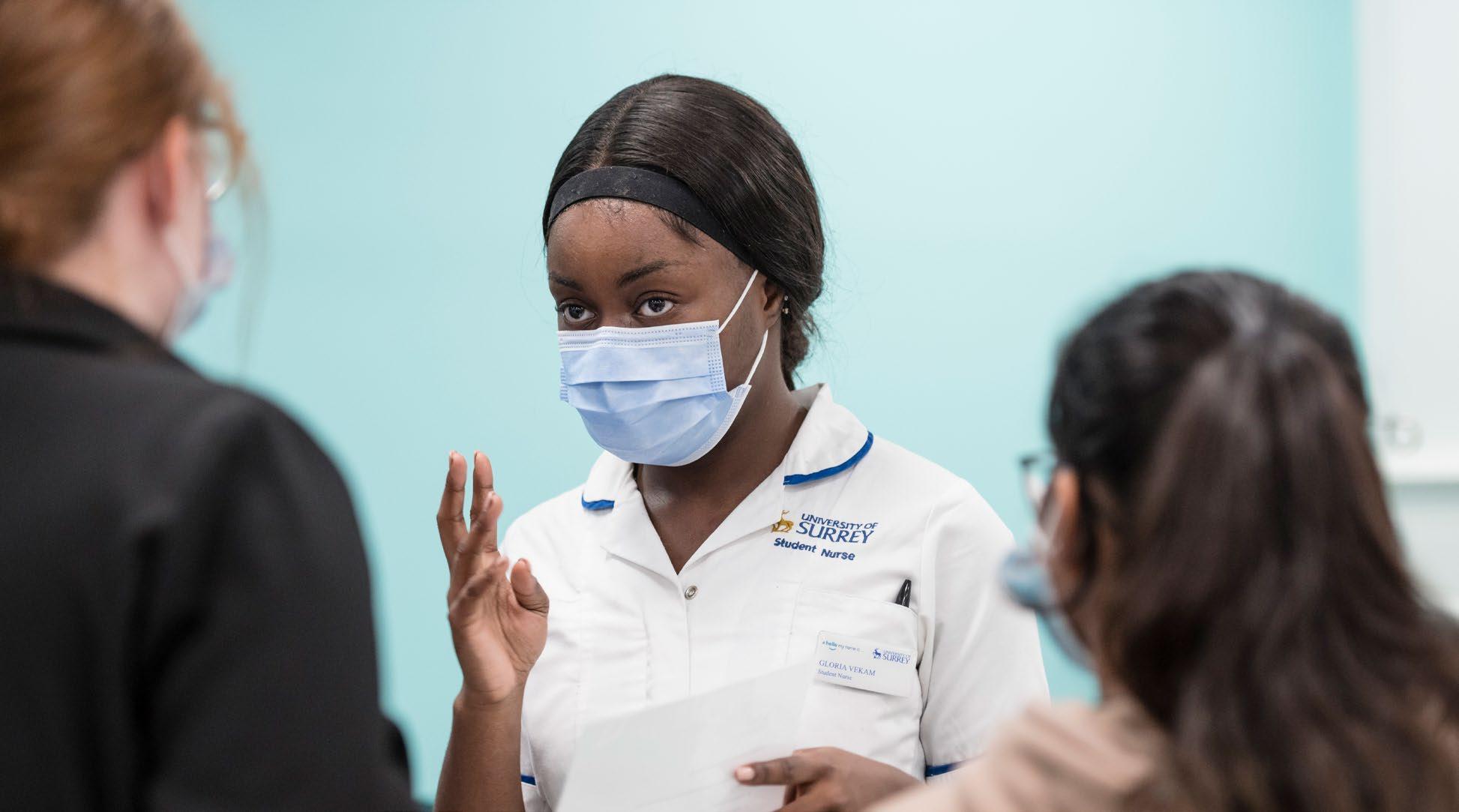
We offered 100 new University-funded internships, focused on under-represented groups to help boost their employment prospects, including internships for final-year undergraduates following graduation.
We also launched our new Surrey Graduate Futures programme, which offers full-time, year-long internships for newly graduated students. The successful candidates will work in our professional services functions, getting a head start in the world of work.
22
CONTENTS THE FINANCIALS
A TOTAL OF 95% OF THOSE WHO GRADUATED IN 2020 WERE EMPLOYED OR IN FURTHER STUDY, A 2% IMPROVEMENT ON THE PREVIOUS YEAR, WHILE 87% WERE IN GRADUATE-LEVEL EMPLOYMENT OR STUDY, ALSO A 2% IMPROVEMENT.
23
ON: EMPLOYABILITY GRADUATE OUTCOMES SURVEY 2021 Graduates who
were
history
1. Nursing professional 2. Sales and marketing professional 3. Engineering professional 4. Finance professional 5. IT professional 6. Business professional 7. Teaching professional 8. Therapy professional 9. Natural and social sciences professional 10. Health professional SURREY GRADUATES IN HIGH-SKILLED JOBS KEY FINDINGS 95% of Surrey’s graduates surveyed were in work or study 97% of those who took industry placements were in work or study 87% of graduates were in graduate-level roles 89% of graduates strongly agree that their current activity is meaningful 82% said their current activity fits with their future plans 2nd in the south-east 3rd 10th in the south (combining south-east and south-west) overall in the UK TOP 10 SURREY GRADUATE OCCUPATIONS The survey
GRADUATES
FOCUS
completed a higher education course in 2019-20
asked about their employment
15 months after they graduated in the annual survey by the Higher Education Standards Agency (HESA).
was completed by more than 400,000
from over 400 universities and colleges in the UK.
LOOKING AFTER STUDENT WELLBEING
As we emerged from the pandemic, Surrey continued to offer wellbeing MOTs for staff and students at the Centre for Wellbeing to help them build resilience and coping strategies.
Our new Residential Life team helps students living in University accommodation to navigate challenges, such as getting used to living independently, communal living and conflict resolution. They will also help students build a community and enjoy their time in halls.
We supported more students than ever with our Disability Assessor Quick Queries, which reduce waiting times for those wanting information on services for disabled and neurodiverse students.
FOCUS ON: STUDENT WELFARE AND WELLBEING

MORE WAYS TO ACCESS COUNSELLING
Our Centre for Wellbeing offers confidential one-to-one counselling for students via Teams, on the phone, or face-to-face. This gives students the option to choose the method they feel they can best express themselves.
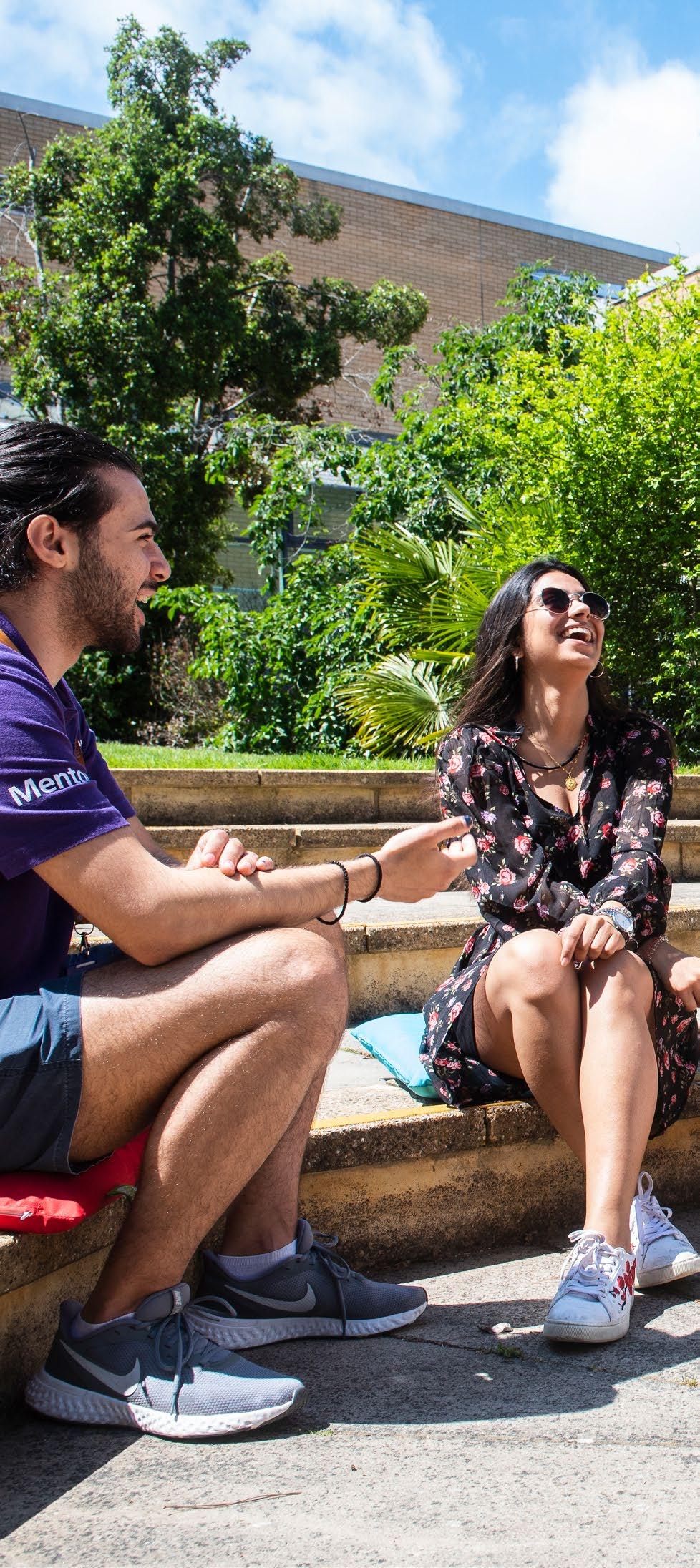
STRONGER PEER SUPPORT NETWORKS
We launched a service offering our students the chance to discuss any aspect of student life with others. The service offers non-judgmental peer support and help with accessing useful activities and services, seven days a week. As part of the service, peer support ambassadors visit new students in their accommodation shortly after they’ve arrived on campus to welcome them and answer any questions they have.
Post-pandemic, the wellbeing of students is a key priority for all institutions. We are committed to continuing to develop and improve our services in line with sector recommendations, frameworks and best practice in order to support our diverse community. We will address the challenges faced in recruiting staff to deliver the provision in this challenging landscape by working in partnership with local NHS providers.
24
ANNUAL REPORT AND FINANCIAL STATEMENTS 2021-22
CONTENTS THE FINANCIALS
FOCUS ON: STUDENT EXPERIENCE

TALKING ABOUT THE STUDENT EXPERIENCE
What makes the Surrey student experience special? We spoke to some Surrey undergraduate and postgraduate students about their experience of the University, from teaching to student support services, and life on campus after hours.
THE STUDENTS
LUANA: I appreciate the amount of support that students can get from their teachers. They’re mostly very willing to listen to student feedback and make changes to ensure learning is a good experience for everyone. There are also a lot of different study spaces. Between the Library, Sparks and academic buildings which can be booked there is always a free spot for a study session.
GEMMA: I agree. There are several study spaces that offer different levels of silence which give you different options in case you want to do a group project, study on your own or just chill out. Being a PhD student I also get assigned a PC in an office with other students, which is convenient for discussing any issue you may be having and also for socialising.
LUANA: I feel there’s been a good balance between in-person seminars and online lectures. Having lessons recorded is helpful for students who are neurodiverse, commuters or in case of illness. I also enjoyed being able to access all materials online when I was outside the UK during the pandemic.
GEMMA: The University and Student Union have been making big efforts to address wellbeing. There have been a lot of new initiatives that have helped improve student satisfaction.
Canet Tarres, PhD student in Computer Vision


LUANA: Between societies and events, there is never a boring moment. In fact, the campus facilities, like its own pub and nightclub, mean that I don’t feel the need to go to town either.
STEPHAN: I like the support services, from the on-campus GP and the Wellbeing Centre to the student life mentors, who look out for freshers in their first year at University. We also have 24/7 security around the University, which is good to know.

GEMMA: When I needed some documentation for opening my bank account, I went to MySurrey Hive and they made it possible to solve my problem very quickly.
LUANA: MySurreyNest is a good place to wind down after lectures. I appreciate having an alternative place to go other than the Hive or Library.
STEPHAN: I’ve used the new MySurrey app many times to view my semester timetable, check the status of my loaned library books, and look at the Surrey campus map. It makes life a little bit easier.
25
Gemma
Luana Vasconcelos, BA in English Literature with Creative Writing
Stephan Rapley, BSc in Civil Engineering
THE VIEW FROM THE DEANS


Surrey’s three faculties have all welcomed new deans over the last 18 months, each bringing a wealth of academic, research and commercial experience. In this section, they speak about their transition to the role and their vision for the future of their faculties.

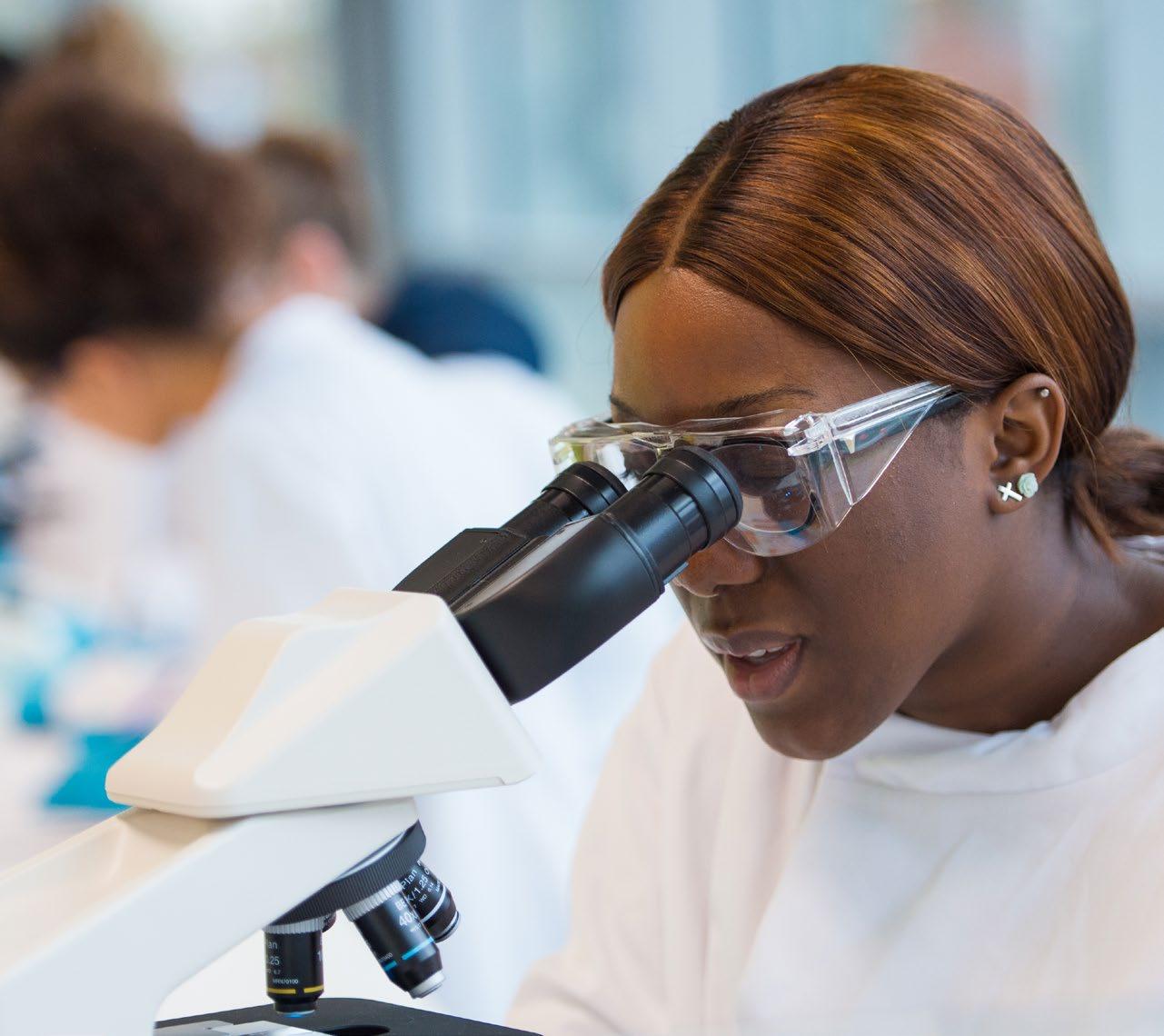
26
ANNUAL REPORT AND FINANCIAL STATEMENTS 2021-22 CONTENTS THE FINANCIALS
PAUL TOWNSEND
Faculty of Health and Medical Sciences (FHMS)
Paul joined Surrey as Pro-Vice-Chancellor, Executive Dean of FHMS in February 2021 from the University of Manchester where he was Associate Dean in the Faculty of Biology, Medicine and Health. He is an internationally renowned scientist and innovator in the field of cell stress and survival mechanisms.

I came to Surrey attracted by the University’s aspirations and its people. There is a ‘can-do’ ethos and desire to move the bar higher and achieve more, not just for our students, but also for the public good. That fits with my aspirations and experience as an academic who is focused on real-world innovation, invention and entrepreneurialism.
In the time I’ve been Dean, we have already achieved some big ambitions. Our new Medical School is about to open its doors and start training the next generation of doctors. We are seeing exciting collaborations with the NHS and attracting more funding from the National Institute for Health and Care Research (NIHR) for cutting-edge projects.
There’s great research coming out of areas such as nutrition, exercise, animal health, infection and immunity, chronobiology and sleep, digital health and intervention, and brain and behaviours. Working synergistically with our pan-university institutes, along with our wonderful partners including the Pirbright Institute, the Animal and Plant Health Agency (APHA) and the Defence Science and Technology Laboratory (DSTL), these research areas will become beacons, increasingly attractive to a wider community of research funders and policy leaders in the UK and globally.

These successes are a testament to the quality of our teaching and research. We’re investing in our academic staff, not only increasing their numbers but also providing more funding for pedagogic research, and offering more practical early career support through our new Faculty Academy.
Students are at the centre of everything we do. We are privileged to be educating the next leaders in health care and science. I want to ensure that they gain from our interdisciplinary approach, learning lessons from subject areas such as engineering or social sciences that can enhance their practice in health and medicine. Surrey’s digital innovation programmes, such as our Digital Transformation project, will also ensure students benefit from the latest technologies.
Looking ahead, our vision is for a ‘Surrey to Stanford’ transformation. By that I mean increasing not only the quality of our teaching and research but also our real-world impact, driving change for the greater good.

I want to reinvigorate our health and biomedical innovation capacity – turning research into useable, everyday innovations and delivering them at scale. This could be through a biomedical research centre of excellence that we constantly strive towards which would attract more partners, donors, investors, and most importantly, improve the student experience.
I would really like to see FHMS grow, develop new schools, new innovative teaching programmes and to drive more real-life, impactful medical, scientific and veterinary expertise. I know we can do this and the FHMS community and culture is there to deliver.
27
LOOKING AHEAD, OUR VISION IS FOR A ‘SURREY TO STANFORD’ TRANSFORMATION. BY THAT I MEAN INCREASING NOT ONLY THE QUALITY OF OUR TEACHING AND RESEARCH BUT ALSO OUR REAL-WORLD IMPACT, DRIVING CHANGE FOR THE GREATER GOOD.
Everyone I’ve met since I came to Surrey is passionate about what they do and eager to work at a very high level. Being surrounded by so many dedicated colleagues has given me a head start since I became Dean earlier this year.
Shortly after I joined, I did a roadshow of the schools and departments, asking them to present their strategies, plans and aspirations for the future. What really came across from those presentations was the desire to work in a collegiate, collaborative way. Establishing and fostering those connections is now a major theme of my leadership and the forthcoming faculty strategy.
I also want to build stronger relationships with other institutions, government bodies and industry to supercharge our reputation for innovation – translating our excellent research into inventions, innovations and public knowledge must make a difference for the wider economy and society.
One example would be continuing to raise Surrey’s profile as a leader in space technology. Our Space Centre does excellent research and teaching in space engineering. But we could do more given the current strong UK government support.
There’s also a lot of potential in the sustainability arena as demonstrated by the forthcoming launch of our pan-University Surrey Institute for Sustainability. This will build on a range of sustainability research and education across the campus from policy interventions
BOB NICHOL
Bob is one of the UK’s leading astrophysicists. Before joining Surrey, he was Pro-Vice Chancellor for Research and Innovation and Director of the Institute for Cosmology and Gravitation at the University of Portsmouth. He took up his role as Pro-Vice-Chancellor and Executive Dean of FEPS in early 2022.
around plastic pollution to renewable energy sources. We need to do more, and on a larger scale, to deliver on a net-zero campus and world. This autumn, we’ll consult on the new faculty strategy, which will help us to be more connected with colleagues, students and partners, working together to create critical mass in a host of new and existing fields of endeavour. We also need to optimise our work and space, embracing new ways of working after the pandemic and providing the right incentives to deliver a host of activities across teaching, learning, innovation and research. I’m excited to be revisiting the schools during the next few months to talk more about this strategy and get colleagues involved.
 Faculty of Engineering and Physical Sciences (FEPS)
Faculty of Engineering and Physical Sciences (FEPS)
28 ANNUAL REPORT AND FINANCIAL STATEMENTS 2021-22 CONTENTS THE FINANCIALS
I ALSO WANT TO BUILD STRONGER RELATIONSHIPS WITH OTHER INSTITUTIONS, GOVERNMENT BODIES AND INDUSTRY TO SUPERCHARGE OUR REPUTATION FOR INNOVATION – TRANSLATING OUR EXCELLENT RESEARCH INTO INVENTIONS, INNOVATIONS AND PUBLIC KNOWLEDGE MUST MAKE A DIFFERENCE FOR THE WIDER ECONOMY AND SOCIETY.
BRAN NICOL
Faculty of Arts and Social Sciences (FASS)
Bran is Professor of English Literature at Surrey. He was appointed Interim Pro-Vice-Chancellor and Executive Dean of FASS in April 2022, having previously been Head of the School of Literature and Languages and serving on the Faculty’s Executive Board for several years.

FASS prepares students for work that makes a real difference in many walks of life. It includes some of the key disciplines that shape the modern world, from law and politics to business and economics, from sociology and hospitality to literature and the performing arts.
Our role as a faculty is to equip our students with the practical skills they need to succeed and thrive in these diverse fields – while also helping them think about the contemporary world and how they can have a positive impact on society through their chosen professions.
Since becoming Interim Dean, I’ve been awestruck by the sheer energy and range of activities across the disciplines, the talent among our academics and professional staff, and the quality of work being produced. Not only academic work and research projects – but the end of year shows in music, film production, creative writing and acting, which showcase amazing creativity among our students.
I’m proud that we achieve high rates of employability across our arts and humanities subjects, as well as in business and social sciences. That success comes partly from Surrey’s Professional Training Year placement programme (PTY), which is consistently rated among the best in the UK. But it’s also from the cutting-edge, contemporary ethos we have in both our teaching and research, and the supportive, collegiate, can-do culture within FASS.
It’s also a product of the support we offer students. That means good pastoral care but also supporting them to be professional in their outlook, and giving them a sense of ethics and what it means to be a responsible, respectful member of society and any work environment.
Looking ahead, I want to increase our reputation for producing research that has meaningful impact in both academic and non-academic spheres.
I’d like to increase our success in attracting external funding, while also engaging industry partners, and further enhancing our ability to equip our students to go out and make a difference to the world. I’d also like to see more research and taught programmes that tap into cross-cutting themes affecting young people’s lives – from the digital society to energy and the environment, sustainability, the nature of future society and culture, and the value of arts and literature –adding relevance and giving students a sense of improving their future.
Overall, I’d like to consolidate our position as a top 10 institution for student satisfaction and ensure that staff at all levels find working in FASS fulfilling, inspiring, collegiate and supportive.
29
LOOKING AHEAD, I WANT TO INCREASE OUR REPUTATION FOR PRODUCING RESEARCH THAT HAS MEANINGFUL IMPACT IN BOTH ACADEMIC AND NON-ACADEMIC SPHERES.
RESEARCH AND INNOVATION
PRIORITY: FOCUS RESEARCH INTENSITY

SUMMARY
We achieved some excellent results in 2021-22, not least rising 12 places in the Research Excellence Framework, the independent system for assessing the quality of higher education research when measured by overall grade point average (GPA).
Two new pan-University research institutes were formed, one of which –the Institute for People-Centred Artificial Intelligence – launched during the year.
We significantly increased our research activity in bidding and outputs, and increased the impact of our research with an all-time high citation index score.
We used funding from government and UK Research and Innovation (UKRI) to invest in research projects and infrastructure, as well as enhancing our research culture. And we continued to drive innovation, creating wider societal and economic benefits from our research outputs.
Research awards increased significantly, although income from research grants and contracts was slightly lower year-on-year. This was mainly due to lower levels of bidding during the pandemic, which translated into fewer research grants in 2021-22. We expect income to recover as the high level of bids and submissions made throughout 2021-22 starts to feed through.
2021-22 HIGHLIGHTS
Up 12 places in REF 2021 to 33rd in the UK (based on overall GPA).
£44.4m in research awards, an increase of £11.2m from 2020-21.
We helped secure £53m growth funding for our spin-outs, graduate start-ups and other companies in our innovation ecosystem.
1.86 field-weighted citation index, a key measure of research impact.
30
WE SIGNIFICANTLY INCREASED OUR RESEARCH ACTIVITY IN BIDDING AND OUTPUTS, AND INCREASED THE IMPACT OF OUR RESEARCH WITH AN ALL-TIME HIGH CITATION INDEX SCORE.
12 £11.2m £53m 1.86 ANNUAL REPORT AND FINANCIAL STATEMENTS 2021-22 CONTENTS THE FINANCIALS
PROVING OUR RESEARCH EXCELLENCE
Surrey moved up to 33rd in the UK rankings for overall research quality in the Research Excellence Framework 2021 (REF) when measured by Grade Point Average (GPA), which was published in 2022 after a pandemic delay.
More than 40% of Surrey’s research was rated as world-leading, the highest possible rating, up from 22% when REF last took place in 2014. The University is now also ranked in the top 20 in the UK for the overall quality of research outputs – research papers and other published works as measured by GPA.
REF is the UK’s system for independently assessing the quality of research in higher education institutions and has a direct impact on the allocation of future government research funding.
Highlights from Surrey’s REF 2021 results include:
TOP 20
FOR RESEARCH POWER 6TH
the quality and scale of the University’s health research7
TH

TH FOR RESEARCH POWER 15TH the quality and scale of the University’s engineering research8
Rated in the for the quality of our RESEARCH OUTPUTS for the quality and for the real-world impact of our ECONOMICS RESEARCH9
While these achievements are considerable, REF also showed that Surrey has the opportunity to enhance its position further with greater emphasis on the impact of its research. This is an area of focus in the current strategy and we expect to see significant improvements in the next REF exercise.
Our field-weighted citation index for the full year 2021 was at an all-time high of 1.86. This measures how many citations our research receives compared to other similar published work, and is another strong indicator of the quality and impact of our research.
7 When measured using GPA for Unit of Assessment 3; Allied Health Professions, Dentistry, Nursing and Pharmacy
8 When measured using GPA for Unit of Assessment 12; Engineering
9 When measured using GPA for Unit of Assessment 16; Economics and Econometrics
31
10
6
INVESTING FOR THE FUTURE

Surrey launched the Institute for People-Centred Artificial Intelligence (AI) in November 2021, which will pioneer crossdisciplinary research on how to use AI for public good.

By December 2021 more than a hundred AI fellows were appointed to the Institute illustrating the existing strengths in this area across the University. These fellows were joined in early 2022 by 12 new academic appointments to bring additional capacity in key domains. A cohort of postgraduate students have started work in autumn 2022.
We also announced the formation of the Surrey Institute for Sustainability, which is due to launch in late 2022. It has already recruited a new world-class Director as well as a Head of Operations and Partnerships.
As part of our Forward thinking. And doing strategy, we continued to recruit researchers into areas of research concentration across the faculties. We expect to see long-term returns from these investments in terms of research quality and grant funding.
32
ANNUAL REPORT AND FINANCIAL STATEMENTS 2021-22 CONTENTS THE FINANCIALS
FOCUS ON: ARTIFICIAL INTELLIGENCE
NEW INSTITUTE PUTS PEOPLE AT THE HEART OF AI
Surrey opened the new Institute for People-Centred AI in November 2021 to help shape the future of AI for public good and address the grand challenges the technology poses for people and society.
The Institute will build on the University’s 30 years of excellence in AI research and link this expertise with a range of disciplines where AI is beginning to have a transformative impact, including engineering and physical sciences, health, law, business, finance and the social sciences.

Through this cross-disciplinary fusion of ideas and research, the Institute will look for answers to the five grand challenges identified by UKRI, the AI Council, Society 5.0 and the United Nations Sustainable Development Goals.
How can we ensure that AI is of benefit to all?
How can AI improve learning and access to trusted information?
How can AI improve health and wellbeing?
How can AI systems understand, interact and communicate naturally with people?
How can AI transform business and the workplace for the benefit of society?
The new Institute will also work in partnership with industry, the public sector, government and national AI organisations to deliver a step-change in AI research, training and innovation.
33
FOCUS ON: INNOVATION

SCALING INNOVATION FOR SOCIETAL IMPACT
We began a scaling innovation workstream as part of our Forward Thinking. And doing strategy. It focuses on giving researchers the skills, motivation and capacity to innovate, and growing innovation outputs through a range of ongoing projects.
INNOVATION SABBATICALS: funding sabbaticals for academics so they can focus on creating impact from their research outputs in society, and create knowledge exchange pathways.
INDUSTRY INNOVATION FELLOWS: enabling employees of our industry partners to visit the campus for extended periods to develop links with researchers and enhance our innovation ecosystem.
INDUSTRY-INFLUENCED UNDERGRADUATE CURRICULUM: making sure the skills we are teaching are what employers need, and that they will help industry thrive and support our innovation ecosystem to grow CROSS-SELL: training non-research staff who work with industry to develop opportunities for research and innovation collaborations and knowledge exchange partnerships.
INNOVATION VISIBILITY: installing knowledge exchange exhibits and displays in highly visible locations on campus to inspire students and staff to take part in innovation projects.
We have continued to raise awareness of our support for innovation, creating easy-to-read guides for the website and engage the external community through news, case studies and events.
34
MOTIVATION CAPACITY SKILLS INNOVATION ANNUAL REPORT AND FINANCIAL STATEMENTS 2021-22 CONTENTS THE FINANCIALS
MAINTAINING OUR RESEARCH INCOME


Overall, research and innovation income from all sources held up well in the financial year 2021-22.
Research grants and contract income fell slightly to £41.3m, compared to £43.4m in 2020-21. However, this result was £1m higher than budgeted expectations.
Awards and bidding both showed marked increases on the previous year, returning to pre-pandemic levels. Awards, at £44.4m, are significantly up from £33.1m in 2020-21, including grants transferred in. Bidding was on a par with the previous best-ever year. We need a continued focus on growing the pipeline of bids so that we can increase research activity and meet our future plans.
Our improved awards performance was partly thanks to measures taken in response to the disruptive impact of the pandemic. These included:
funding for postgraduate researchers and post-doctoral research assistants to support academic leads on bid development of large strategic bids
providing additional resource to provide short-term specialised EU bidding support strong messaging around the need for high-quality bidding to be prioritised reviewing and prioritising existing bids in the pipeline redoubling efforts to raise awareness of funding opportunities developing forecasting methodologies and dashboard to better track progress against targets.
35
AWARDS AND BIDDING BOTH SHOWED MARKED INCREASES ON THE PREVIOUS YEAR, RETURNING TO PRE-PANDEMIC LEVELS.
THE FUTURE SAYS SURREY FUNDRAISING CAMPAIGN

The University launched an ambitious new global fundraising campaign, The Future Says Surrey, during 2021-22. It aims to raise £60 million to support our students and help Surrey continue making positive impacts on society, confirming us as one of the UK’s leading research and educational institutions.


A first for the University in terms of scale and ambition, the campaign will direct significant new funds into key areas of research. Building on the University’s strong track record in developing ground-breaking innovations, from barcode technology to affordable miniature satellites, the money raised will support a wide range of emerging research, including:



upskilling the labour force in the AI era, finding ways for AI to automate tedious tasks that free up time for humans to think more creatively tackling the diagnosis and treatment of those suffering from long-term conditions such as cancer and dementia creating the next generation of solar energy capture and storage technology supporting the work of the Global Centre for Clean Air Research and the Centre for the Understanding of Sustainable Prosperity.

ANNUAL REPORT AND FINANCIAL STATEMENTS 2021-22 CONTENTS THE FINANCIALS
SUPPORTING POSTGRADUATE RESEARCH
The University ranked 13th overall in the AdvanceHE Postgraduate Research Experience Survey (PRES) in 2022, the same ranking we achieved in 2021. Surrey was ranked 6th for facilities, resources and online provision out of 58 other institutions, an improvement from 20th in 2021.
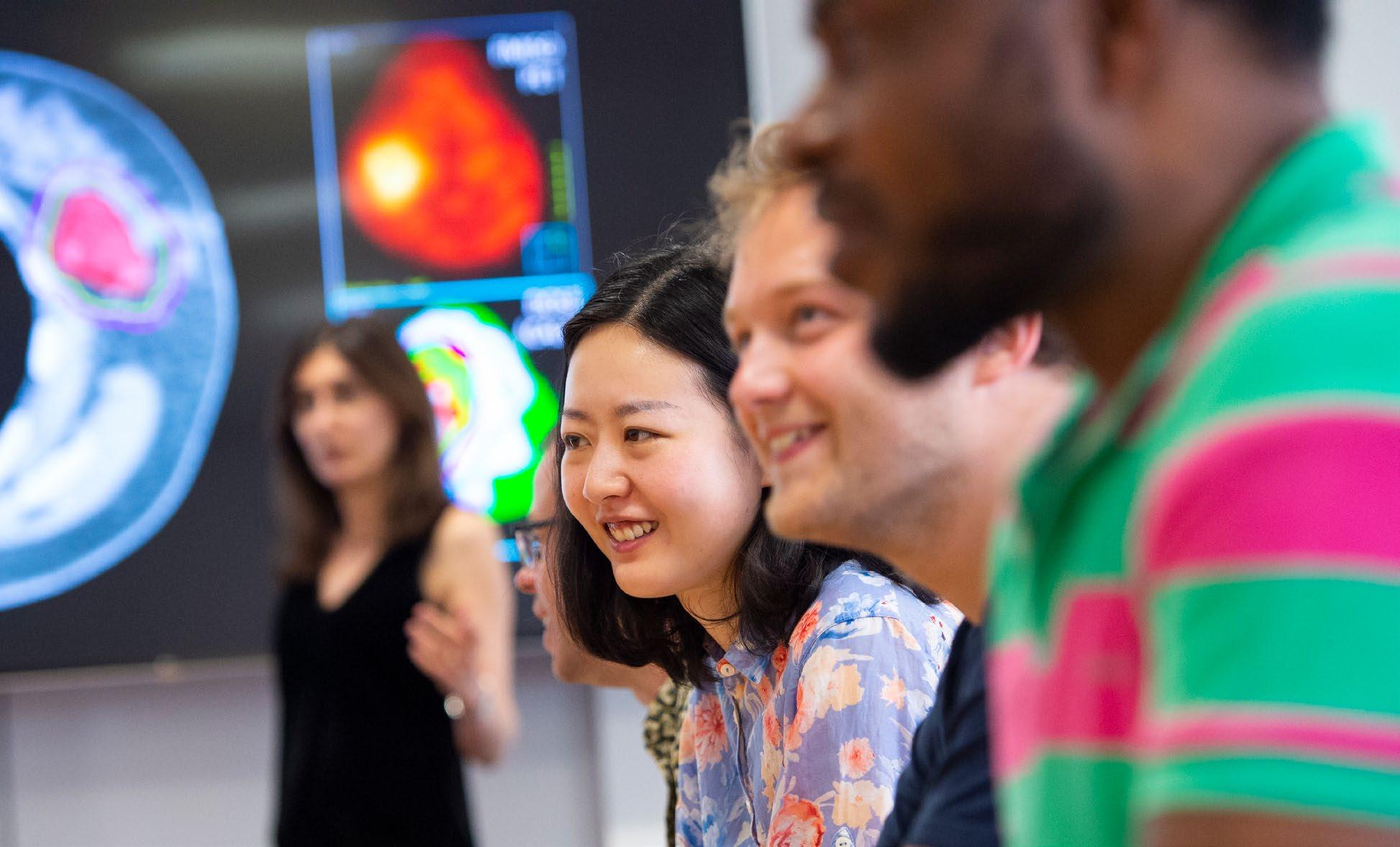
Our ranking for postgraduate research support improved from 12th to 10th, showing that investing in our postgraduates is having a direct impact on their experience. PRES is the only higher education sector-wide survey to gain insight from postgraduate researchers directly.
Surrey’s Doctoral College commissions an in-depth statistical analysis of the responses to PRES each year to identify the issues that matter most to our postgraduates. We develop action plans from this analysis and publish them so postgraduates can see what is being done in response to their feedback.

The success of our researcher development can be seen in our consistently high pass rate at the first attempt in viva. In 2021-22 this was 94%, resulting in 216 postgraduate research awards.

THE SUCCESS OF OUR RESEARCHER DEVELOPMENT
CAN BE SEEN IN OUR CONSISTENTLY HIGH PASS RATE AT THE FIRST ATTEMPT IN VIVA.
IN 2021-22 THIS WAS 94%, RESULTING IN 216 POSTGRADUATE RESEARCH AWARDS.
37
PROMOTING DIVERSITY AND INCLUSION
offering Studentship Awards specifically aimed at under-represented groups, including black British UK postgraduates and women within disciplines traditionally dominated by men
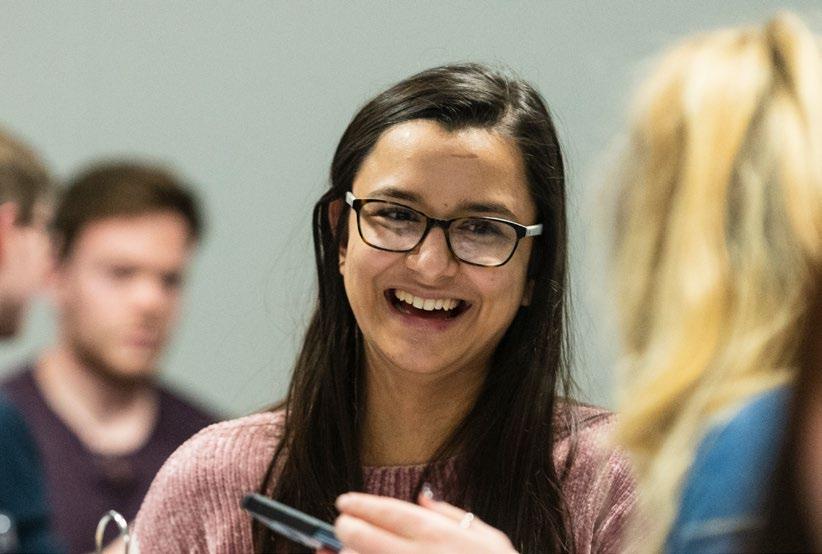
launching the Surrey Black Scholars Studentship Award programme, aimed at reducing structural inequalities in postgraduate research and improving participation for black British students decolonise research development training creating an EDI resource bank developed by our Doctoral College to build competency and knowledge within our community granting student enterprise ‘founderships’ aimed at LGBTQ+ student and graduate entrepreneurs.
We are also developing an EDI monitoring process for research funding applications, looking at physical and digital accessibility of research and innovation services.
FOSTERING OPENNESS

AND INTEGRITY IN RESEARCH
We increased our efforts to make our research and innovation activities more equal, diverse and inclusive (EDI). Steps we’re taking to address under-representation of particular groups include: Surrey is one of a consortium of 18 universities helping to drive the uptake of open research practices across the sector, aligned with the government’s R&D Roadmap.
The project, which began in September 2021, is backed by £4.5 million from Research England Development (RED) Fund. Surrey is contributing to several workstreams and working groups, as well as the development of examples of good practice and resources across disciplines.
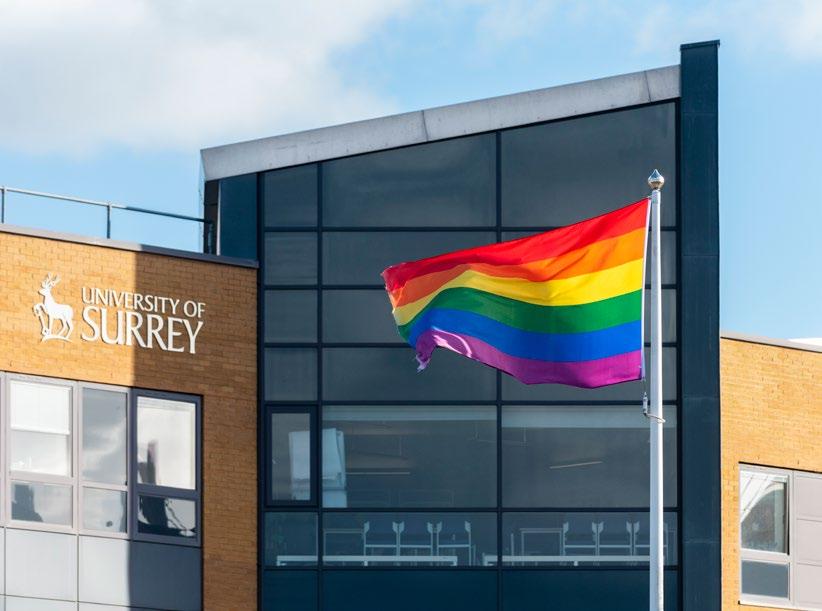
Open research initiatives during 2021-22 included: taking part in the international Open Access Week
launching an open research in practice module, an open research website and an open research action plan holding the inaugural Surrey annual open research lecture.
We also focused on enhancing our research culture during 2021-22. Funding was used to: invest in online training courses in ethical research, research integrity and supervising doctoral studies provide undergraduate internships accelerate and evaluate the effectiveness of current and future research culture initiatives.
38
ANNUAL REPORT AND FINANCIAL STATEMENTS 2021-22 CONTENTS THE FINANCIALS
BUILDING STRONG RELATIONSHIPS
PRIORITY: CREATING THE
FOR SUCCESS
SUMMARY
CONDITIONS
During 2021-22 the University continued to build relationships with business, industry, alumni, the local community and government and create positive impacts for local communities and the wider economy. We fostered more than 70 innovative new businesses on our Surrey Research Park and received funding to develop our research into a range of real-world applications through the Surrey Living Lab.
Within Guildford, we strengthened our relationships with the local community, supporting businesses and residents to understand how to improve their sustainability and reduce their impact on the local environment.
With the return to face-to-face events, we were able to expand our links with alumni, supporters and potential donors in support of our ambitious The Future Says Surrey fundraising campaign. As a result of this renewed activity, we secured £7.74 million in pledges of philanthropic support.
2021-22 HIGHLIGHTS
£13.2 million secured for tech start-up companies through our SETsquared Surrey incubator programme.
£7.74 million income pledged in philanthropic support from alumni and donors.
42% of Surrey Research Park businesses surveyed interact with University academics with 30% interacting with the Surrey Business School.

£13.2m £7.74m 42%
39
RESEARCH AND INNOVATION PARTNERSHIPS

Surrey works with a wide range of external partners to develop our research into real-world applications that deliver economic benefits for our communities. In 2021-22 the University was awarded funding to enable joint research and innovation activities with external organisations and the general public. Some of the projects we supported through Surrey’s Living Lab include:
CARBON REDUCTION INCENTIVES: our environmental psychology team and Sociology department worked with Surrey County Council and service provider ThamesWey to better understand why some residents don’t follow through with council-run carbon-reduction programmes, such as subsidised insulation and solar panel schemes. Through data analysis and interviews with residents in existing schemes, the research will look for answers that help to target these incentives more effectively.
SMART BUILDING OCCUPANCY: our estates space planning team and the Centre for Environment and Sustainability partnered with a local business using smart occupancy monitoring technology to assess how staff use existing office space. The research will help organisations make better use of space for post-Covid hybrid working and could help to shape future office redesign and reconfiguration.
ACTIVE TRAVEL: we’re working with Surrey Climate Commission, Surrey County Council and several local transport organisations to better understand the barriers to active travel modes such as cycling, walking and wheeling. The results will support local policy development and plans for infrastructure improvement.
SUSTAINABLE BUSINESS: a collaboration between our Innovation Strategy department and Zero Carbon Guildford, a community interest organisation, will pilot a sustainable business network for Guildford. The aim is to lower the environmental impact of businesses and social enterprises in the area, while helping to build resilience to medium and long-term threats posed by climate change.
40
COLLABORATION BETWEEN
INNOVATION STRATEGY
ANNUAL REPORT AND FINANCIAL STATEMENTS 2021-22 CONTENTS THE FINANCIALS
A
OUR
DEPARTMENT AND ZERO CARBON GUILDFORD, A COMMUNITY INTEREST ORGANISATION, WILL PILOT A SUSTAINABLE BUSINESS NETWORK FOR GUILDFORD.
SUPPORTING ENTERPRISE GROWTH
Surrey supports innovative start-up businesses by offering them office space in the Surrey Research Park. This gives them the opportunity to collaborate with researchers to develop their products and grow their businesses, within a supportive innovation ecosystem of collaborating companies.
Innovation ecosystem highlights include:
• 21 collaborative innovation grants completed with space sector SMEs, accelerating their technology commercialisation through knowledge exchange
• Three projects awarded funding through our Collaborate 22 competition open to all companies on the Surrey Research Park
• Four new spin-out companies created based on University research output
• Nine new student enterprise companies founded by graduates
Also located at Surrey Research Park is SETsquared Surrey, our business incubator. The SETsquared partnership drives commercialisation and business growth in partnership with the universities of Cardiff, Southampton, Exeter, Bristol, Bath and Surrey.
OUR INCUBATION
ACTIVITY
AT A GLANCE 2021-22
• Ran 69 events, a mix of clinics, workshops, masterclasses and networking events
• Incubated 72 companies
• Provided 500+ hours of business support through events and 1-2-1 bespoke meetings with entrepreneurs in residence and mentors
• Supported 20+ companies on the Blockstart Programme
• Supported 30 start-ups on our entrepreneurs programme
• Helped members raise £13.2 million in investment
• Supported 258 member jobs
• 38 mentors engaged in the network
• 25+ Surrey student placements solving member innovation challenges
STRENGTHENING REGIONAL INDUSTRY CLUSTERS
The University invested money and expertise to strengthen local industry clusters in partnership with industry, other universities and local authorities.
SPACE INDUSTRY: we provided active leadership of the local space cluster and worked with the University of Portsmouth, the South Coast Centre of Excellence for Satellite Applications, and regional space technology companies to create a new focused cluster called Space South Central.
ANIMAL HEALTH INDUSTRY: we helped to strengthen the region’s reputation as a global centre of excellence for animal health innovation working with regional animal health industrial partners, specialist government agencies, such as the Animal Plant Health Agency and the Veterinary Medical Directorate, and other research institutions, such as The Pirbright Institute.
GAMES INDUSTRY: we provided financial sponsorship and support for the Guildford Gaming Festival, in collaboration with the EM3 Local Enterprise Partnership.
41
SUPPORTING OUR LOCAL COMMUNITY
As autumn term 2021 began, we were able to return to the programme of in-person local community events we ran pre-pandemic.
We once again hosted events in the international Pint of Science festival, which brings science out of the lab and into bars, cafes and public spaces. More than 250 local people came along to hear presentations from 25 Surrey academics at two town centre venues.
During the Queen’s Platinum Jubilee, we welcomed the community onto campus to share in our Free Fest celebrations. More than 3,000 local people, staff, families and students enjoyed two days of festivities.

In our annual Surrey Showcase, local civic leaders joined with members of the community, donors, staff, students and alumni, to celebrate the highlights of our achievements over the preceding year.
As students returned to campus, we took action to minimise the impact on local neighbourhoods, particularly after dark. This included a Shhh campaign with posters asking students to be considerate of our neighbours.
We also boosted our street marshal patrols in local areas to keep students safer and quieter after dark and ease neighbourhood tensions. And we continued to work closely with resident groups, Guildford Borough Council and Surrey Police to manage the impact of our student community around the town.
Back on campus we re-launched our cross-university public engagement forum, with a focus on knowledge exchange. Chaired by Professor Jim Al-Khalili, the forum met quarterly, generating ideas on how to boost collaboration and increase the impact of our research through communication and engagement with the public.
OTHER HIGHLIGHTS OF THE YEAR INCLUDED:
• Hosting a live debate on climate and biodiversity in the Surrey Hills area of outstanding natural beauty (AONB) as part of the annual Surrey Hills Symposium.
• Holding a successful public exhibition and stakeholder engagement event on the planning and delivery of the University solar farm project with SSE energy, which will make a significant contribution towards the University’s net-zero commitment.
• Publishing our Your University newspaper twice to a local audience of over 42,000 in the Guildford GU1-GU4 postcodes, plus online and at campus locations.
• Setting up a brand-new liaison group for an area of Guildford close to the University, which resulted in improved relations with local residents.
• Developing our first Civic University Agreement, bringing a more strategic approach to working with regional and local civic partners for the benefit of all our communities.
42
ANNUAL REPORT AND FINANCIAL STATEMENTS 2021-22 CONTENTS THE FINANCIALS
CASE STUDY
EMPOWERING THE COMMUNITY IN SOUTHWAY
The University is part of a project called Greening Southway, which aims to empower local residents to improve their local environment.
The Southway area of north-west Guildford suffers from a number of social and environmental issues such as littering and neglect. In the first phase of the project, our environmental psychology research group are working to better understand the social, environmental and health challenges facing the community.


We’ve started to develop networks and knowledge exchange activities. We ran two successful stakeholder events, streamed a webinar on the future of the area, and have a continued web presence through a website and YouTube channel.
Our aim is to build links with the community and empower them to improve and maintain the area themselves – by sharing insights from our research, offering collaborative support and potential funding through the Your Fund Surrey scheme.
We’re also working to build links between the local community and the University’s student population, for example by embedding a placement student within the Greening Southway project on an annual basis.
43
OUR AIM IS TO BUILD LINKS WITH THE COMMUNITY AND EMPOWER THEM TO IMPROVE AND MAINTAIN THE AREA THEMSELVES – BY SHARING INSIGHTS FROM OUR RESEARCH, OFFERING COLLABORATIVE SUPPORT AND POTENTIAL FUNDING THROUGH THE YOUR FUND SURREY SCHEME.
ALUMNI, SUPPORTERS AND DONORS


After the challenges of a pandemic hit 2020-2021, our Advancement team were able to re-engage with our alumni, supporters and donors face-to-face.
The highlight of the year was the launch of The Future Says Surrey, our global campaign, which aims to raise £60 million to turbocharge our key research strengths and support our students. Our Chancellor, HRH The Duke of Kent, was the guest of honour at the official ceremony to begin this initiative, joined by staff, students, alumni and supporters.
We also enjoyed a return to in-person events, with alumni get-togethers in London, and further afield in Dubai, Kuala Lumpur, Singapore, Seattle and San Francisco.
More than 3,300 people have registered on our careers networking platform, SurreyConnects, which we launched in 2021. The platform gives alumni a chance to connect with current students and offer them mentoring and advice. We’ve heard encouraging stories of people securing jobs thanks to help they’ve received here.
We celebrated the achievements of three former Surrey students in the Vice-Chancellor’s Alumni Awards. Dr Shabnum Sarfraz was recognised for her work implementing large-scale health reforms in Pakistan, Sarah de Carvalho MBE for tackling child trafficking, and Guildford School of Acting graduate and Hollywood star Ella Balinska, who has funded a scholarship for under-represented groups.
We continued to champion educational access through fundraising from alumni and supporters, reaching a total of £100,000 for the Battersea Scholarship, which supports students estranged from their families. This means we can fund eight of these awards during the coming years.
As part of ongoing research funded by a gift from the Templeton Foundation in 2021, we held our first Blue Sky Thinking day-long workshop on the ‘arrow of time’. The research explores the nature of time and how the passage of time manifests in inanimate objects and living organisms. Led by Professor Jim Al-Khalili, the workshop sessions included leading theoretical physicists from around the world.
44
ANNUAL REPORT AND FINANCIAL STATEMENTS 2021-22 CONTENTS THE FINANCIALS
CASE STUDY
£2 MILLION TO SUPPORT BIODIVERSITY AND CLIMATE RESEARCH
Two significant philanthropic grants will support Surrey research projects aimed at reversing the decline in biodiversity and building a climate-positive economy.
The People’s Postcode Lottery’s Dream Fund awarded £1.25 million to a Surrey-based project using artificial intelligence (AI) and satellite technology to monitor biodiversity and restore wildlife habitats.
In the Space4Nature project, Surrey’s experts in earth observation will use ultra-high-resolution images from satellites and drones and combine them with artificial intelligence (AI) to map a variety of habitats in Surrey.
This will allow the team to spot where dangers and threats to wildlife lie and find solutions to protect nature, such as where to create wildlife corridors and wildflower and insect superhighways. The scheme will also recruit 1,500 volunteers to help monitor wildlife habitats in Surrey.
Meanwhile, the Laudes Foundation gave £755,000 to fund the work of Surrey’s Centre for the Understanding of Sustainable Prosperity (CUSP) on building a climatepositive economy. The money will help CUSP develop research in three areas:

Understanding how we can prosper within the limits of a finite planet.
Building a post-pandemic economy built on principles of care, justice and sustainability.

Learning lessons from successful change initiatives and scaling them up across society.
It will also fund CUSP’s advocacy with policymakers and business leaders, including high-level briefings and meetings with MPs, MEPs and CEOs in the UK and Europe.
45
AS A


RESULT
OF THESE
EFFORTS,
THE STAFF ENGAGEMENT SCORE IN OUR ANNUAL PEOPLE SURVEY REACHED 74%, UP 5% ON THE PREVIOUS YEAR.
VALUING OUR PEOPLE
PRIORITY: CREATING THE CONDITIONS FOR SUCCESS
SUMMARY
During 2021-22 we focused on engaging with colleagues across the University, enabling people to get their voice heard, and using their feedback to drive change and improvement. As a result of these efforts, the staff engagement score in our annual People Survey reached 75%, up 1% on the previous year.
Surrey continued to offer blended working and staff have enjoyed a better balance of spending time on campus and working remotely, where that’s been possible in their roles.
The year saw the launch of new leadership and management development programmes and more personal and professional development opportunities for all our colleagues.
We refreshed our University values and launched a new awards scheme to recognise colleagues who demonstrate those values in their work.
Action plans to advance race and gender equality and a new harassment and bullying procedure will help us deliver our equality, diversity and inclusion (EDI) goals.
2021-22 HIGHLIGHTS
75% staff engagement based on responses to the annual People Survey.
New pulse survey ensures a constant focus on follow-up actions between People Surveys.
Race Equality Charter bronze award recognises our efforts to advance equality in higher education.
1,000 colleagues recognised in our new Values Award Scheme.
46
75% 1,000 ANNUAL REPORT AND FINANCIAL STATEMENTS 2021-22 CONTENTS THE FINANCIALS
Surrey has a total of 3,064 full and part-time colleagues working in a wide variety of roles across the University. Our workforce includes 1,420 teaching and research staff and 1,644 support staff in functions such as finance, IT, marketing, administration, technical and experimental support.
Over the last two years all of our colleagues have made an enormous effort to deliver a high-quality education for our students, despite the disruption caused by the pandemic. This not only helped to keep the campus open, but also led to significant improvement in our National Student Survey (NSS) and Research Excellence Framework (REF) results. In 2021-22, we made a one-off ex-gratia bonus payment to all staff to recognise and reward this contribution.
Moving forward, we’re acutely aware that our people are facing the same inflationary pressures that we face as an organisation. As part of our efforts to address this issue, we will assess the whole benefits package we offer to staff and how we communicate our offering.
IMPROVING STAFF SERVICES AND SUPPORT
Hearing what colleagues are thinking and doing is critical to providing them with the right support and services to meet their needs. In 2021-22, we launched a new Colleague Voice strategy based on proactive and continuous engagement with staff across the year.
As part of this, we created a new quick-response pulse survey. This will help us understand where we are doing well and where we need more action to implement changes identified as priorities in the annual People Survey.
Leadership is also a key driver for staff engagement and supporting colleagues’ career aspirations. During the year we redesigned the Surrey Leaders programme and launched a new development programme to improve the quality of leadership our people receive.
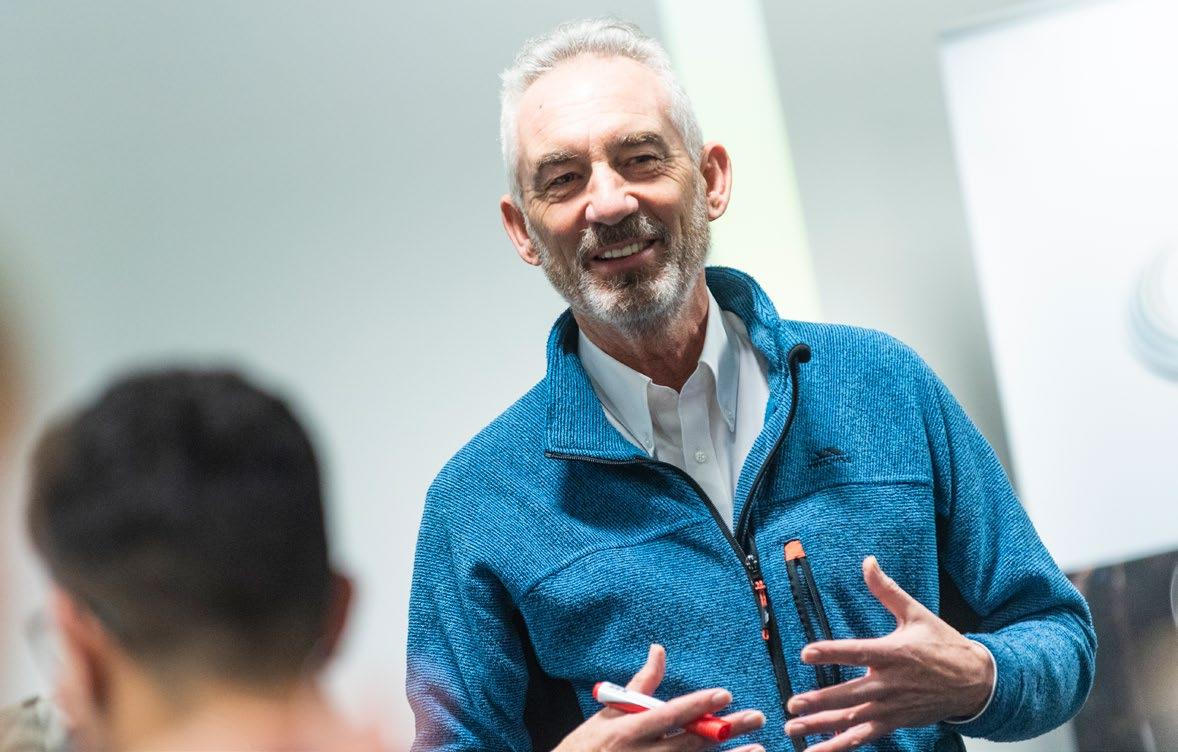
We’re also supporting managers with a new Institute of Leadership and Management (ILM)-accredited Managers Foundation Programme. This has already provided 90 managers with knowledge and skills to manage staff more effectively and confidently in line with the University’s values.
Health and wellbeing is a continuing concern for colleagues in our People Survey. We continued to provide support through our Centre for Wellbeing. Services include wellbeing health reviews, one-toone counselling sessions and a specialist counsellor in race and racial trauma.
We launched a learning and development workshop schedule to support individuals and teams in developing professional and personal effectiveness skills. During the pandemic, we offered convenient bite-sized training sessions online. Now we’re developing this further and offering a combination of virtual and face-to-face workshops.
We’re also working on a new onboarding and induction plan including a networking Welcome to Surrey event held regularly to make sure all our new recruits feel at home from day one.

47
OUR EMPLOYEES AND ASSOCIATES
OUR WORKFORCE INCLUDES 1,420 TEACHING AND RESEARCH STAFF AND 1,644 SUPPORT STAFF IN FUNCTIONS SUCH AS FINANCE, IT, MARKETING, ADMINISTRATION, TECHNICAL AND EXPERIMENTAL SUPPORT.
CREATING AN INCLUSIVE ENVIRONMENT
We are committed to creating an environment in which everyone is respected, treated fairly, and enabled to excel in their chosen field, regardless of race or ethnicity, sex, gender identity, disability, sexual orientation, age, religion or belief.
During 2021-22, we continued to take action to make our commitment to EDI a reality. We:
• Applied for and were awarded the Race Equality Charter bronze award. This recognises our progress in race equality for staff and students and our commitment to a full action plan of initiatives to address our areas of inequality.
• Continued to deliver our EDI Plan 2020-2025, which outlines our key EDI strategic priorities.
• Developed action plans to advance gender equality and applied for an Athena Swan award.
• Launched a new harassment and bullying procedure for staff and students, setting out expected behaviours, our zero-tolerance approach, and the range of options and support available to people who feel they have been bullied or harassed.
• Established a new inclusive recruitment campaign, Diversity 200, aimed at improving the diversity of our staff to reflect our student community.
• Provided enhanced EDI training for staff and postgraduate researchers, including sector-leading race equity training essential for all employees and updated unconscious bias training.

• Supported equality networks from across our community, providing peer support and advocacy for our under-represented groups.
• Continued to strengthen and develop the menopause project, to provide excellent support for women to retain talent and promote wellbeing. We recruited and trained more menopause advocates and networked with external partners to keep adding value to this work.
• Supported women’s personal development through our Springboard Development Programme with great feedback and tangible evidence of its impact on progression and development.
48
ANNUAL REPORT AND FINANCIAL STATEMENTS 2021-22 CONTENTS THE FINANCIALS
RESHAPING OUR VALUES FOR THE FUTURE
We held virtual workshops with over 1,000 colleagues during the pandemic and asked them to tell us when they thought the University is at its best. We took this feedback and distilled it into a set of values that we have been embedding over the past year.
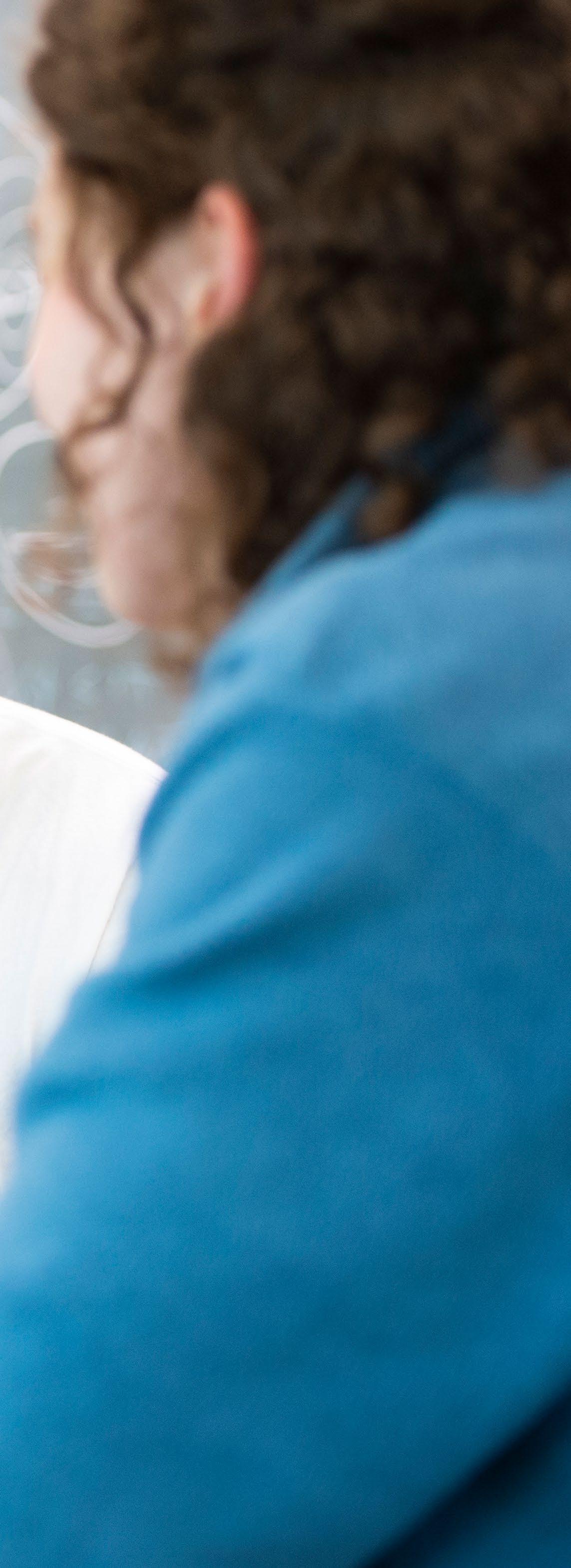
• Inclusion: to value everyone in our community
• Inspiration: to find it in ourselves and each other
• Innovation: to work together to make tomorrow better than yesterday
• Integrity: to do the right thing, individually and collectively
We created a new permanent recognition scheme, the Values Award Scheme, which is designed to highlight and thank colleagues who embody these values in their work. So far, more than 1,000 people have been recognised.
Our refreshed values will play a key part in shaping the kind of place we want Surrey to be. This, in turn, will make Surrey a better place for our people to work and help them build fulfilling career paths in the future.
49
WE CREATED A NEW PERMANENT RECOGNITION SCHEME, THE VALUES AWARD SCHEME, WHICH IS DESIGNED TO HIGHLIGHT AND THANK COLLEAGUES WHO EMBODY THESE VALUES IN THEIR WORK. SO FAR, MORE THAN 1,000 PEOPLE HAVE BEEN RECOGNISED.
SUSTAINABILITY AND ENVIRONMENTAL IMPACT

SUMMARY
Following our 2020 commitment to a carbon target of net zero by 2030, we continued our work to reduce our impact. We introduced energy- and water-saving technologies, generated more on-site renewable energy and increased the amount of energy we purchased from verified renewable sources. We also

advanced our plans to install an on-campus solar farm and to decarbonise our heating system. In recognition of our contributions to meeting the UN Sustainable Development Goals, we were ranked 55th in the world by the Times Higher Education Impact Rankings.
23% reduction in Scopes 1 and 2 carbon emissions compared to 2018-19. 21% reduction in water use compared to 2017-18. 55th in the world in the Times Higher Education Impact Rankings.
50
HIGHLIGHTS
2021-22
PRIORITY: CREATING THE CONDITIONS FOR SUCCESS
RECOGNITION OF OUR CONTRIBUTIONS TO MEETING THE UN SUSTAINABLE DEVELOPMENT GOALS, WE WERE RANKED 55TH IN THE WORLD BY THE TIMES HIGHER EDUCATION IMPACT RANKINGS.
IN
23% 21% 55TH ANNUAL REPORT AND FINANCIAL STATEMENTS 2021-22 CONTENTS THE FINANCIALS
ENERGY CONSUMPTION
We cut our Scopes 1 and 2 emissions by 6%, compared to 2020-21, and by 23% compared to our base year of 2018-19.
To achieve our emissions targets, we are reducing our demand, increasing on-site renewable energy generation, increasing the amount of energy purchased from verified renewable sources, engaging with our supply chain and considering how transparent offsetting schemes can cover what we can’t eliminate.

During the year, we installed more efficient gas boilers and new control systems in the Ivy Arts building, which is expected to reduce gas consumption in the building by 50%. New heating and cooling controls in the
Austin Pearce building used 5% less energy than previously. We also reduced the energy used in heating and cooling our buildings by recirculating air of the correct temperature, rather than drawing in fresh air as we did during the pandemic.
In our fleet, 18 of the 45 vehicles are now fully electric or hybrid. We plan to replace a further five vehicles in 2022-23, with the potential to increase this as the market for commercial EVs develops. We prepared our planning permission submission to install a solar farm on campus land. When working at peak capacity, the farm will be able to supply all the electricity for our Stag Hill campus.

51 UOS ACTUAL EMISSIONS
EMISSIONS REDUCED BY 1,055 TO
IN
CURRENTLY ON TRACK TO MEET THESE TARGETS 1.5°C (SCIENCE-BASED REDUCTION) TARGET TO BE NET ZERO BY 2030 1.5°C (SCIENCE-BASED REDUCTION) TARGET TO BE OFFSETTING ALL CARBON BY 2043
WERE 16,000 tCO2e IN 2020-21
14,945 tCO2e
2021-22
We continued with our disposable cup charge and the use of compostable takeaway packaging and cutlery in University-operated catering outlets. However, as expected, the amount of waste we generated increased as more students returned to campus. We participated in the British Heart Foundation’s ‘Pack for good’ initiative, saving 17.7 tonnes of goods from landfill with 2,222 bags of donations.
WASTE AND RE-USE WATER USE
We are on track to meet our target of a 15% reduction in absolute water use against the 2017-18 baseline. A combination of water timers and behavioural messaging led to reductions of 32% in the amount of time students spent in the shower, saving millions of litres of water over the year.
We continued with measures designed to reduce consumption including presence-controlled water use in bathrooms, a systematic leak detection programme, shower timers in halls of residence and a comprehensive monitoring programme across more than 150 water meters.
DRIVING AWARENESS OF SUSTAINABILITY
Progress is ongoing to achieve our commitment to integrate sustainability in all programmes as part of the curriculum design review by the end of 2023-24.
Sustainability is now integrated into the taught programmes of three schools, Politics, Civil Engineering and Economics. Ten further schools and departments are reviewing and updating their curriculums this year for first teaching in September 2023, with all remaining schools and departments due to complete by July 2024.

In 2021-22, we ran the Reduce the Juice student engagement campaign for the third year in a row, with 650 students and staff participating directly and 43 students taking on the responsibility of Sustainability Ambassadors.
Our vision is that every Surrey student will leave the University understanding the sustainability implications of their chosen career path and how their discipline can contribute to increasing sustainability. This is part of the Surrey Advantage, which sets Surrey graduates apart from others.
52
ANNUAL REPORT AND FINANCIAL STATEMENTS 2021-22 CONTENTS THE FINANCIALS
WE WERE RANKED WITHIN THE TOP 30 UNIVERSITIES IN THE WORLD FOR OUR IMPACT ON BOTH CLEAN WATER AND SANITATION (SDG 6) AND RESPONSIBLE CONSUMPTION AND PRODUCTION (SDG 12).

Surrey was ranked 55th in the world, out of 1,406 participating universities, in the Times Higher Education impact rankings, based on our contributions towards the UN SDGs. This was a rise of six places compared to last year, despite more institutions taking part globally.
The rankings look at how universities’ research, innovation and operations contribute towards UN SDGs, in areas such as reducing carbon footprint, partnerships with local, national and international bodies and outreach work.
This year Surrey provided evidence to show it was contributing to 13 of the 17 SDGs. We were ranked within the top 30 universities in the world for our impact on both Clean water and sanitation (SDG 6) and Responsible consumption and production (SDG 12).
MEETING UN SUSTAINABLE DEVELOPMENT GOALS (SDGS) FUTURE PLANS
In 2022-23, we will introduce a new Future Energy Strategy, outlining how we will integrate our sustainable technologies in the most efficient way. We will continue with our plans to decarbonise our heating system, and to install a solar farm on campus. We will start work on quantifying our actual Scope 3 emissions, to give us a more accurate picture of our impact through the supply chain, rather than relying on estimates. We will also drive an energy reduction campaign aimed at students and staff.
53
MANAGING RISK
PRIORITY: CREATING THE CONDITIONS FOR SUCCESS
We reviewed and updated our risk register in 2021-22 to make sure that it fully reflects changes in our strategy and operating environment. We continued to take action to reduce our exposure to risk and mitigate the impact if a risk occurs.
OUR APPROACH
As part of our governance and internal control framework, we have a robust process for identifying, assessing and managing risks that could prevent us from meeting our objectives.
The highest-level risks are reviewed regularly by the Executive Board and the Audit and Assurance Committee. The Board holds an annual workshop to consider external opportunities and risks, the outcome of which is used to update our risk appetite and risk register. We also use it to inform our internal audit programme and strategic planning process.
The University’s Executive Board has responsibility for day-to-day risk management. Along with senior management, it encourages a culture in which risks are routinely considered in decision making, and better decisions are supported through an improved understanding of risk.
The Audit and Assurance Committee monitors risk management on behalf of the Council. The Committee reviews current risk exposure against our risk appetite and advises the Council on current risk exposures and future risk strategy.
See the Corporate Governance statement, page 62, for more on our risk management process.
CHANGES TO OUR PRINCIPAL RISKS
During 2021-22, we reviewed our principal risks –risks associated with our core activities that have the greatest potential impact on our operations. The aim of the review was to make sure we include all our major functional areas, and reflect latest changes in regulation, education and our operating environment. As a result of this review, we have added principal risks to our risk register covering areas such as: our strategy health, safety and wellbeing legal and regulatory compliance university infrastructure and services information technology reputation.
RISK MANAGEMENT STRATEGY AND APPETITE
Our risk management strategy is based on minimising our exposure to compliance and regulatory risk, while accepting some risks that help us achieve our mission and objectives.
When we accept risks, we make sure that those risks and potential benefits are fully understood and take sensible measures to mitigate those risks. We put controls in place to reduce the likelihood of risks occurring, or take action to minimise their impact. Our objectives are to: identify the principal risks that we face decide which risks we are willing to accept because they deliver the right returns assess the likelihood of risks and understand the potential impact on the University take action to minimise the risks we don’t accept monitor and report the risks we are taking against our desired strategic objectives.
1. IDENTIFICATION What are the risks?
2. ASSESSMENT What is the likelihood of the risk occurring? How severe will the risk factor be?
3. MONITORING Has the situation changed? Are there new risks emerging?
4. CONTROL What can we do to reduce the impact of the risk?
This above illustrates our approach to risk management, mitigation and control.
54
ANNUAL REPORT AND FINANCIAL STATEMENTS 2021-22 CONTENTS THE FINANCIALS
RISKS AND MITIGATIONS
STRATEGY
RISK - We could fail to deliver our 2024 strategy (see page 13) and therefore not meet our ambition to become a leading global university with excellent graduates and research outcomes that make an important contribution to society.
MITIGATIONS - As part of our strategy refresh in 2021-22, we updated our goals to reflect the changing external context and set targets to measure our progress in three priority areas for the next three years that address the core of what we do: Drive student experience; Focus research intensity; and Create the conditions for success.
CURRENT RISK CLIMATEStable. Though Surrey has risen 12 places up the ranking to 33rd in this year’s Research Excellence Framework, the external context is more challenging in the short term due largely to increased challenges in the generation of funding, either from pressures on R&D budgets of potential funders or reduced availability of public funds.
EDUCATIONAL QUALITY
RISK - If we fail to provide highquality teaching programmes and learning support tailored to meet the needs of our students and support their success, fewer students will want to study at Surrey and we will fail in our mission to be a leading global university.
MITIGATIONS -
• Delivering a learner-centric curriculum, through a mix of in-person and interactive online learning.
• Using learning analytics to ensure all students are supported across the student journey, targeting early intervention where required.
CURRENT RISK CLIMATEStable. We continued to provide high-quality teaching and research programmes.
RESEARCH STRATEGY
RISK - We might not provide the right facilities, infrastructure and support to foster leading-edge research that achieves excellent results, promotes and enables exceptional teaching and delivers economic and social benefits. We may also fail to collaborate effectively with external research partners, or raise awareness of our research capabilities. If these things happen, we’ll see less interest from postgraduate researchers and funding agencies, and our reputation for high-quality research will suffer.
MITIGATIONS -
• Creating pan-University research institutes to support cross-disciplinary research, elevating our global impact and visibility.
• Involving staff, students and postgraduate researchers in working with partners to scale our innovation into inventions and enterprises that have real societal impact.
• Developing synergies between our research and teaching.
• Providing support and infrastructure for researchers, ensuring it is agile, digital and integrated.
• Increasing the funding devoted to research and education, supporting increased staff posts and postgraduate researchers.
CURRENT RISK CLIMATEStable. Though Surrey has risen 12 places up the ranking to 33rd in this year’s Research Excellence Framework, the external context is more challenging in the short term due largely to increased challenges in the generation of funding, either from pressures on R&D budgets of potential funders or reduced availability of public funds.
STUDENT EXPERIENCE AND SATISFACTION
RISK - Issues with learning facilities, accommodation, social and recreational facilities, or digital
infrastructure could hinder learning and make students less happy to study at Surrey. This could lead to poor academic results and damage our reputation. Our rankings in the National Student Survey could fall, making it harder to recruit and retain students.
MITIGATIONS -
• Carrying out regular student satisfaction surveys and using the results to plan improvements.
• Responding to feedback from MySurrey Voice throughout the academic year.
• Investing in study resources, including online access to core texts.
• Improving assessment and feedback content and turnaround times.
• Providing wellbeing initiatives and services in conjunction with the Students’ Union.
CURRENT RISK CLIMATEImproved. Our ranking in the National Student Survey went up from 25th in 2020-21 to 9th in the UK in 2021-22.
STUDENT RECRUITMENT
RISK - Not recruiting the right number, quality and diversity of students, nationally and internationally, could mean we won’t have enough students to support our courses, and we won’t deliver our financial objectives. If we recruit too many, we may not be able to support them all on campus, and that might lead to financial penalties.
MITIGATIONS -
• Increasing our national and international presence through marketing and recruitment campaigns.
• Using data to support market intelligence and insight and target our recruitment activity.
• Tailoring course development to attract students in core and emerging areas of study.
55
• Reviewing fees, funding and scholarship programmes to make sure students get value for money.
• Clearing effectively to fill available capacity while ensuring we don’t oversubscribe.
CURRENT RISK CLIMATEStable. While our recruitment activity is returning to normal since the end of the pandemic, geopolitical issues will increase the challenges in our international recruitment while we develop our markets growth areas.
OUR PEOPLE
RISK - We might not attract, retain, and enable the right people, with the right skills, ambition and capabilities. This could mean we’re unable to provide high-quality academic and research programmes, or the professional services that support them.
MITIGATIONS -
• Planning for workforce requirements and carrying out high-level talent reviews to assess capability and capacity needs.
• Training and developing staff to support in-role progression and career growth.
• Providing leadership development and enablement programmes.
• Developing a recruitment strategy for effective market engagement.
• Implementing our inclusion and diversity action plan, including annual gender pay gap compliance reviews and further internal analytics.
• Conducting our annual engagement survey to assess our employee satisfaction and develop action plans.
• Rolling out a new human resources IT system that enables stakeholders to monitor relevant data.
CURRENT RISK CLIMATE No change.
UNIVERSITY INFRASTRUCTURE
RISK - If we fail to keep our buildings, equipment and student accommodation maintained and
fit for purpose, through lack of investment or failure to plan for student numbers, it could cause a decline in the quality of our academic programmes and a drop in student satisfaction.
MITIGATIONS -
• Implementing our planned maintenance programme for all building assets.
• Carrying out rolling asset inspections of our estate.
• Refurbishing our buildings and facilities in line with our estates strategy.
• Monitoring sustainability performance targets and regulatory compliance.
CURRENT RISK CLIMATENo change. We continued to maintain and invest in our infrastructure.
UNIVERSITY SERVICES
RISK - If there’s a fall in the quality of student services, such as recreational, sports and catering, or they’re interrupted or ineffective, it could lead to a drop in student satisfaction, or health, safety and wellbeing problems. If key departments aren’t resilient, they could be more at risk of business interruption during a stress event, which could be severe and take a long time to recover from.
MITIGATIONS -
• Offering modern facilities to support a diverse variety of sports activities and clubs at the Surrey Sports Park.
• Supporting a wide range of student-run clubs and societies in conjunction with the Students’ Union.
• Providing on-site catering facilities for our student population.
• Developing our business continuity function to provide increased resilience during significant stress events.
CURRENT RISK CLIMATEStable. We continued to provide good services and support for students and develop departmental resilience.
LEGAL AND REGULATORY COMPLIANCE
RISK - As part of our activities, we are bound by regulations and legislative requirements. Additionally, we hold and process personal and payment data about our staff and students, which we must do in compliance with information governance regulations. Failure to comply with our regulations could cause a risk to safety, damage our reputation and lead to fines, penalties or regulatory action.
MITIGATIONS -
• Implementing internal policies and procedures.
• Providing e-learning guidance to help staff control our activities within regulatory commitments.
• Maintaining our conflicts of interest process and fraud and bribery risk registers and review the adequacy of our related procedures every two years.
• Providing mandatory training for all staff on information governance.
• Managing an information asset register that enables reporting of potential data breaches, as well as detailed guidance for staff on handling data compliantly.
• Collecting feedback from our staff and students on ethical concerns for prompt effective investigation through whistleblowing, the student complaints process and our Report and Support portal.
CURRENT RISK CLIMATEStable. We remain compliant with all relevant regulations and legislation and continue to adapt to their changing requirements as they arise.
HEALTH, SAFETY AND WELLBEING
RISK - Health and safety incidents could happen if we fail to identify all potentially harmful activities, such as those using chemicals or hazardous equipment, and give staff and students the training and tools required to carry them out safely.
If we don’t create a positive state of wellbeing for students and staff,
56 ANNUAL REPORT AND FINANCIAL STATEMENTS 2021-22 CONTENTS THE FINANCIALS
it could impact their performance, reduce satisfaction, or lead to health and safety issues.
MITIGATIONS -
• Prioritising safety communications and reporting.
• Carrying out mandatory health, safety and wellbeing training.
• Creating a dedicated health and safety assurance committee.
• Having a clearly defined strategy, safety protocols and standards in line with legislation and industry best practice.
• Conducting institutional compliance audits and departmental inspections and audits.
• Improving incident reporting and investigation of near misses and lost time incidents.
CURRENT RISK CLIMATEIncreased challenge. While we prioritise and address HS&W risks internally, there are increased external challenges inflating wellbeing risk drivers that we need to continue to monitor and react to. This includes the post-Covid pandemic impacts for our staff and students, increased cost of living impacts, and associated media and regulator scrutiny while the clarity in role for the sector is defined.
REPUTATION
RISK - Our reputation could suffer as a result of operational or regulatory failure, or if we are perceived not to look after our people well and do not maintain the values and behaviours expected of a good employer. It could also suffer if we fail to communicate our capabilities and successes to key audience groups from research funding organisations, partners and government, to our staff, students, alumni, potential employees, and the local community. This could affect student recruitment and employability and cause problems attracting research partners and donors.
MITIGATIONS -
• Creating a culture and environment that is attractive, helps people to perform to their best and is attractive to others.
• Actively demonstrating the benefits
and value that the University delivers to the wider society, from research discoveries and collaborations to our positive impact on the economy, environment and local community.
• Projecting our brand through marketing and communication channels, and celebrating our successes, from student rankings to research discoveries and international partnerships.
• Fostering good relations with a wide range of stakeholders and keeping open channels of communication.
CURRENT RISK CLIMATE Improved. Improving due to our successful performance in the National Student Survey (NSS) and Research Excellence Framework (REF) league tables.
FINANCIAL RISK
RISK - The University might raise insufficient revenues relative to its costs, limiting or even reducing the ability to invest in the estate, systems and strategic initiatives that underpin teaching and research. This could make it harder to deliver the high levels of performance we strive for.
MITIGATIONS -
• Implementing our five-year financial plan aligned to the University’s strategy, balancing investment with business-as-usual requirements.
• Monitoring progress against key metrics – activity led by the Council, its sub-committees and the Executive Board.
• Adapting to change and embracing new opportunities that arise through annual planning rounds.
• Preparing and reporting monthly management accounts internally.
• Making quarterly forecasts of the current year, closely monitoring any movement against budgeted operational and capital expenditure and taking corrective action where required.
• Forecasting cash flow on a regular basis and maintaining a cash buffer with finance facilities to ensure we have the capacity to react to sudden stress events.
CURRENT RISK CLIMATEIncreased challenge. We continue to raise enough revenues to meet our investment plans, medium to long term. Externally there are increasing financial pressures which the University will carefully manage, including high general inflation and significantly increased energy costs caused by current geo-political tensions.
IT
RISK - Failure to maintain the resilience of our operational and enterprise IT systems could impact on our ability to deliver an effective education programme and research environment, as well as the supporting services that underpin them. Failure to deliver IT change would inhibit delivery of our strategy to 2024. Failure of cyber security controls may expose the University to reputational damage as well as attracting potential fines from regulatory authorities and resulting in loss of confidence from our student body.
MITIGATIONS -
• Continuously planning for disaster recovery in support of ISO22301.
• Removing and replacing legacy technology.
• Increasing operational service maturity.
• Providing mandatory cyber security training for all employees.
• Managing vulnerability with penetration testing and active replacement of unsupported infrastructure and services.
• Monitoring and responding to information security and cyber threats through a dedicated information security team.
• Implementing cross-sector technology maturity standards.
• Creating and investing in a chief technology officer position.
CURRENT RISK CLIMATEImproved. Cyber security has improved with more user awareness training take-up and greater accountability. Active vulnerability management has reduced the University’s exposure to attack. Our IT change capacity has also improved, contributing to the delivery of our strategic workstreams.
57
THE £1.7 MILLION WE RECEIVED IN THE FIRST YEAR OF THE TURING SCHEME ALLOWED US TO FUND LIFE-CHANGING STUDY AND WORK PLACEMENTS ACROSS THE GLOBE, FROM MEXICO TO MALAYSIA.
INTERNATIONAL ENGAGEMENT
PRIORITY: CREATING THE CONDITIONS FOR SUCCESS
SUMMARY
As we emerged from the pandemic, we were able to reopen face-to-face contact with international networks of universities and partners, forging new collaborations and initiatives.
We continued to create opportunities for our students to have a truly global experience. The £1.7 million we received in the first year of the Turing Scheme allowed us to fund life-changing study and work placements across the globe, from Mexico to Malaysia.
We signed international agreements for a range of co-funded scholarships with the first cohorts arriving in the autumn term of 2022. And we continued to develop a range of exciting international opportunities including research partnerships and dual education programmes.
Our plans for 2022-23 include re-engaging with international stakeholders on delegate visits to key strategic regions, such as South East Asia and Latin America, aimed at raising Surrey’s international profile.
2021-22 HIGHLIGHTS
More than 60% of Surrey’s academic publication output included international co-authors.
Turing Scheme funds hundreds of international study and work placements.
International Engagement Strategy launched with an ambition to achieve impact and transform lives through international collaboration.
New, innovative programmes with high-quality partner universities in Europe, Asia and Africa.

58
60% ANNUAL REPORT AND FINANCIAL STATEMENTS 2021-22 CONTENTS THE FINANCIALS
BUILDING GLOBAL NETWORKS

The lifting of pandemic restrictions during 2021-22 gave us renewed freedom to strengthen links with our international university networks. While many of our engagements continued online, we were able to welcome strategic partners from Europe, Latin America and South East Asia in person. We’re planning outbound delegation visits from Surrey during 2022-23 to raise the profile of the University, and develop new opportunities for Surrey students and researchers.
We continued to develop collaborations in our University Global Partnership Network (UGPN) with North Carolina State University, the University of São Paulo and the University of Wollongong. These included enhanced joint research, an innovative online international learning programme for students via the UGPN Academy, and a two-week online conference featuring more than 20 workshops and keynote addresses on a range of topics around the theme of sustainability.
Our links with large advocacy bodies for higher education in Europe and around the world continued to deepen. These include:
• CESAER, the voice of science and technology universities in Europe
• the European University Association (EUA), which represents 800 universities in 48 countries
• the British Council

• Universities UK International
We joined the UK-Malaysia Consortium, an initiative led by the British Council and Malaysia’s Ministry of Higher Education, which brings together all 20 of Malaysia’s public universities and 16 UK higher education institutions. The consortium aims to promote cooperation in higher education via collaborative teaching, research and knowledge exchange between the UK and Malaysia.
Surrey hosted the Consortium’s first roundtable event as part of a visit by Malaysia’s Minister of Higher Education, Dato Dr Noraini Ahmad, in May. We have supported academics from all three Surrey faculties to apply for seed funding through the British Council Global Partnerships Catalyst grants available to consortium members.
59
CREATING OPPORTUNITIES FOR STUDENTS
2021-22 was the first year delivering the UK government’s new Turing Scheme. Over the year, we have supported hundreds of students with grants to study and work abroad in countries such as Australia, Canada, France, Hong Kong, India, Malaysia, Mexico, South Africa, Spain, Uganda and the United States.

The Turing funding has allowed us to create a research project in Malaysia for bioscience students, a collaborative project with ITESO University in Mexico for civil engineering students and a summer programme in Uganda with Makerere University for students in the Faculty of Health and Medical Sciences.
Surrey has been awarded £1.1m for the 2022-23 academic year. We’ll build on the successes of the first year of Turing to offer more life-changing experiences to Surrey students. As well as funding regular study exchange and Professional Training Year placements, the funding will also support health science and veterinary medicine placements, summer programmes, and postgraduate researcher placements.
FUNDING INTERNATIONAL SCHOLARSHIPS
Agreements we made in 2021-22 with international funding bodies are starting to create scholarship opportunities with the first cohorts starting in autumn 2022. These include:
• A bilateral partnership with the China Scholarship Council (CSC) offering 10 PhD scholarships a year to Surrey.
• A co-sponsorship agreement with the Egyptian government which will bring top scholars to Surrey to study for PhDs on full studentships.
A new five-year collaboration with FAPESP, the state research funding organisation in São Paulo, Brazil, providing seed funding for research collaborations with top Brazilian universities, will make its first grants in 2023.
SURREY HAS BEEN AWARDED £1.1M FOR THE 2022-23 ACADEMIC YEAR.
60
ANNUAL REPORT AND FINANCIAL STATEMENTS 2021-22 CONTENTS THE FINANCIALS
The international engagement team reached agreements for a range of innovative and unique jointly run education programmes with high-quality universities in Belgium, China, Hong Kong, India, Japan, Malaysia, the Netherlands, Thailand and Uganda. These include:
• A progression agreement with Bangkok University, Thailand, to recruit top international students to our School of Hospitality and Tourism Management’s masters programmes.
• An articulation programme with Beijing University of Technology, China, supporting students to progress to mechanical engineering undergraduate programmes with advanced standing (joining in year 2).
• A memorandum of understanding and progression agreement with Hong Kong Baptist University, to recruit students onto Surrey’s masters course in Health Psychology.
DEVELOPING JOINT EDUCATION PROGRAMMES INTERNATIONAL ENGAGEMENT: A BRIGHT FUTURE
Looking ahead to the academic year 2022-23, we aim to:
• Re-engage with international stakeholders on visits to key strategic regions, such as South East Asia and Latin America. We aim to raise Surrey’s profile, meet our international alumni community, and develop new collaborative programmes in education and research.
• Increase international opportunities for our students through successful delivery of our Turing Scheme activity.
• Develop new collaborative teaching and learning programmes, which will harness innovative pedagogies and digital technologies.
• Amplify the global impact of Surrey research by strengthening partnerships and by forming new international collaborations.
• Participate in the Quality Assurance Agency for Higher Education’s Quality evaluation and enhancement of UK transnational education scheme. This will enhance provision at SII-DUFE, our Surrey International Institute in China, and ensure we are well-positioned to explore new transnational education opportunities in the future.

61
2022
CORPORATE GOVERNANCE STATEMENT
The University is a body incorporated by Royal Charter, originally granted in 1966, and an exempt charity within the meaning of Schedule 3 of the Charities Act 2011. Its compliance with charity law is monitored by the Office for Students (OfS) as principal regulator.
The University is committed to exhibiting best practice in all aspects of corporate governance. It endeavours to conduct its business in accordance with the seven principles identified by the Committee on Standards in Public Life – selflessness, integrity, objectivity, accountability, openness, honesty and leadership – and with the Higher Education Code of Governance published by the Committee of University Chairs (CUC).
SUMMARY OF THE CORPORATE GOVERNANCE STRUCTURE
The University’s objects, powers and framework of governance are set out in the Charter and its supporting Statutes and Ordinances (the ‘governing documents’).
THE COUNCIL
In accordance with the requirements of its governing documents, the Council comprises a majority of external members, together with ex officio and elected University representatives. The role of the Chair of Council is separated from the role of the President and ViceChancellor as Chief Executive.
The powers of the Council are set out in the Statutes and Ordinances of the University. Under the terms and conditions of funding for higher education institutions agreed between the OfS and institutions, and the terms and conditions of the Research England grant, the Council is collectively responsible for overseeing the University’s activities, determining its future direction and fostering an environment in which its mission is achieved. This is an ultimate responsibility that cannot be delegated.
The Council has adopted the following Statement of Primary Responsibilities:
• To approve the mission, strategic vision and long-term academic and business plans of the University and agree key performance indicators and annual budgets to ensure that these meet the interests of stakeholders.
• To ensure that systems of control and accountability are established and monitored, including financial and operational controls and risk assessment, and procedures for handling internal grievances and managing conflicts of interest.
• To ensure processes are in place to monitor and evaluate the performance and effectiveness of the University against its plans, previous performance and agreed key performance indicators. Where possible and appropriate, these should be benchmarked against other comparable universities.
• To appoint the President and Vice-Chancellor and put suitable arrangements in place for monitoring their performance.
The Council also cannot delegate responsibility for:
• varying the Charter or Statutes
• approving the annual audited financial statements
• appointing the external auditor of the University.
ANNUAL REPORT AND FINANCIAL STATEMENTS
62 2021-22 CONTENTS THE FINANCIALS
The Council continually assesses its mix of skills, experience and diversity to ensure that they are appropriate. Non-executive candidates are assessed against standard criteria (including diversity) and through an interview process. New members receive an induction programme tailored to their specific needs and there is a rolling cycle of information and training sessions throughout the year.
The effectiveness of the Council is reviewed regularly. The last external review reported in early 2021, which concluded that the standard of governance by the Council is good and that the University has governance processes, practices and policies which are fit for purpose and meet current expectations for higher education governance. It also suggested further improvements so that Surrey becomes an example of the very highest standards of governance practice in the sector.
Changes made as a result included:
• an increase in the number of Council meetings to six per annum
• a reduction in the number of Council members from 25 to 18
• the formation of a new Nominations and Governance Committee
• the creation of a new Senior Independent Member role to provide enhanced support to the Chair
• the introduction of formal appraisals for all Council members.
All changes were fully implemented for the start of the 2021-22 academic year.
An internal effectiveness review is in progress and an action plan is currently being drawn up and will come to a future Council meeting.
As well as six formal meetings a year, the Council holds two awaydays jointly with the Executive Board to work on strategy and planning. The Council keeps the scheduling of its meetings under regular review.

Council minutes are published on the University website to ensure transparency around decision making alongside the membership and terms of reference of the Council and its sub-committees. www.surrey.ac.uk/about/governance/council-minutes www.surrey.ac.uk/about/governance/statutorybodies-committees
MEMBERSHIP OF THE COUNCIL
Council membership between 1 August 2021 and the date of signing the 2021-22 financial statements is shown overleaf. Profiles of Council members (who are the trustees) are available on the University website at www.surrey.ac.uk/about/ governance/members-council
63
Other
•
•
Other
•
•
•
•
Other
•
•
•
Other
•
•
•
Other


•


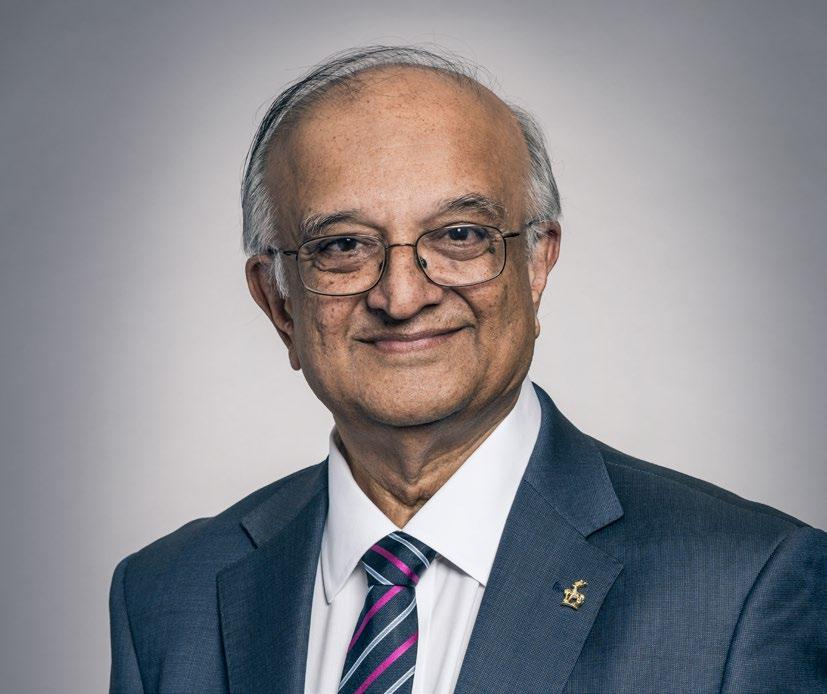
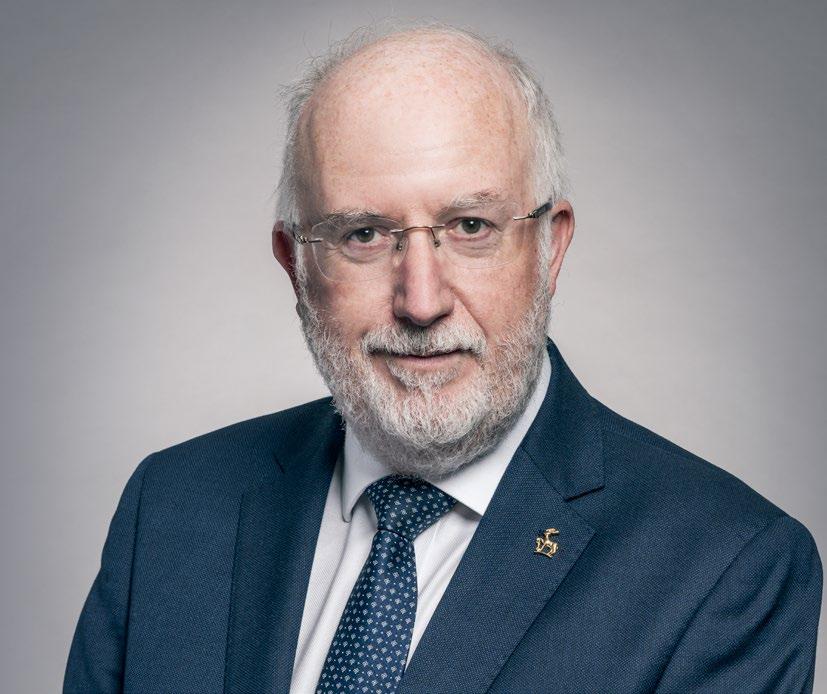
statutory body and Council sub-committee memberships
Finance Committee
Nominations and Governance Committee (Chair)
Remuneration Committee
MICHAEL QUEEN - CHAIR
statutory body and Council sub-committee memberships
Finance Committee
Nominations and Governance Committee
Student Experience Committee (Chair)
VIB BAXI - VICE-CHAIR (JOINT)
statutory body and Council sub-committee memberships
Nominations and Governance Committee
Remuneration Committee
statutory body and Council sub-committee memberships
Finance Committee (Chair)
Nominations and Governance Committee
Remuneration Committee
ROBERT NAPIER - TREASURER
statutory body and Council sub-committee memberships
Audit and Assurance Committee
Nominations and Governance Committee
64
MEMBERSHIP OF THE COUNCIL
RACHEL HUBBARD - VICE-CHAIR (JOINT)
ELLIOT ANTROBUS-HOLDER - LAY MEMBER
ANNUAL REPORT AND FINANCIAL STATEMENTS 2021-22
THE FINANCIALS
JUDITH EDEN - SENIOR INDEPENDENT MEMBER
CONTENTS
•
DENOTES


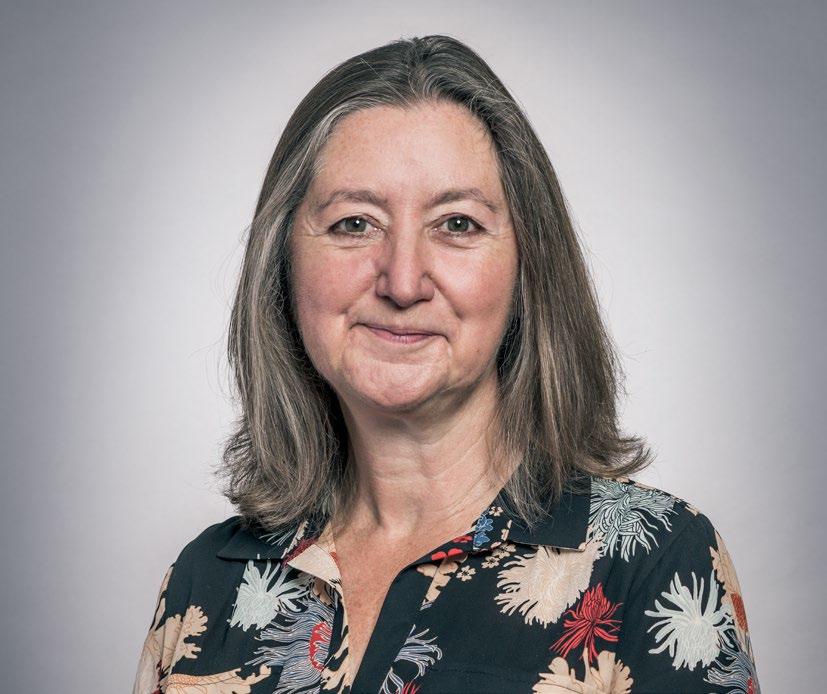

•
•
Other
Other
•
Other
•
Other
•

 JULIA BUCKINGHAM - LAY MEMBER
Other statutory body and Council sub-committee memberships
Remuneration Committee (Chair)
CHARLIE GEFFEN - LAY MEMBER
statutory body and Council sub-committee memberships
Audit and Assurance Committee (Chair)
MIKE GOODFELLOW - LAY MEMBER
statutory body and Council sub-committee memberships
Finance Committee
PAM JESTICO - LAY MEMBER
statutory body and Council sub-committee memberships
Audit and Assurance Committee (Chair)
Nominations and Governance Committee
NIGEL JONES - LAY MEMBER
PAM POWELL - LAY MEMBER
(from 1 April 2022)
statutory body and Council sub-committee memberships
JULIA BUCKINGHAM - LAY MEMBER
Other statutory body and Council sub-committee memberships
Remuneration Committee (Chair)
CHARLIE GEFFEN - LAY MEMBER
statutory body and Council sub-committee memberships
Audit and Assurance Committee (Chair)
MIKE GOODFELLOW - LAY MEMBER
statutory body and Council sub-committee memberships
Finance Committee
PAM JESTICO - LAY MEMBER
statutory body and Council sub-committee memberships
Audit and Assurance Committee (Chair)
Nominations and Governance Committee
NIGEL JONES - LAY MEMBER
PAM POWELL - LAY MEMBER
(from 1 April 2022)
statutory body and Council sub-committee memberships
MEMBER
Audit and Assurance Committee
*
EX OFFICIO
65
(to 31 March 2022)
• Executive Board (Chair)

• Finance Committee
• Nominations and Governance Committee
• Senate (Chair)

• Executive Board
• Finance Committee
•
Other
• Executive Board
• Finance Committee
• Nominations and Governance Committee
• Senate
Other statutory body and Council sub-committee memberships


• Nominations and Governance Committee
• Student Experience Committee

• Senate
(from 4 April 2022) (to 3 April 2022) (to 31 July 2022)

•
•

(from 1 August 2022)
• Nominations and Governance Committee
• Senate

66
MEMBERSHIP OF THE COUNCIL
Other statutory body and Council sub-committee memberships
statutory body and Council sub-committee memberships
Other statutory body and Council sub-committee memberships
Other statutory body and Council sub-committee memberships
Executive Board
Senate
•
Student Experience Committee
Other statutory body and Council sub-committee memberships
Student Experience Committee
DIANA DAKIK - PRESIDENT OF THE UNIVERSITY OF SURREY STUDENTS UNION*
MAX LU - PRESIDENT AND VICE-CHANCELLOR* TIM DUNNE - PROVOST & SENIOR VICE-PRESIDENT*
ANDY CHALKLIN - CHIEF OPERATING OFFICER*
OSAMA KHAN - PRO VICE-CHANCELLOR, ACADEMIC*
ANNUAL REPORT AND FINANCIAL STATEMENTS 2021-22 CONTENTS
FINANCIALS
AJAY AJIMOBI - PRESIDENT OF THE UNIVERSITY OF SURREY STUDENTS UNION*
THE
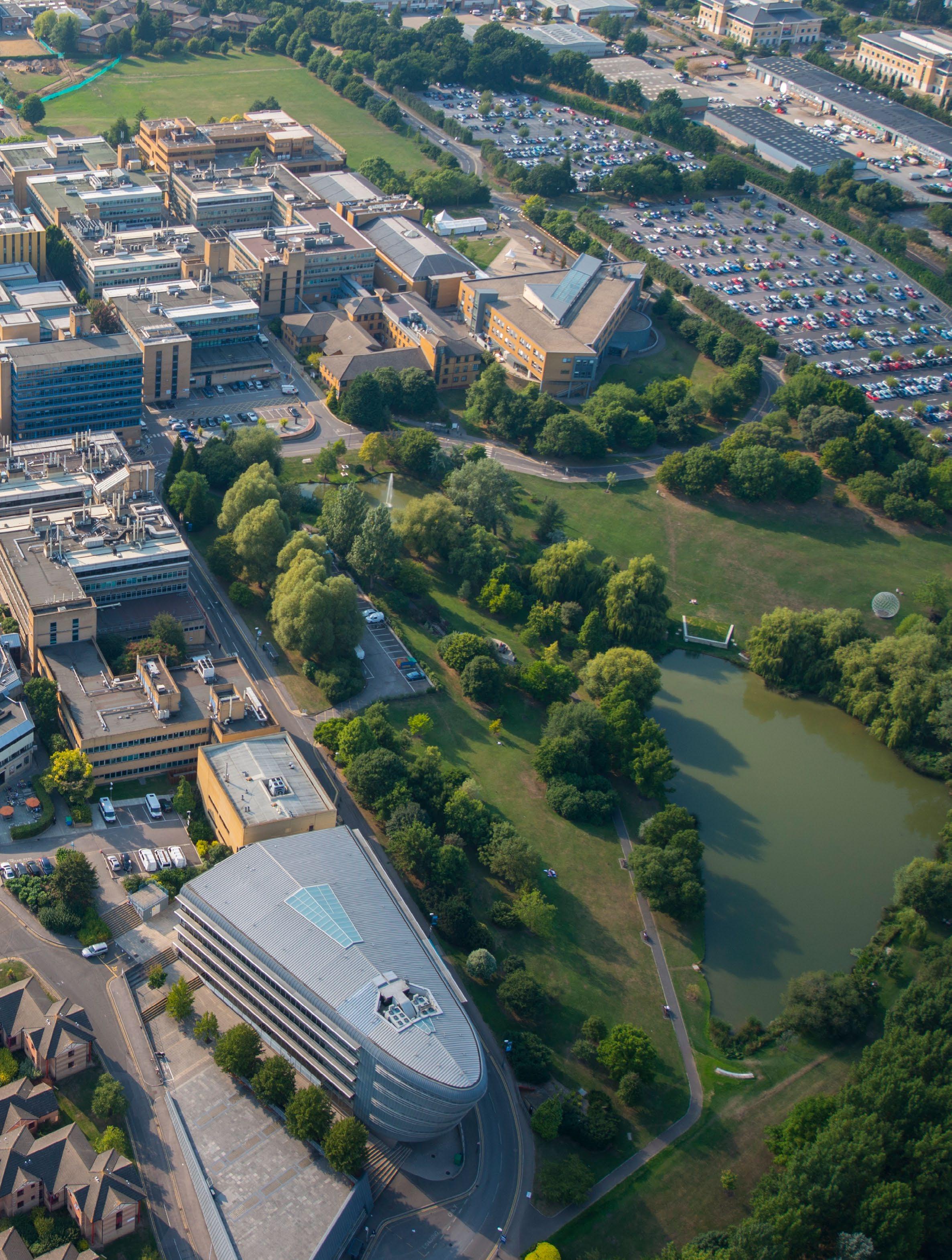

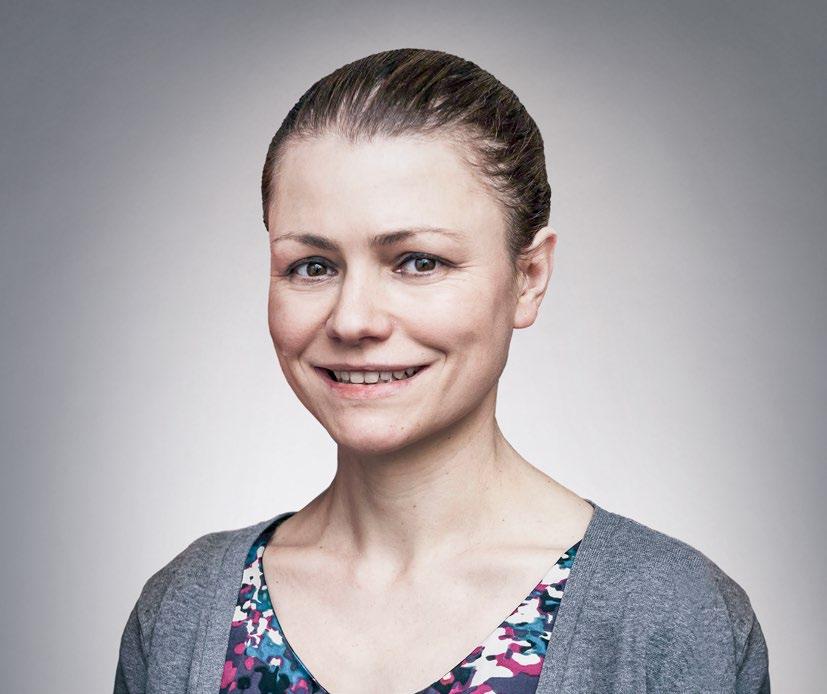

* DENOTES EX OFFICIO MEMBER 67
Other statutory body and Council sub-committee memberships • Senate
Dan_Horton David_Sampson
DANIEL HORTON - SENATE ELECTED MEMBER
Other statutory body and Council sub-committee memberships • Senate • Student Experience Committee
ESAT ALPAY - SENATE ELECTED MEMBER KAREN BULLOCK - SENATE ELECTED MEMBER
The Council has several sub-committees including a Finance Committee, an Audit and Assurance Committee, a Nominations and Governance Committee, and a Remuneration Committee. All are formally constituted with appropriate external membership and terms of reference.
FINANCE COMMITTEE
The Finance Committee, which has a majority of external members, meets at least four times a year. It advises the Council on financial policy and strategy, reviews the University’s financial forecasts and recommends them to the Council, and keeps the University’s financial position under review.
AUDIT AND ASSURANCE COMMITTEE
Under the chairmanship of a lay member of the Council, the Audit and Assurance Committee meets four times a year in the presence of the external and internal auditors. It advises and assists the Council on the entire assurance and control environment of the University. It oversees the risk management process and considers detailed reports from the auditors, including recommendations for improving the University’s systems of internal control, together with management’s responses to those recommendations and implementation plans.
The Committee also considers elements of the draft annual financial statements in the presence of the external auditors, including the auditor’s formal opinion, the statement of members’ responsibilities and the statement of internal control. Although senior executives attend meetings of the Audit and Assurance Committee as necessary, they are not members of the Committee, and the Committee may meet with the external and internal auditors independently of executives. The Chair of the Committee has direct access to the Chair of Council.
NOMINATIONS AND GOVERNANCE COMMITTEE
Under the chairmanship of the Chair of Council, the Nominations and Governance Committee meets as required to consider and make recommendations to the Council on the operation and effectiveness of governance arrangements. It also oversees the appointment of external members to the Council and external co-opted members to Council sub-committees and makes recommendations to the Council on the appointment of the President and Vice-Chancellor, the Chancellor and Pro-Chancellors.
REMUNERATION COMMITTEE
Under the chairmanship of a lay member of the Council, the Remuneration Committee meets a minimum of twice annually, with additional meetings at the discretion of the Chair. It monitors the performance of the President and Vice-Chancellor and determines the salary and conditions of service of the President and Vice-Chancellor and members of the Executive Board.
The Committee makes sure that there is an effective succession plan for Executive Board-level posts and approves any severance payments made to staff earning over £100,000 per annum. It also oversees the University’s overall strategy and principles on remuneration, with reference to the principles in the Higher Education Senior Staff Remuneration Code.
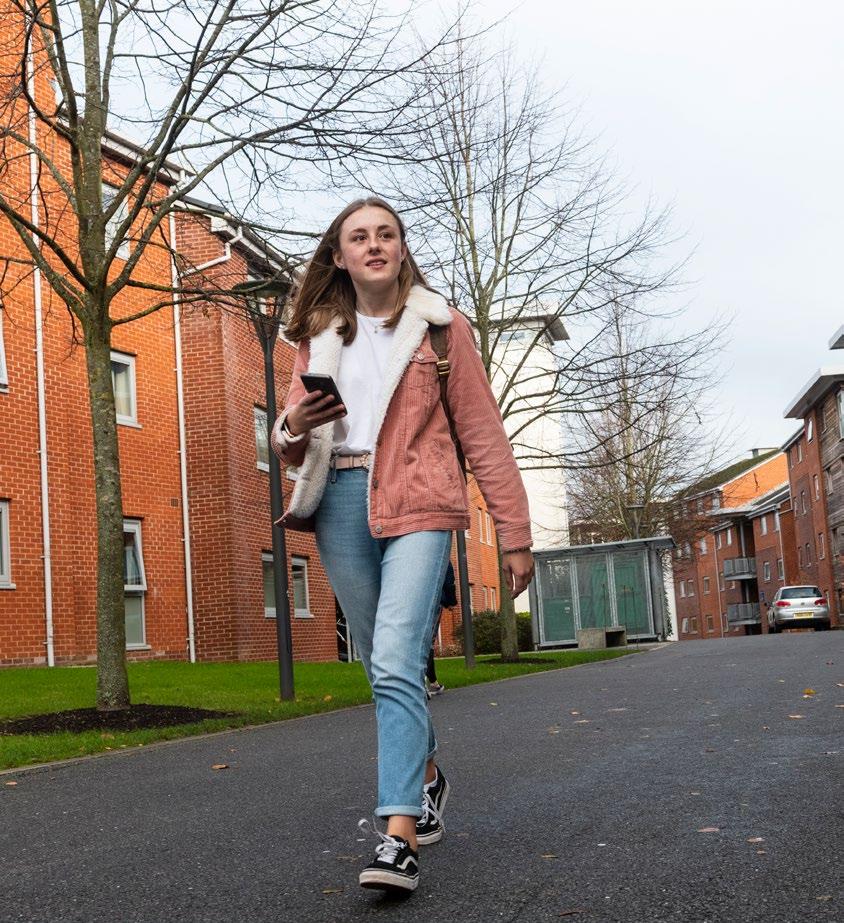
The President and Vice-Chancellor is not a member of the Committee but attends meetings, except when the Committee is discussing the President and ViceChancellor’s own salary and conditions of service. PricewaterhouseCoopers (PwC) act as advisers to the Committee and also attend Committee meetings.
THE SENATE
Under the chairmanship of the President and Vice-Chancellor (delegated to the Provost and Senior Vice President), the Senate meets four times a year and has responsibility, under the control and approval of the Council, for oversight and assurance of the academic endeavour of the University.
THE EXECUTIVE BOARD
The Executive Board is the senior management committee of the University and meets monthly under the chairmanship of the President and Vice-Chancellor as Chief Executive. The Executive Board has a number of supporting executive and advisory committees, all of which are formally constituted with appropriate terms of reference and which include external members where appropriate.
68 COUNCIL
SUB-COMMITTEES
ANNUAL REPORT AND FINANCIAL STATEMENTS 2021-22 CONTENTS THE FINANCIALS
MEETING REGULATORY REQUIREMENTS
The University has processes in place to ensure that it meets the OfS conditions for registration on an annual basis and that reportable events are notified to the OfS in a timely manner. The University maintains a table which sets out the conditions for registration, together with the postholders responsible and accountable for ensuring each condition is met, how it will be met and the relevant timeline. The University also maintains an OfS Reportable Events Plan, which sets out the specific criteria and materiality thresholds that the University will apply in determining whether an event is reportable under the OfS regulatory framework.
The University has policies and processes in place to ensure regularity and propriety in the use of public funding from the OfS, UK Research and Innovation including Research England, and other sources. These include the control measures shown in the statement of internal control below, and:
• An Ethical Conduct procedure which sets out the University’s expectations for the highest standards of ethical behaviour and financial probity, together with the processes in place to prevent, identify, report and investigate suspected cases of bribery, fraud and corruption.
• A Public Interest Disclosure Procedure which encourages staff to report reasonable belief of wrongdoing, provides guidance on how to raise concerns, and reassurance that they can raise genuine concerns without fear of reprisal, even if they turn out to be mistaken.
PUBLIC BENEFIT STATEMENT
The University’s charitable purposes are defined in its Royal Charter as the advancement of education, learning and teaching. The members of Council, as trustees, have due regard to the Charity Commission’s guidance on public benefit in determining the University’s strategic, operational and financial objectives.
The University brings a wide range of benefits to individual students and to society as a whole through:
• the quality of the education it offers and the quality of the graduates and postgraduates it produces
• the dissemination and practical application of the outcomes of its research
• its engagement with other universities, industry and wider local, national and international communities.
The University has an Access and Participation Plan approved by the OfS which shows progress to date and future plans for improving equality of opportunity for under-represented groups to access, succeed in and progress from higher education.
The main chapters of this Annual Report describe how the University has carried out its charitable purposes for the public benefit through its educational, research and engagement activities during 2021-22.

69
STATEMENT OF INTERNAL CONTROL
The Council, as governing body, is responsible for ensuring that the University has a sound system of internal control and for reviewing its effectiveness. Such a system is designed to understand and manage, rather than eliminate, the risk of failure to achieve business objectives and can only provide reasonable and not absolute assurance against material misstatement or loss.

Key elements of the University’s system of internal control include:
• A comprehensive Scheme of Delegation, approved by the Council. This records the powers the Council reserves to itself, and those it delegates to its sub-committees, to the President and Vice-Chancellor, and to the Senate and its sub-committees. The Scheme of Delegation is reviewed and updated on an annual basis.
• Clear definitions of the responsibilities of, and the authority delegated to, heads of academic faculties and professional services departments.
• A comprehensive medium and short-term planning process, supported by detailed annual income, expenditure, capital and cash flow budgets.
• Regular reviews of academic performance and monthly reviews of financial results, including variance reporting and updates to the forecast outturn for the financial year.
• Clearly defined requirements for approval and control of expenditure, with the requirement for budget holders to approve spend to confirm it is genuine and necessary prior to orders being raised. Investment decisions involving capital or revenue spend are subject to formal detailed appraisal and review according to approval levels set by the Council.
• Regular reviews of the University financial processes by both the Internal and External auditors in the course of their audits. Any findings are reported to the University Audit and Assurance Committee and used to enhance controls and achieve even greater value for money.
• Financial regulations, approved by the Finance Committee, together with supporting financial policies and procedures.
• A professional Internal Audit team, supported by bought-in services from external providers, whose annual programme is approved by the Audit and Assurance Committee. The Internal Audit team provides in-year progress reports to the Committee and an annual opinion on the adequacy and effectiveness of the University’s arrangements for risk management, control and governance. The University’s Governance and Risk Assurance team oversees the Information Governance, Health and Safety, Internal Audit and Insurance functions. In May 2022, the University transferred these functions into Cervus+, a subsidiary of the University that provides services back to the University under a framework agreement. Cervus+ uses enhanced analytics and reporting to provide a clearer assessment of compliance, governance and risk in the areas of health and safety, information governance, insurance, legal, internal audit and operational risk.
70 ANNUAL REPORT AND FINANCIAL STATEMENTS 2021-22
CONTENTS THE FINANCIALS
RISK MANAGEMENT
The University has a Risk Management Policy [surrey.ac.uk/sites/default/files/2022-03/risk-managementpolicy.pdf ] and a Risk Management Strategy which have been approved by the Council. The Risk Management Strategy describes the University’s approach to risk management and defines relevant roles and responsibilities.
The University’s risk management process is designed to ensure a consistent approach throughout the University to identifying, assessing and managing Level 1 and Level 2 risks (see below). It highlights all risks that may prevent the University from fulfilling its objectives and is used to improve decision making. This consistency of approach helps risk owners respond appropriately to the risk and decide whether it should be accepted, transferred or mitigated, as well as making sure that mitigations are effective, appropriate, proportionate, affordable and flexible.
LEVEL 1 RISKS
These are high-level risks, which if they occur, could undermine the viability, reputation or strategic objectives of the University. They are reviewed by their risk owners regularly, with the Executive Board reviewing priorities and risk to delivery on a quarterly basis. In addition, the Executive Board holds an annual workshop where the whole risk profile is reviewed and refreshed. The output of this is an updated Level 1 risk register which is reviewed in its entirety by the Council. The Council then notes updates to the register periodically as required. The Audit and Assurance Committee receives the full register at each meeting.
LEVEL 2 RISKS
These are risks which have the potential to significantly affect a specific department or area of the University, or a large University-driven project or programme, but would not destabilise the viability, reputation or strategic objectives of the University on their own. The deans and heads of professional services are responsible for embedding the Level 2 risk management process in their areas. They are supported by the Risk department, which seeks to build operational risk maturity across the University. Level 2 risks should be reviewed frequently and appropriate mitigating actions put in place. Where the actions required are outside of the discretion of the risk owner, the risk is escalated as appropriate.
RISK APPETITE
Our risk appetite is defined as the amount of risk the Council is willing to take to achieve our strategic objectives. We have developed a risk appetite across our key impact criteria which forms a key element of the decision-making process in our governance and reporting framework and is reviewed annually by the Council.
INTERNAL AUDIT
The Internal Audit team report to management on the effectiveness of the University’s systems of internal controls, and the adequacy of these systems to manage its risks and safeguard its assets and resources.
The internal audit programme is risk-based and is informed by the strategic risk register as well as by prior internal audit activity and regular meetings with key stakeholders to identify emerging risks and trends.
The Internal Audit team report to the Audit and Assurance Committee on their work to implement the internal audit plan (agreed with the Committee at the beginning of the year), and provide status updates on the resulting mitigating actions. These reports are a material element of the assurance received by the committee on the company’s controls.
At the completion of each year’s internal audit plan, the Head of Internal Audit provides an annual opinion on the effectiveness of risk management, control and governance arrangements, and economy, efficiency and effectiveness. The Committee reviews the level of resources and the budget of the Internal Audit function at least once a year. The Head of Internal Audit is able to raise any issues with the Committee or its Chair at any time during the year.
The Internal Audit team is satisfied that other matters raised in its audits have been properly acknowledged by management and that reasonable action plans have been put in place to address any control weaknesses identified.
CONCLUSION
The Council is of the view that:
• there is an adequate system of internal control based on an ongoing process for identifying, evaluating and managing the principal risks to achievement of the University’s objectives
• the system has been in place for the year ended 31 July 2022 and up to the date of signing the financial statements
• it accords with guidance from the OfS and Research England.
71

72 ANNUAL REPORT AND FINANCIAL STATEMENTS 2021-22 CONTENTS

73
STATEMENT OF COUNCIL RESPONSIBILITIES IN RESPECT OF THE ANNUAL REPORT AND THE FINANCIAL STATEMENTS
The Council is responsible for preparing the Annual Report and the financial statements in accordance with the requirements of the Office for Students’ Terms and Conditions of Funding for Higher Education Institutions and Research England’s Terms and Conditions of Research England Grant and applicable law and regulations.
It is required to prepare the group and parent University financial statements in accordance with UK accounting standards and applicable law (UK Generally Accepted Accounting Practice), including FRS 102 The Financial Reporting Standard applicable in the UK and Republic of Ireland. The Terms and Conditions of Funding further require the financial statements to be prepared in accordance with the requirements of the Accounts Direction dated 25 October 2019 issued by the Office for Students (‘the Accounts Direction’) and the 2019 Statement of Recommended Practice – Accounting for Further and Higher Education.
The Council is required to prepare financial statements which give a true and fair view of the state of affairs of the group and of the parent University and of their income and expenditure, gains and losses and changes in reserves, and of the Group’s cash flows for that period. In preparing each of the group and parent University financial statements, the Council is required to:
• select suitable accounting policies and then apply them consistently;
• make judgements and estimates that are reasonable and prudent;
• state whether applicable UK accounting standards and the 2019 Statement of Recommended Practice – Accounting for Further and Higher Education have been followed, subject to any material departures disclosed and explained in the financial statements;
• assess the group and parent University’s ability to continue as a going concern, disclosing, as applicable, matters related to going concern; and
• use the going concern basis of accounting unless it either intends to liquidate the group or the parent
University or to cease operations, or have no realistic alternative but to do so.
The Council is responsible for keeping adequate accounting records that are sufficient to show and explain the parent University’s transactions and disclose with reasonable accuracy at any time the financial position of the parent University. It is responsible for such internal control as it determines is necessary to enable the preparation of financial statements that are free from material misstatement, whether due to fraud or error, and has general responsibility for taking such steps as are reasonably open to it to safeguard the assets of the group and to prevent and detect fraud and other irregularities.
THE COUNCIL IS ALSO RESPONSIBLE FOR ENSURING THAT:
• funds from whatever source administered by the Group or the University for specific purposes have been properly applied to those purposes and managed in accordance with relevant legislation;
• income has been applied in accordance with the University’s Statutes for funds provided by the Office for Students, UK Research and Innovation (including Research England) and the Education and Skills Funding Agency and the Department for Education have been applied in accordance with the terms and conditions attached to them;
• ensuring that there are appropriate financial and management controls in place to safeguard public funds and funds from other sources; and
• securing the economical, efficient and effective management of the University’s resources and expenditure.
The Council is responsible for the maintenance and integrity of the corporate and financial information included on the University’s website. Legislation in the UK governing the preparation and dissemination of financial statements may differ from legislation in other jurisdictions.
ANNUAL REPORT AND FINANCIAL STATEMENTS 2021-22 74 CONTENTS
FINANCIAL REVIEW
SCOPE OF THE FINANCIAL STATEMENTS
The consolidated financial statements cover the University (including Surrey Research Park) and its subsidiary companies, notably Surrey Sports Park Limited.
INCOME AND EXPENDITURE
The headline result for 2021-22 was a consolidated deficit of £59.8m. This was driven by a significant movement in the provision for USS deficit recovery payments (£67.4m).
In reviewing financial performance, we focus on the underlying operating surplus/(deficit) position. This excludes certain items over which we have little or no control and which we do not include in our budgets.
The items we exclude from the underlying operating surplus/(deficit) are:
• movements on the provision for payments under the Universities Superannuation Scheme (USS) deficit recovery plan
• movements in the fair value of interest rate swaps which do not qualify for hedge accounting
• movement in the annual valuation of the Surrey Research Park
• investment gains
• endowment and restricted income/expenditure
Adjusting for these items we made an underlying operating deficit of £6.6m as investment continues to further improve the quality of our teaching, research and the student experience. A deficit position for the year was budgeted, reflective of these investments and we expect to return to surplus as we move on from the investment phase of our strategy in the coming years.
Table 1: Reconciliation to underlying operating (deficit)/surplus 2021/22 2020/21 £m £m
Consolidated (deficit)/surplus for the year (59.8) 12.1
Movement on USS provision 67.4 (0.3)
Decrease in interest rate swaps liability (0.4) (1.8)
Gain on Surrey Research Park revaluation (12.1) (10.3)
Other investment gains (0.5) -
Endowment and restricted income (net of expenditure) (1.2) (1.2)
Underlying consolidated operating deficit for the year (6.6) (1.5)
75
INCOME
Consolidated income of £305.3m was £5.5m (2%) higher than the previous year with the more significant movements largely a result of the Covid pandemic.
Table 2: Consolidated income
2021/22 2020/21
£m £m
Funding council grants 43.5 41.7
Tuition fees and education grants 155.2 160.6
Research grants and contracts 41.3 43.4
Accommodation income 31.2 25.4
Other income 18.0 15.7
Investment income, donations and endowments 16.1 13.0
Total 305.3 299.8
Tuition fee income was £5.4m (3%) lower than in 2020/21. We expected a reduction in tuition fee income when setting the budget for the year as larger student cohorts from previous years graduated and were replaced by the smaller intakes of 2020 and 2021, which were lower in size due to the pandemic. Following the introduction of a mid-year intake of postgraduate students in 2020/21, in February 2022 we welcomed a further cohort, helping us to slightly exceed the budgeted level of fee income for the year.
Income from research grants and contracts ended the year at £41.3m, £2.1m (5%) down on the previous year. This was in line with expectations and reflects disruption to bidding activity in the previous two years.
Income from student accommodation increased significantly year-on-year [£5.8m] as we welcomed students back on campus full time and occupancy returned to more normal levels.
Investment income, donations and endowments increased by £3.1m and includes a single new endowment of £1m given for Blockchain and Metaverse research. The increase also includes £0.6m growth of income from the Surrey Research Park and growth in other donations of £0.7m.
ANNUAL REPORT AND FINANCIAL STATEMENTS 2021-22 76 CONTENTS
EXPENDITURE
Total expenditure for 2021/22 was £376.9m. Ignoring the distorting impact of movements on the USS provision, this represented a £12.2m (4%) increase from the previous year.
Table 3: Consolidated expenditure 2021/22 2020/21
£m £m
Staff costs – operational 170.2 163.5
Staff costs – movement on USS provision 67.4 (0.3)
Other operating expenses 95.0 88.1
Depreciation and amortisation 34.1 33.5
Interest and other finance costs 10.2 12.2
Total consolidated expenditure 376.9 297.0
Total consolidated expenditure excluding movement on USS provision 309.5 297.3
Operational (academic and non-academic) staff costs rose by £6.7m (4%) to £170.2m, driven partly by the annual cost of living increase for the year which ranged from 1.5% to 3.65%, with the greatest increases being awarded to those individuals on lower salary levels, and partly by annual increment awards. Full-time equivalent staff numbers remained broadly similar to the previous year at 2,752 [2,775 in 2020/21].
Other operating expenses increased compared to last year by £6.9m (8%) to £95.0m. Some of the growth is associated with income growth (principally accommodation expenses which grew as occupancy levels returned to pre-pandemic levels), while some of
Table 4: Analysis of underlying operating deficit
the increase reflects non-capital expenditure in accordance with the University’s Forward Thinking. And Doing strategy which was launched at the start of the year.
Depreciation costs rose marginally by £0.6m (2%), while interest and other finance costs fell by £2.0m (16%) following a refinancing of University debt in the latter part of the previous year.
ANALYSIS OF UNDERLYING OPERATING DEFICIT
The underlying operating deficit can be further analysed between the University’s core activities, Surrey Research Park and subsidiary companies (notably Surrey Sports Park Limited) as shown below.
2021/22 2020/21
£m £m
University core activities (15.1) (9.1)
Surrey Research Park 7.5 7.7
Surrey Sports Park Limited (SSPL) 0.9 0.1
Other subsidiaries 0.1 (0.2)
Underlying consolidated operating deficit (6.6) (1.5)
77
UNIVERSITY CORE ACTIVITIES
The underlying deficit for the University’s core activities for 2021-22 of £15.1m reflected our continued investment in activities that support improvements in the quality of our teaching, research and the student experience.
SURREY RESEARCH PARK
The Surrey Research Park generated an operating surplus for 2021/22 of £7.5m, a marginal reduction compared to the previous year (2020/21: £7.7m).
Income increased by £0.6 million to £12.1m from rental income growth and higher occupancy rates, as well as lease surrender premiums. The first new development since 2014 was also completed with Alliance Medical opening their new cancer screening and research facility at the end of the financial year.
Expenditure increased by £0.8 million from £3.8 million in 2020/21 to £4.6 million in 2021/22 including nonrecurring strategic consultancy spend on sustainability and brand positioning, a one-off tenant fit-out contribution in addition to operational resilience costs.
SURREY SPORTS PARK
Surrey Sports Park Limited (SSPL) operates under an agency agreement with the University. In accordance with this agreement, the company delivers student and outreach sport as the University’s agent and uses spare operational capacity to generate profit from commercial activities.
A large element of the increase in SSPL’s contribution is due to a change in the management agreement between the University and the SSPL which reduces the costs paid by SSPL to the University. The corresponding offset is a reduction in the University’s income meaning that at the consolidated University level there is no bottom-line impact.
Underlying performance of the Sports Park has continued to improve towards pre-pandemic levels, with operations much less disrupted than the prior year.
NET ASSETS
Consolidated net assets fell by £5.1m (1%) in 2021/22 to £474.0m, driven largely by the net movement across three significant balances:
• an increase in the USS pension provision [adverse movement of £67.4m]
• an actuarial gain on the Local Government Pension Scheme [favourable movement of £49.7m]
• a £12.1m upward revaluation of the Surrey Research Park.
Further comment on the pensions provisions movement is reported later in this financial review.
Local Government Pension Scheme (LGPS) actuarial
Movement
Movement in fair value of interest rate swaps
Surrey Research Park revaluation
Other investment gains 0.5 -
5: Movement in consolidated net assets 2021/22 2020/21 £m £m
consolidated net assets 479.1 454.7
Table
Opening
deficit (6.6) (1.5)
Underlying operating
49.7 7.1
gains
on USS provision (67.4) 0.3
5.4 7.0
12.1 10.3
474.0 479.1 ANNUAL REPORT AND FINANCIAL STATEMENTS 2021-22 78 CONTENTS
Endowment and restricted income (net) 1.2 1.2 Closing consolidated net assets
SURREY RESEARCH PARK VALUATION
The Surrey Research Park is shown on the balance sheet as an investment property asset and revalued annually by external valuers. The recent trend in the Park’s value is shown below. Completed investment properties and development land are shown at valuation, properties under development are shown at cost.
The 31 July 2022 completed investment properties valuation of £131.0m reflected an upward revaluation on a like-for-like basis (i.e. excluding additions and disposals) of £11.1m (9%). There was a further £1.0m uplift in the value of undeveloped land. This gave a total upward revaluation for the year of £12.1m. This upward revaluation reflected positive investor sentiment in the research park/life sciences sector and strong occupier demand as well as an increase in rents receivable.
Table 6: Surrey Research Park valuation at 31 July 2018 2019 2020 2021 2022 £m £m £m £m £m
Completed investment properties 115.9 115.1 107.8 118.8 131.0 Properties under development - 0.3 0.8 1.1 0.5 Development land 7.3 6.8 5.5 6.2 7.2 Total 123.2 122.2 114.1 126.1 138.7
PENSION PROVISIONS
The University participates in the following defined benefit pension schemes:
• The Universities Superannuation Scheme (USS) for academic staff and the majority of professional services and technical staff.
• The Local Government Pension Scheme (LGPS) for other staff groups. Due to rising costs, we closed this scheme to new members with effect from 1 January 2016.
In common with sector colleagues, we are carrying significant liabilities on our balance sheet in respect of these schemes, as shown below.
Table 7: Pension provisions at 31 July of each year shown 2018 2019 2020 2021 2022 £m £m £m £m £m
Obligation to fund USS pension deficit 30.5 84.4 45.8 43.9 109.3 LGPS pension liabilities 28.1 40.6 67.1 61.1 13.4 LGPS – GMP benefits* N/A 1.5 - -Total 58.6 126.5 112.9 105.0 122.7
*included in LGPS funded pension liability figure for 2020 onwards
79
As the sector experienced following the 2017 and 2018 USS valuations, conclusion of the 2020 USS valuation cycle (filed with the Pensions Regulator on 30 September 2021) drove a significant adjustment in the pension deficit provision recognised in our financial statements.
At summary level, the 2020 deficit recovery plan requires greater contributions over a longer period compared to the previous deficit recovery plan, resulting in a £67.4m adverse movement on the USS provision in 2021/22. The provision movement is the net present value of the deficit recovery contributions the University is expecting to make across the period of the deficit recovery plan approved by the USS trustees. The movement had been expected to be significantly greater, but recent increases in interest rates have lessened the growth in the liability.
All universities participating in USS have been similarly impacted.
The Local Government Pension Scheme was closed to new members on 1 January 2016. A full actuarial valuation was carried out as at 31 March 2019 and updated to 31 July 2022 on an FRS102 basis by a qualified independent actuary. The impact of recent growth in interest rates on the discount rate has resulted in a significant fall in this pension scheme’s liabilities, and although CPI-linked assumptions used in the forecast for the growth in the pensions have
similarly risen, overall there has been a £49.7m fall in the scheme deficit.
CAPITAL INVESTMENT
A total of £30.1m was spent in 2021/22 on maintaining and improving the University’s infrastructure. This figure is higher than the previous year where capital expenditure was at a relatively low level due to the pandemic. Spend in 2021/22 includes laboratory upgrades in the Faculty of Engineering and Physical Sciences which were part funded by a £2m capital grant from the Office for Students, and c.£5m of capital investment into strategic projects to deliver the University’s Forward Thinking, And Doing strategy.
CASH FLOW
The Balance Sheet on page 90 shows a reduction of £49.9m in Cash and Cash Equivalents, while the table below showing movement in available cash shows an outflow of £20.9m in the year. This is due to some monies being classified in the Balance Sheet as Investments which show a £29.0m increase. Those investments are accessible and considered by management as available cash. The main drivers of the available cash reduction of £20.9m are the capital expenditure and debt financing costs which more than offset the net cash inflows from operating activities.
Table 8: Movement in consolidated available cash 2021/22 2020/21 £m £m
Opening consolidated available cash 105.7 65.8
Net cash inflow from operating activities 18.4 46.7
Surrey Research Park net income 8.2 10.8
Capital investment – University (30.1) (23.6)
Other investments (including debt repayment fund) (8.7)
Capital grants received 3.9 5.7
Investment income 0.5 0.4
Disposal of non-current asset investments 1.0 0.2
New borrowings (net of refinancing) 0.0 17.5
Debt service costs (net of financing) (15.6) (17.9)
Endowment cash received 1.6 0.1
Closing consolidated available cash 84.9 105.7 Movement (20.9) +39.9
ANNUAL REPORT AND FINANCIAL STATEMENTS 2021-22 80 CONTENTS
INDEBTEDNESS
Gross debt decreased by £5.0m in 2021/22 to £280.0m compared to 2020/21, partly from scheduled repayments on amortising loans, and partly as a result of the University buying back the final years on a leased student residence block on the Stag Hill campus.
Table 9: Net debt 2021/22 2020/21
£m £m
Bank loans 34.1 35.9
Private placement 230.0 230.0
Other loans 11.3 12.2
Finance leases 4.5 6.9
Gross Debt 279.9 285.0
Cash and cash equivalents 31.7 81.6
Short term deposits 53.1 24.1
Net Debt 195.1 179.3
TREASURY MANAGEMENT
Our investment, borrowing and hedging strategies are determined by our Finance Committee in accordance with a Treasury Management Policy approved by the University Council.
No new borrowings were taken during 2021/22 and the University remains in the fortunate position of having only one financial covenant – debt must not exceed 75% of net assets (excluding pension provisions). We remain comfortably below the 75% threshold, with a ratio of 46.8% at 31 July 2022 compared with 48.8% at the end of the prior year.
The overall weighted average cost of capital on bank debt and private placement funds at 31 July 2022 remained at 3.22% (2020/21: 3.23%).
During the year we selected a fund manager partner and initiated investment into a fund to meet the private placement bullet repayments which commence in 2041. An initial investment of £8m was made into the fund, with plans in place to make regular contributions.
81
GOING CONCERN
The University Council has carried out an assessment of the University’s ability to continue as a going concern. Based on this assessment, a summary of which is provided in the Statement of principal accounting policies on page 92, the Council has a reasonable expectation that the University has adequate resources to continue in operation for a period of at least 12 months from the date of approval of the financial statements. The going concern basis has therefore been adopted in the preparation of these financial statements.
FUTURE OUTLOOK
At the time of this report, the UK economy is being buffeted by severe inflationary headwinds. We will need to manage our resources efficiently during this period, prioritising activities that have the greatest positive impact on achieving our strategic goals. We will focus on managing our costs carefully to ensure value for money is achieved in a challenging external environment, as well as exploring and identifying further opportunities to grow our income.
The University is well placed to face these challenges, with diversified income from a variety of sources, a clear strategy and five-year forward financial plan.
Phil Grainge Chief Financial Officer
Graph 1: outstanding debt profile at 31 July (excluding £10m RCF available to 30 April 2024)
300 2022 Private placements Loans and finance leases 2027 2032 2037 2042 2047 200 100 250 150 50 0
This chart assumes no new borrowing is entered into. ANNUAL REPORT AND FINANCIAL STATEMENTS 2021-22 82 CONTENTS
FINANCIAL STATEMENTS

83
INDEPENDENT AUDITOR’S REPORT TO THE COUNCIL OF UNIVERSITY OF SURREY
REPORT ON THE AUDIT OF THE FINANCIAL STATEMENTS
OPINION
We have audited the financial statements of the University of Surrey (“the University”) for the year ended 31 July 2022 which comprise the Consolidated and University Statements of Comprehensive Income, the Consolidated and University Balance Sheets, the Consolidated and University’s Statement of Changes in Reserves, and the Consolidated Cash Flow Statement and related notes, including the accounting policies in note 1.
In our opinion the financial statements:
• give a true and fair view of the state of the Group’s and of the University’s affairs as at 31 July 2022, and of the Group’s and of the University’s income and expenditure, gains and losses and changes in reserves, and of the Group’s cash flows, for the year then ended; and
• have been properly prepared in accordance with UK accounting standards, including FRS 102 The Financial Reporting Standard applicable in the UK and Republic of Ireland.
BASIS FOR OPINION
We conducted our audit in accordance with International Standards on Auditing (UK) (“ISAs (UK)”) and applicable law. Our responsibilities are described below. We have fulfilled our ethical responsibilities under, and are independent of the Group in accordance with, UK ethical requirements including the FRC Ethical Standard. We believe that the audit evidence we have obtained is a sufficient and appropriate basis for our opinion.
GOING CONCERN
The Council has prepared the financial statements on the going concern basis as it does not intend to liquidate the Group or the University or to cease their operations, and as it has concluded that the Group and the University’s financial position means that this is realistic. It has also concluded that there are no material uncertainties that could have cast significant doubt over their ability to continue as a going concern for at least a year from the date of approval of the financial statements (“the going concern period”).
In our evaluation of the Council’s conclusions, we considered the inherent risks to the Group’s business model and analysed how those risks might affect the Group and University’s financial resources or ability to continue operations over the going concern period.
Our conclusions based on this work:
• We consider that the Council’s use of the going concern basis of accounting in the preparation of the financial statements is appropriate.
• We have not identified and concur with the Council’s assessment that there is not a material uncertainty related to events or conditions that, individually or collectively, may cast significant doubt on the Group or the University’s ability to continue as a going concern for the going concern period.
However, as we cannot predict all future events or conditions and as subsequent events may result in outcomes that are inconsistent with judgements that were reasonable at the time they were made, the above conclusions are not a guarantee that the Group or the University will continue in operation.
ANNUAL REPORT AND FINANCIAL STATEMENTS 2021-22
84 CONTENTS
FRAUD AND BREACHES OF LAWS AND REGULATIONS – ABILITY TO DETECT
To identify risks of material misstatement due to fraud (‘fraud risks’) we assessed events or conditions that could indicate an incentive or pressure to commit fraud or provide an opportunity to commit fraud. Our risk assessment procedures included:
• Enquiring of the Council, the Audit and Assurance Committee, and the internal audit function; and inspection of policy documentation as to the group’s high-level policies and procedures to prevent and detect fraud, including the internal audit function, and the group’s channel for ‘whistleblowing’, as well as whether they have knowledge of any actual, suspected or alleged fraud.
• Reading Executive Board, Audit and Assurance Committee, Council and Finance Committee minutes.
• Considering remuneration incentive schemes and performance targets
• Using analytical procedures to identify any unusual or unexpected relationships.
We communicated identified fraud risks throughout the audit team and remained alert to any indications of fraud throughout the audit.
As required by auditing standards, and taking into account possible pressures to meet loan covenants, budget targets and income targets, we perform procedures to address the risk of management override of controls and the risk of fraudulent revenue recognition, in particular the risk that income from research grants and contracts, and other income are recorded in the wrong period and the risk that group management may be in a position to make inappropriate accounting entries.
We did not identify any additional fraud risks.
In determining the audit procedures, we took into account the results of our design and evaluation of some of the Group-wide fraud risk management controls.
We performed procedures including:
• Identifying journal entries and other adjustments to test based on risk criteria and comparing the identified entries to supporting documentation. These included manual year-end adjustments, users with minimal postings throughout the year and unusual journal combinations.
• Substantive audit procedures including assessment of income recorded around the end of the year and accrued and deferred income to confirm recognition within the correct accounting period.
Identifying and responding to risks of material misstatement related to compliance with laws and regulations
We identified areas of laws and regulations that could reasonably be expected to have a material effect on the financial statements from our general commercial and sector experience, and through discussion with the Council and other management (as required by auditing standards), and from inspection of the group’s regulatory and legal correspondence and discussed with the Council and other management the policies and procedures regarding compliance with laws and regulations.
We communicated identified laws and regulations throughout our team and remained alert to any indications of non-compliance throughout the audit.
The potential effect of these laws and regulations on the financial statements varies considerably.
Firstly, the Group is subject to laws and regulations that directly affect the financial statements including financial reporting legislation (including related charities and higher education legislation), taxation legislation, and pensions legislation and we assessed the extent of compliance with these laws and regulations as part of our procedures on the related financial statement items.
Secondly, the group is subject to many other laws and regulations where the consequences of non-compliance could have a material effect on amounts or disclosures in the financial statements, for instance through the imposition of fines or litigation or the need to include significant provisions. We identified the following areas as those most likely to have such an effect: Health and Safety Legislation, Data Protection and Employment Legislation. Auditing standards limit the required audit procedures to identify non-compliance with these laws and regulations to enquiry of the directors and other management and inspection of regulatory and legal correspondence, if any. Therefore, if a breach of operational regulations is not disclosed to us or evident from relevant correspondence, an audit will not detect that breach.
85
Context of the ability of the audit to detect fraud or breaches of law or regulation
Owing to the inherent limitations of an audit, there is an unavoidable risk that we may not have detected some material misstatements in the financial statements, even though we have properly planned and performed our audit in accordance with auditing standards.
For example, the further removed non-compliance with laws and regulations is from the events and transactions reflected in the financial statements, the less likely the inherently limited procedures required by auditing standards would identify it.
In addition, as with any audit, there remained a higher risk of non-detection of fraud, as these may involve collusion, forgery, intentional omissions, misrepresentations, or the override of internal controls. Our audit procedures are designed to detect material misstatement. We are not responsible for preventing non-compliance or fraud and cannot be expected to detect non-compliance with all laws and regulations.
OTHER INFORMATION
The Council is responsible for the other information, which comprises the Annual Report and financial statements (including the Corporate Governance Statement). Our opinion on the financial statements does not cover the other information and, accordingly, we do not express an audit opinion or any form of assurance conclusion thereon.
Our responsibility is to read the other information and, in doing so, consider whether, based on our financial statements audit work, the information therein is materially misstated or inconsistent with the financial statements or our audit knowledge.
Based solely on that work, we have not identified material misstatements in the other information.
COUNCIL RESPONSIBILITIES
As explained more fully in its statement set out on page 74, the Council is responsible for: the preparation of the financial statements and for being satisfied that they give a true and fair view; such internal control as it determines is necessary to enable the preparation of financial statements that are free from material misstatement, whether due to fraud or error; assessing the Group and parent University’s ability to continue as a going concern, disclosing, as applicable, matters related to going concern; and using the going concern basis of accounting unless it either intends to liquidate the Group or the parent University or to cease operations, or has no realistic alternative but to do so.
AUDITOR’S RESPONSIBILITIES
Our objectives are to obtain reasonable assurance about whether the financial statements as a whole are free from material misstatement, whether due to fraud or error, and to issue our opinion in an auditor’s report. Reasonable assurance is a high level of assurance, but does not guarantee that an audit conducted in accordance with ISAs (UK) will always detect a material misstatement when it exists. Misstatements can arise from fraud or error and are considered material if, individually or in aggregate, they could reasonably be expected to influence the economic decisions of users taken on the basis of the financial statements.
A fuller description of our responsibilities is provided on the FRC’s website at: www.frc.org.uk/auditorsresponsibilities
ANNUAL REPORT AND FINANCIAL STATEMENTS 2021-22
86 CONTENTS
REPORT ON OTHER LEGAL AND REGULATORY REQUIREMENTS
We are required to report on the following matters by the Accounts Direction dated 25 October 2019 issued by the Office for Students (‘the Accounts Direction’).
In our opinion, in all material respects:
• funds from whatever source administered by the Group or the University for specific purposes have been properly applied to those purposes and managed in accordance with relevant legislation;
• income has been applied in accordance with the University’s Statutes;
• funds provided by the Office for Students, UK Research and Innovation (including Research England), the Education and Skills Funding Agency and the Department for Education have been applied in accordance with the relevant terms and conditions; and
• the financial statements meet the requirements of the Accounts Direction dated 25 October 2019 issued by the Office for Students.
MATTERS ON WHICH WE ARE REQUIRED TO REPORT BY EXCEPTION
We are required by the Accounts Direction to report to you where the University has an access and participation plan that has been approved by the Office for Students’ director of fair access and participation and the results of our audit work indicate that the Group’s and the University’s expenditure on access and participation activities for the financial year disclosed in note 14 has been materially misstated.
We are also required by the Accounts Direction to report to you where the results of our audit work indicate that the Group’s and the University’s grant and fee income, as disclosed in note 5 to the financial statements has been materially misstated.
We have nothing to report in these respects.
THE PURPOSE OF OUR AUDIT WORK AND TO WHOM WE OWE OUR RESPONSIBILITIES
This report is made solely to the Council in accordance with the Charters, Statutes and Ordinances of the institution. Our audit work has been undertaken so that we might state to the Council those matters we are required to state to them in an auditor’s report and for no other purpose. To the fullest extent permitted by law, we do not accept or assume responsibility to anyone other than the University and the Council for our audit work, for this report, or for the opinions we have formed.
Dean Gibbs (Senior Statutory Auditor) for and on behalf of KPMG LLP, Statutory Auditor
Chartered Accountants
15 Canada Square London E14 5GL
9 December 2022
87
CONSOLIDATED AND UNIVERSITY STATEMENT OF COMPREHENSIVE INCOME
for the year ended 31 July 2022
Consolidated University
2021-22 2020-21 2021-22 2020-21
Note £000 £000 £000 £000
Income
Funding council grants 2 43,494 41,702 43,494 41,702
Tuition fees and education grants 3 155,186 160,554 155,200 160,582
Research grants and contracts 4 41,305 43,368 41,305 43,368
Other income 6 49,220 41,157 46,151 40,445 Investment income 7 12,577 11,451 12,690 11,677
Donations and endowments 8 3,537 1,537 3,537 1,537
Total income 305,319 299,769 302,377 299,311
Expenditure
Staff costs – operational 9 170,232 163,540 167,060 162,588
Staff costs – movement on USS provision 9 67,402 (286) 67,402 (286) Other operating expenses 11 94,953 88,080 96,175 88,328
Depreciation and amortisation 34,111 33,457 34,100 33,445
Interest and other finance costs 12 10,214 12,216 10,190 12,198
Total expenditure 376,912 297,007 374,927 296,273
(Deficit)/surplus before other gains and losses (71,593) 2,762 (72,550) 3,038
Loss on disposal of fixed assets (217) (1,011) (217) (1,011) Gain on investments 13 12,352 10,334 12,337 10,309
(Deficit)/surplus before taxation (59,458) 12,085 (60,430) 12,336
Taxation 15a (376) 13 (154) 15
(Deficit)/surplus for the year (59,834) 12,098 (60,584) 12,351
Actuarial gain in respect of pension schemes 49,735 7,077 48,020 7,389 Change in fair value of hedging financial instruments 5,031 5,197 5,031 5,197 Total comprehensive income for the year (5,068) 24,372 (7,533) 24,937
Represented by:
Endowment comprehensive income for the year 833 346 833 346
Restricted comprehensive income for the year 422 824 422 824 Unrestricted comprehensive income for the year (6,337) 23,202 (8,788) 23,767
Attributable to the University (5,082) 24,372 (7,533) 24,937
Attributable to the non-controlling interest 14 0 0 0 (5,068) 24,372 (7,533) 24,937
(Deficit)/surplus for the year attributable to: Non-controlling interest 14 - -University (59,848) 12,098 (60,584) 12,351
All income and expenditure relates to continuing operations. The accompanying notes form part of these financial statements.
ANNUAL REPORT AND FINANCIAL STATEMENTS 2021-22 88 CONTENTS
CONSOLIDATED AND UNIVERSITY STATEMENT OF CHANGES IN RESERVES
for the year ended 31 July 2022
Consolidated
Cash flow Noncontrolling Endowment Restricted Unrestricted Hedge reserve Interest Total £000 £000 £000 £000 £000 £000
Income and expenditure account
Balance at 1 August 2020 4,319 3,010 462,869 (15,472) - 454,726
Surplus from the income and expenditure statement 628 2,272 9,198 - - 12,098
Reclassification of prior year income and expenditure 80 (90) 10 - - -
Other comprehensive income - - 7,077 5,197 - 12,274
Release of endowment and restricted funds spent in year (362) (1,358) 1,720 - - -
Total comprehensive income for the year 346 824 18,005 5,197 - 24,372
Balance at 1 August 2021 4,665 3,834 480,874 (10,275) - 479,098
Surplus from the income and expenditure statement 1,402 3,447 (64,697) - 14 (59,834)
Reclassification of prior year income and expenditure - 102 (102) - -Reclassify endowments (200) 200 - - - -
Other comprehensive income - - 49,735 5,031 - 54,766
Release of endowment and restricted funds spent in year (369) (3,327) 3,696 - - -
Total comprehensive income for the year 833 422 (11,368) 5,031 14 (5,068)
Balance at 31 July 2022 5,498 4,256 469,506 (5,244) 14 474,030
University
£000 £000 £000 £000 £000 £000
Balance at 1 August 2020 4,319 3,010 471,980 (15,472) - 463,837
Surplus from the income and expenditure statement 628 2,272 9,451 - - 12,351
Reclassification of prior year income and expenditure 80 (90) 10 - -Other comprehensive income - - 7,389 5,197 - 12,586
Release of endowment and restricted funds spent in year (362) (1,358) 1,720 - - -
Total comprehensive income for the year 346 824 18,570 5,197 - 24,937
Balance at 1 August 2021 4,665 3,834 490,550 (10,275) - 488,774
Surplus from the income and expenditure statement 1,402 3,447 (65,433) - - (60,584)
Reclassification of prior year income and expenditure - 102 (102) - - -
Reclassify endowments (200) 200 - - - -
Other comprehensive income - - 48,020 5,031 - 53,051
Release of endowment and restricted funds spent in year (369) (3,327) 3,696 - - -
Total comprehensive income for the year 833 422 (13,819) 5,031 - (7,533)
Balance at 31 July 2022 5,498 4,256 476,731 (5,244) - 481,241
The accompanying notes form part of these financial statements.
Income and expenditure account Cash flow Noncontrolling Endowment Restricted Unrestricted Hedge reserve Interest Total
89
CONSOLIDATED AND UNIVERSITY BALANCE SHEET
as at 31 July 2022
Non-current assets
Consolidated University 2022 2021 2022 2021
Note £000 £000 £000 £000
Intangible assets 16 5,519 1,317 5,519 1,317 Tangible assets 17 773,169 780,714 772,983 780,540 Investment properties 18 139,455 126,886 138,980 126,411 Other investments 19 10,847 2,658 18,622 9,353
Non-current receivables 20 - - 8,750 8,750 928,990 911,575 944,854 926,371
Current assets
Stocks 6,840 6,305 529 450 Trade and other receivables 20 32,046 26,955 31,177 27,455 Investments 22 53,179 24,171 53,179 24,171 Cash and cash equivalents 31,742 81,626 26,413 77,961 123,807 139,057 111,298 130,037
Creditors: amounts falling due within one year 23 (109,896) (113,896) (106,040) (111,529)
Net current assets 13,911 25,161 5,258 18,508
Total assets less current liabilities 942,901 936,736 950,112 944,879 (345,219) (352,548) (345,219) (352,548) (123,652) (105,090) (123,652) (103,557) 474,030 479,098 481,241 488,774 5,498 4,665 5,498 4,665 4,256 3,834 4,256 3,834 469,506 480,874 476,731 490,550 (5,244) (10,275) (5,244) (10,275) 474,016 479,098 481,241 488,774 14 474,030 479,098 481,241 488,774
The financial statements and notes on pages 88 to 128 were approved by the Council on 24 November 2022 and signed on its


90 CONTENTS
CONSOLIDATED CASH FLOW STATEMENT
for the year ended 31 July 2022
Cash flow from operating activities
Consolidated 2021-22 2020-21
Note £000 £000
(Deficit)/surplus for the year before tax (59,458) 12,085
Adjustments for non-cash items
Depreciation 17 32,122 32,477
Amortisation of intangibles 16 1,989 980
Gain on investments 13 (12,352) (10,334) Impairment of fixed assets 217 1,011 Loss on termination of finance lease 1,341Increase in stocks (535) (539)
(Increase)/decrease in receivables (5,366) 1,076 (Decrease)/increase in creditors (1,420) 14,806 Increase/(decrease) in provisions 66,922 (1,931)
Receipt of donated equipment - (391)
Adjustment for investing or financing activities
Net income from Surrey Research Park (7,913) (8,032)
Other investment income (783) (241)
Interest payable 12 10,214 12,216 Endowment income 27 (1,550) (50)
Capital grant income (4,874) (6,508)
Cash flows from operating activities before taxation 18,554 46,625 Taxation (128) 64
Net cash inflow from operating activities 18,426 46,689
Cash flows from investing activities
Capital grant receipts 3,907 5,706 Disposal of non-current asset investments 1,040 234
Investment in deposits (40,065) (7,000) Withdrawal of deposits 11,000 10,000
Surrey Research Park net cash inflow 8,171 10,777
Investment income 518 339
Payments made to acquire fixed assets (23,186) (20,863) Payments made to acquire intangible assets (6,191) (628)
New non-current asset investments (9,476) (2,065) (54,282) (3,500)
Net cash inflow from financing activities
New loans - 121,618
Interest paid (8,841) (8,384)
Interest element of finance lease payments (348) (268)
Endowment cash received 1,550 50
Repayments of amounts borrowed (2,640) (99,311)
Loan and interest rate swap breakage costs - (13,763)
Capital element of finance lease payments 31 (3,749) (284) (14,028) (342)
(Decrease)/increase in cash and cash equivalents in the year 31 (49,884) 42,847
Cash and cash equivalents at beginning of the year 81,626 38,779
Cash and cash equivalents at end of the year 31,742 81,626
The accompanying notes form part of these financial statements.
91
NOTES TO THE FINANCIAL STATEMENTS
1. ACCOUNTING POLICIES
BASIS OF PREPARATION
The financial statements have been prepared in accordance with the Statement of Recommended Practice (SORP): Accounting for Further and Higher Education 2019 (2019 SORP) and in accordance with Financial Reporting Standard FRS 102. The University is a public benefit entity and therefore has applied the relevant public benefit requirement of FRS 102. The financial statements are prepared in accordance with the historical cost convention (modified by the revaluation of fixed assets, investment properties, other investments and derivative financial instruments). The University has taken the exemption under section 3.3 of the SORP (1.12(b) of FRS102) not to produce a cash flow statement for the University as it is the ultimate parent entity.
GOING CONCERN
The University’s activities, together with the factors likely to affect its future development, performance and position, are set out in the Annual Report. The Annual Report also describes the financial position of the University, its cash flows, liquidity position and borrowing facilities.
The University has prepared cash flow forecasts and modelled potential risks to those cash flow forecasts for the period to 31 December 2023. Risks and opportunities are monitored on an ongoing basis as part of monthly management accounts updates and discussed monthly by the Executive Board. Further mitigating actions will be taken if needed.
The University has considered its borrowing arrangements, including the availability of a £10m revolving credit facility that remains undrawn. The University is satisfied that the terms of these borrowings provide appropriate security of funding and certainty of debt servicing costs. The University has forecast compliance with its financial covenants and is satisfied that it has more than adequate headroom for any potentially conceivable adverse scenario.
The University continues to bear the impact of Covid-19 through a reduced level of student intake in 2020-21. However, management consider that the risk of any future developments of Covid-19 to be low, thereby not impacting the University’s ability to continue as a going concern.
Based on the above, the Council has a reasonable expectation that the University has adequate resources to continue in operation for a period of at least 12 months from the date of signing the financial statements. The going concern basis has therefore been adopted in the preparation of these financial statements.
BASIS OF CONSOLIDATION
The consolidated financial statements include the University and all its subsidiaries for the financial year ended 31 July 2022. Intra group transactions are eliminated on consolidation.
The consolidated financial statements do not include the income and expenditure of the University of Surrey Students’ Union as the University does not exert control or dominant influence over its policy decisions.
RECOGNITION OF INCOME
Income from the sale of goods or services is credited to the statement of comprehensive income and expenditure when the goods or services are supplied to the external customers or the terms of the contract have been satisfied.
Fee income is credited to the statement of consolidated income and expenditure over the period in which students are studying. Where the amount of the tuition fee is reduced by a discount for prompt payment, income receivable is shown net of the discount. Internally-funded bursary and scholarship payments are accounted for gross as expenditure and not deducted from income.
Where students are invoiced for tuition fees for a period that spans the financial year end, that income is apportioned between financial years based on the total time the student is studying at the University, not just teaching time.
ANNUAL REPORT AND FINANCIAL STATEMENTS 2021-22 92 CONTENTS
GRANT FUNDING
Government revenue grants, including funding council block grants and research grants, are recognised in income over the periods in which the University recognises the related costs for which the grant is intended to compensate. Where part of a government grant is deferred it is recognised as deferred income within creditors and allocated between creditors due within one year and due after more than one year as appropriate.
Grants (including research grants) from non-government sources are recognised in income when the University is entitled to the income and performance-related conditions have been met. Income received in advance of performance-related conditions being met is recognised as deferred income within creditors on the balance sheet and released to income as the conditions are met.
DONATIONS AND ENDOWMENTS
Non-exchange transactions without performancerelated conditions are accounted for as donations and endowments. Donations and endowments are recognised in income either when the charitable donation has been received, or before receipt if there is sufficient evidence to provide the necessary certainty that the donation will be received and the value of the incoming resources can be measured with sufficient reliability. Income from donations and endowments with donor-imposed restrictions is retained within the restricted reserve until such time that it is utilised in line with such restrictions at which point the income is released to general reserves through a reserve transfer.
Investment income and appreciation of endowments is recorded in income in the year in which it arises as either restricted or unrestricted income according to the terms applied to the individual endowment fund.
There are three main types of donations and endowments identified within reserves:
1. Restricted donations – the donor has specified that the donation must be used for a particular objective.
2. Restricted expendable endowments – the donor has specified a particular objective other than the purchase or construction of tangible fixed assets, and the University has the power to use the capital.
3. Restricted permanent endowments – the donor has specified that the fund is to be permanently invested to generate an income stream to be applied to a particular objective.
CAPITAL GRANTS
Government capital grants are initially recorded in creditors and released to the statement of
comprehensive income and expenditure over the expected useful lives of the related assets. Other capital grants are recognised in income when the University is entitled to the funds subject to any performance-related conditions being met.
PENSION SCHEMES
The principal pension schemes are the Universities Superannuation Scheme (USS) and the Surrey County Council Local Government Pension Schemes (Surrey Pension Fund).
The USS, which covers most academic and academicrelated staff, is a hybrid pension scheme, providing defined benefits (for all members), as well as defined contribution benefits (for some members). The assets of the scheme are held in a separate trustee-administered fund. Because of the mutual nature of the USS, the scheme’s assets are not hypothecated to individual universities and a scheme-wide contribution rate is set. The University is therefore exposed to actuarial risks associated with other universities’ employees and is unable to identify its share of the underlying assets and liabilities of the USS on a consistent and reasonable basis and therefore, as required by Section 28 of FRS 102, accounts for the scheme as if it were a wholly defined contribution scheme. As a result, the amount charged to the statement of comprehensive income and expenditure represents the contributions payable to the scheme in respect of the accounting period.
Since the University has entered into an agreement (the Recovery Plan) that determines how each employer within the USS will fund the overall deficit, the University recognises a liability within provisions for the contributions payable that arise from the agreement (to the extent that they relate to the deficit) and therefore an expense is recognised.
The Surrey County Council Local Government Pension Scheme (Surrey Pension Fund) is a defined benefit pension scheme with assets held in a separate trusteeadministered fund. The University is able to identify its share of the underlying assets and liabilities of the Surrey Pension Fund and therefore fully adopts Section 28 of FRS 102 in respect of this scheme. The scheme closed to new members with effect from 1 January 2016.
The University also operates the following pension schemes for current employees:
a. Defined contribution schemes for staff groups previously eligible for membership of the Surrey Pension Fund, temporary employees and certain employees of a subsidiary undertaking. Contributions are charged to the statement of comprehensive income and expenditure as they become payable in accordance with scheme rules.
93
PENSION SCHEMES (continued)
b. The National Health Service Pension Scheme is available to staff who immediately prior to appointment at the University were members of that scheme. This is a statutory, unfunded, multi-employer, defined benefit scheme in which the University is unable to identify its share of the underlying assets and liabilities. It is therefore accounted for on a defined contribution basis.
EMPLOYMENT BENEFITS
Short-term employment benefits such as salaries and compensated absences are recognised as an expense in the year in which the employees render service to the University. Any unused benefits are accrued and measured as the additional amount the University expects to pay as a result of the unused entitlement.
AGENCY ARRANGEMENTS
Funds received and disbursed as a paying agent on behalf of a funding body are excluded from the statement of comprehensive income and expenditure where the University is exposed to minimal risk or enjoys minimal economic benefit related to the transaction.
TANGIBLE FIXED ASSETS
Fixed assets are stated at cost/deemed cost less accumulated depreciation and accumulated impairment losses. Certain assets, that were revalued to fair value on the date of transition to the 2015 SORP, are measured on the basis of deemed cost, being the revalued amount at the date of that revaluation.
Where parts of a fixed asset have different useful lives, they are accounted for as separate items of fixed assets.
a. Land and buildings
Under the transition rules of FRS 102, land and buildings were revalued on 1 August 2014 to fair value which is then used as its deemed cost at that date. Depreciation and impairment losses are subsequently charged on the revalued amount. Additions subsequent to this date are accounted for at cost, based on the value of architects’ certificates and other direct costs incurred to 31 July. They are not depreciated until they are brought into use.
Costs incurred in relation to land and buildings after initial purchase, construction or valuation, are capitalised to the extent that they increase the expected future benefits to the University.
Freehold land is not depreciated as it is considered to have an indefinite useful life. Freehold buildings are depreciated on a straight line basis over their expected useful lives of up to 80 years.
No depreciation is charged on assets in the course of the construction.
b. Equipment
Equipment costing less than £10,000 per individual item, or group of related items, is written off in the year of acquisition. All other equipment is capitalised. Capitalised equipment is stated at cost and depreciated over its useful life, as follows:
Motor vehicles: 5 years Other computing equipment: 3 years
Equipment acquired for specific research projects: Project life Other equipment: 5 to 20 years
Furniture: 10 years
Depreciation methods, useful lives and residual values are reviewed at the date of preparation of each balance sheet.
FINANCE COSTS
Borrowing costs and interest receivable which are directly attributable to the acquisition, construction or production of a qualifying asset are capitalised.
INTANGIBLE ASSETS
Intangible assets are amortised over a period of up to seven years representing the estimated economic life of the assets and are subject to periodic impairment reviews as appropriate.
FIXED ASSET IMPAIRMENTS
A review for potential indicators of impairment is carried out at each reporting date. If events or changes in circumstances indicate the carrying amount of the asset may not be recoverable, the impact thereof is calculated and the arising impairment is charged against the asset and the statement of comprehensive income and expenditure.
LEASED ASSETS
a. Operating lease
Costs in respect of operating leases are charged to the statement of comprehensive income and expenditure on a straight line basis over the lease term. Any lease premiums or incentives are spread over the minimum lease term.
b. Finance lease
Leases in which the University assumes substantially all the risks and rewards of ownership of the leased asset are classified as finance leases. Leased assets acquired by way of finance lease and the corresponding lease
ANNUAL REPORT AND FINANCIAL STATEMENTS 2021-22 94 CONTENTS
liabilities are initially recognised at an amount equal to the lower of their fair value and the present value of the minimum lease payments at inception of the lease.
Minimum lease payments are apportioned between the finance charge and the reduction of the outstanding liability. The finance charge is allocated to the statement of comprehensive income and expenditure each period during the lease term so as to produce a constant periodic rate of interest on the remaining balance of the liability.
MAINTENANCE OF PREMISES
The University has a cyclical long-term maintenance plan, varying between four and five year cycles, which forms the basis of the ongoing maintenance of the estate. Expenditure on long-term maintenance which does not meet the FRS 102 criteria for capitalisation, and expenditure on all routine corrective maintenance, is charged to the statement of comprehensive income and expenditure as incurred.
INVESTMENT PROPERTIES
Investment property is land and buildings held for rental income or capital appreciation rather than for use in delivering services.
Investment properties are measured initially at cost and subsequently at fair value with movements recognised in the statement of comprehensive income and expenditure. Properties are not depreciated but are revalued annually according to market conditions as at 31 July each year.
INVESTMENTS
Non-current asset investments are held on the balance sheet at fair value where this is readily available. Otherwise they are recorded at amortised cost less impairment.
Current asset investments are held at fair value with movements recognised in the statement of comprehensive income and expenditure.
STOCKS
Stock is valued at the lower of cost and estimated selling price less costs to complete and sell.
CASH AND CASH EQUIVALENTS
Cash includes cash in hand, deposits repayable on demand and overdrafts. Deposits are repayable on demand if in practice they are available within 24 hours without penalty.
Cash equivalents are short-term, highly liquid investments, with a maturity date of three months or less from the date of acquisition, that are readily convertible to known amounts of cash with insignificant risk of change in value.
TAXATION STATUS
The University is an exempt charity within the meaning of Schedule 3 of the Charities Act 2011 (formerly Schedule 2 of the Charities Act 1993) and is considered to pass the tests set out in Paragraph 1, Schedule 6 of the Finance Act 2010 and therefore meets the definition of a charitable company for UK corporation tax purposes. Accordingly, the University is potentially exempt from taxation in respect of income or capital gains received within categories covered by section 287 CTA 2009 and sections 471 and 478-489 CTA 2010 (formerly s505 of ICTA 1988) or section 256 of the Taxation of Chargeable Gains Act 1992, to the extent that such income or gains are applied to exclusively charitable purposes.
The University and its subsidiaries receive no similar exemption in respect of Value Added Tax. Irrecoverable VAT on inputs is included in the costs of such inputs. Any irrecoverable VAT allocated to tangible fixed assets is included in their cost.
The University’s subsidiary undertakings are subject to corporation tax in the same way as any commercial organisation, although they may be able to take advantage of Section 471 CTA 2010 to mitigate the corporation tax liability through gift aid.
DEFERRED TAXATION
Deferred tax is provided in full on subsidiary undertaking losses that are expected to be recovered in the future and on timing differences which result in an obligation at the balance sheet date to pay more tax, or a right to pay less tax, at a future date, at rates expected to apply when they crystallise based on current rates and law. Timing differences arise from the inclusion of items of income and expenditure in taxation computations in periods different from those in which they are included in financial statements. Deferred tax assets are recognised to the extent they are regarded as more likely than not to be recovered. Deferred tax assets and liabilities are not discounted.
FINANCIAL INSTRUMENTS
The University has chosen to apply the provisions of Sections 11 and 12 of FRS102 in full. Financial assets and financial liabilities are recognised in the balance sheet when the University becomes a party to the contractual provisions of the instrument. A financial asset and financial liability are offset only when there is a legally enforceable right to set off the recognised amounts and an intention either to settle on a net basis, or to realise the asset and settle the liability simultaneously.
95
FINANCIAL INSTRUMENTS (continued)
With the exception of derivatives, all material financial assets and liabilities meet the criteria for basic financial instruments prescribed within FRS 102 Section 11.8 and are initially recognised at the transaction price plus any additional directly attributable transaction costs.
a. Short-term debtors and creditors
Debtors and creditors with no stated interest rate and receivable or payable within one year are recorded at transaction price. Any losses arising from impairment are recognised in the statement of comprehensive income and expenditure in other operating expenses.
b. Derivatives
Derivatives are held on the balance sheet at fair value. The University has adopted and complied with the requirements of hedge accounting in respect of its interest rate swap. Movement in the fair value is recorded within other comprehensive income.
RESEARCH AND DEVELOPMENT
Expenditure on general research and development is accounted for as an expense in the statement of comprehensive income in the year in which it is incurred.
Design and content costs relating to the development of websites to support specific teaching or training courses, or for specific research projects, are capitalised. These are amortised over the useful economic life of projects. Where there is uncertainty over the life of the course or its viability such costs are written off as incurred, as are design and content costs for websites that are for the general use of the University and its staff.
FOREIGN CURRENCY TRANSLATION
Transactions denominated in foreign currencies are recorded at the rates of exchange ruling at the dates of the transactions. Monetary assets and liabilities denominated in foreign currencies are re-translated into sterling either at year end rates or, where there are related forward foreign exchange contracts, at contract rates. The resulting exchange differences are dealt with in the determination of income and expenditure for the financial year.
PROVISIONS, CONTINGENT LIABILITIES AND CONTINGENT ASSETS
Provisions are recognised in the financial statements when the University has a present obligation (legal or constructive) as a result of a past event, it is probable that a transfer of economic benefits will be required to settle the obligation and a reliable estimate can be made of the amount of the obligation. The amount
recognised as a provision is determined by discounting the expected future cash flows at a pre-tax rate that reflects risks.
A contingent liability arises from a past event that gives the University a possible obligation whose existence will only be confirmed by the occurrence or otherwise of uncertain future events not wholly within the control of the University. Contingent liabilities also arise in circumstances where a provision would otherwise be made but either it is not probable that an outflow of resources will be required or the amount of the obligation cannot be measured reliably.
A contingent asset arises where an event has taken place that gives the University a probable asset, the existence of which will only be confirmed by the occurrence or otherwise of uncertain future events not wholly within the control of the University.
Contingent assets and liabilities are not recognised in the balance sheet but are disclosed in the notes.
RESERVES
Reserves are classified as restricted or unrestricted. Restricted endowment reserves include balances which, through endowments made to the University, are held as a permanently restricted fund which the University must hold in perpetuity.
Other restricted reserves include balances where the donor has designated a specific purpose and therefore the University is restricted in the use of these funds.
KEY SOURCES OF ESTIMATION UNCERTAINTY
The Financial Statements are based on a number of key estimates and assumptions concerning the future. The resulting accounting estimates will, by definition, seldom equal the related actual results. The estimates and assumptions that have a significant risk of causing a material adjustment to the carrying amounts of assets and liabilities within the next financial year are addressed below.
a. Pensions
The various assumptions and parameters used in the valuation of the pension liabilities are disclosed in note 36, together with the key sensitivities in relation to the impact of those assumptions on the net pension liabilities.
In accordance with FRS 102, since the USS scheme meets the definition of a multi-employer scheme, the University recognises the discounted fair value of the contractual contributions under the USS deficit recovery plan in existence at the date of signing the financial statements.
ANNUAL REPORT AND FINANCIAL STATEMENTS 2021-22 96 CONTENTS
The valuation of the balance sheet liability in respect of the University’s share of the USS pension deficit requires assumptions relating to future salary increases and growth in headcount. These assumptions, which are derived from the University’s latest planning round, are set out in note 36.
As described in note 36, the current USS pension deficit liability is based on the recovery rates and period from the 2020 valuation, which is the most recent valuation.
The Surrey Pension Fund actuaries included an estimate of the cost of the impact of the McCloud judgement (a Public service pensions age discrimination case) in the pension liability valuation at 31 July 2020. No further adjustment has been made in the pension liability valuations at 31 July 2021 or 31 July 2022.
The full impact of the indexation from the guaranteed minimum pension (GMP) benefits court case was included in the valuation of the Surrey Pension Fund liability at 31 July 2020, which was used as the starting point for the accounting roll-forward calculations. An allowance for the full GMP indexation was therefore included in the valuations at 31 July 2021 and 31 July 2022. The actuaries consider that further ruling regarding the historic transfers from GMP equalisation is unlikely to be significant in terms of impact on the pension obligations and so no allowance for this has been made at 31 July 2022.
Other court cases that could impact the Surrey Pension Fund, such as the Goodwin, Walker and O’Brien cases are not considered to have a significant impact on the Fund and so are not reflected in the provisions at 31 July 2021 or 31 July 2022.
The discount rates used in estimating the pension liabilities were determined with reference to market yields on high-quality corporate bonds at 31 July, as follows:
(i) For the Surrey Pension Fund, a Hymans Robertson corporate bond yield curve was constructed based on the constituents of the iBoxx AA corporate bond index.
(ii) For the USS pension deficit liability, a Mercer Yield Curve UK was used. A single discount rate was used for all years of the deficit recovery period that assumes a constant 5% salary growth. This is broadly consistent with the University’s assumptions of between 3.5% and 5% for future salary increases and for headcount growth ranging between -1.5% and +1.0%.
The pension increase rate used in estimating the LGPS pension liability is usually based upon the Pension Increase (PI) Order set in the April prior to the year end. The PI Order is typically set with reference to the change in CPI inflation over the 12 months to the previous September. However, due to the significant
increase in inflation in the last few months of the year, the pension increase rate used for the estimate of the LGPS liability as at 31 July 2022 has been set using an estimate of the 2023 PI Order, based on the CPI change over the 12 months to August 2022. The result of this was to increase the LGPS pension liability by £7,449,000 on a University and consolidated basis.
b. Fixed assets
Management assesses the useful economic life of buildings and equipment by considering the expected usage, estimated technical obsolescence, residual value and physical wear and tear of the asset. Differences between such estimates and actual results may have a material impact on the carrying values of the assets and may result in adjustments to future depreciation.
c. Investment property
Investment property has been valued on the basis of fair value. This is defined as the price that would be received to sell an asset in an orderly transaction between market participants at the measurement date. It is assumed that the property would be sold subject to any existing leases. In valuing the properties on the Research Park, the valuer has used a combination of ‘Market Approach, Income Approach and Cost Approach’ dependent upon the accepted basis for the asset type and its categorisation. The most appropriate valuation technique was adopted to determine the fair value of each asset based on assumptions relating to market rental yields determined from current leases and benchmarking against other research parks.
d. Fair value of swaps and their effectiveness as a hedged instrument
The University has entered into a number of interest rate swaps to hedge against variable interest rate loans. During 2020-21 all but one of the swaps was terminated as part of a larger refinancing exercise. The remaining swap has been valued at the year end using a mark-tomarket value provided by the University’s treasury advisers from Bloomberg data. Any ineffectiveness in the swap is charged/credited to the statement of comprehensive income for the year.
KEY JUDGEMENTS
In considering the recoverability of debts and possible impairments to fixed assets or stock, management do not consider there to be any risk resulting from the impact of Covid-19 to these assessments.
There are no other key judgements that have been made that have a significant effect on the amounts recognised in the financial statements other than those involving estimation uncertainty disclosed above.
97
2. FUNDING COUNCIL GRANTS
Recurrent grant
Consolidated & University 2021-22 2020-21 £000 £000
OfS and Research England Teaching 14,261 13,579 Research 18,549 18,480 32,810 32,059
Specific grants
Higher Education Innovation Fund 4,757 4,045 Other 2,340 2,578
Deferred capital grants released in year
Building 2,708 2,405 Equipment 879 615 43,494 41,702
3. TUITION FEES AND EDUCATION GRANTS
Consolidated University 2021-22 2020-21 2021-22 2020-21 £000 £000 £000 £000
UK & EU undergraduates 84,754 95,270 84,754 95,270
UK & EU postgraduates 7,617 7,694 7,617 7,694
Non-EU undergraduates 23,104 27,469 23,104 27,469
Non-EU postgraduates 28,960 18,958 28,960 18,958
Non-credit bearing courses 1,676 1,986 1,677 1,986
Nurse training contract 4,125 4,574 4,125 4,574
Research training support grants 4,950 4,603 4,963 4,631 155,186 160,554 155,200 160,582
4. RESEARCH GRANTS AND CONTRACTS
Consolidated & University 2021-22 2020-21
£000 £000
Research councils 17,987 19,777
UK-based charities 3,369 2,833
Other UK government, health and hospital authorities 4,856 5,784
UK industry and commerce 2,901 3,180
EU government bodies 5,663 5,388
EU industry and commerce 1,488 1,666
Other grants and contracts 5,041 4,740 41,305 43,368
ANNUAL REPORT AND FINANCIAL STATEMENTS 2021-22 98 CONTENTS
5. GRANT AND FEE INCOME
Consolidated University 2021-22 2020-21 2021-22 2020-21
£000 £000 £000 £000
The source of grant and fee income, included in notes 2 to 4 above is as follows:
Grant income from the OfS 14,838 14,040 14,838 14,040
Grant income from other bodies 69,961 71,030 69,961 71,030
Fee income for taught awards (exclusive of VAT) 145,674 152,129 145,688 152,129
Fee income for research awards (exclusive of VAT) 3,320 2,394 3,320 2,422
Fee income from non-qualifying courses (exclusive of VAT) 6,192 6,031 6,192 6,031
Total grant and fee income 239,985 245,624 239,999 245,652
Grant income from other bodies above includes grant income from Research England and HEFCE/OfS.
6. OTHER INCOME
Consolidated University 2021-22 2020-21 2021-22 2020-21
£000 £000 £000 £000
Residences, catering and conferences 34,162 26,214 33,631 25,955
Other services rendered 1,998 1,974 2,001 1,976
Income from use of University facilities 4,495 2,795 910 1,413
Other income 8,565 10,174 8,252 9,807 49,220 41,157 44,794 39,151
Add: amounts relating to agency activities - - 1,357 1,294 49,220 41,157 46,151 40,445
7. INVESTMENT INCOME
Consolidated University 2021-22 2020-21 2021-22 2020-21
£000 £000 £000 £000
Investment income on endowments 69 46 69 46
Investment income on restricted reseves 4 2 4 2 Research Park income 11,795 11,210 11,828 11,252
Income from cash deposits 393 126 391 126
Other investment income 316 67 398 251 12,577 11,451 12,690 11,677
8. DONATIONS AND ENDOWMENTS
Consolidated & University 2021-22 2020-21 £000 £000
New endowments (note 27) 1,550 195
Donations with restrictions 1,828 1,290
Unrestricted donations 159 52 3,537 1,537
99
9. STAFF
Consolidated University 2021-22 2020-21 2021-22 2020-21 £000 £000 £000 £000
Staff costs – operational: Wages and salaries 131,555 126,836 129,161 124,957
Social security costs 13,221 12,340 13,013 12,202 Pension costs 24,770 23,290 24,225 23,158
Compensation for loss of office 686 1,074 661 1,074 170,232 163,540 167,060 161,391
Add: amounts relating to agency activities - - 1,197 170,232 163,540 167,060 162,588
Movement on USS provision 67,402 (286) 67,402 (286) 237,634 163,254 234,462 162,302
Compensation for loss of office costs of £686,000 shown above (2021/22: £1,074,000) were in respect of 69 employees on a consolidated basis and 68 on a University basis (2020/21: 75 employees both consolidated and University).
Consolidated University 2021-22 2020-21 2021-22 2020-21 Number Number Number Number
Full-time equivalent staff numbers: Research and teaching 1,222 1,230 1,222 1,230 Professional 1,045 1,056 992 1,012 Technical and experimental 140 142 140 142 Operational 333 338 287 304 Other 12 9 12 9 2,752 2,775 2,653 2,697
The full-time equivalent staff numbers for the University above exclude those relating to activities carried out by Surrey Sports Park Limited.
ACCESS AND PARTICIPATION
Included in staff costs above are the following costs that are shown as part of the access and participation costs included in note 14:
Consolidated & University 2021-22 2020-21 £000 £000
Access Investment 1,187 1,197
Financial Support -Disability Support (excluding expenditure included in Access Investment above) 1,225 1,229 Research and Evaluation 234 262 2,646 2,688
Staff costs are calculated on an actual basis by referencing each individual’s pay plus employer’s NI and pension costs. For most departments a standard percentage of staff costs has been used, reflecting the proportion of home students meeting the Widening Participation criteria.
ANNUAL REPORT AND FINANCIAL STATEMENTS 2021-22 100 CONTENTS
10. EMOLUMENTS OF HIGHER PAID STAFF
Emoluments of President and Vice-Chancellor:
Consolidated & University 2021-22 2020-21
£000 £000
Salary 297 293
Bonus/performance-related pay 1 -
Taxable benefits 22 27
Allowance in lieu of pension contributions 46 47 366 367
Pension contributions 17 6 383 373
In accordance with the Accounts Direction issued by the Office for Students (OfS), bonuses are reflected in emoluments in the year during which they are awarded. The 2021-22 bonus awarded of £500 reflects the 2020-21 performance. No performance-related payment was awarded in 2020-21 in line with practice undertaken for all staff.
The small salary rise is commensurate with the 1.5% cost of living rise awarded by the Remuneration Committee in October 2021, in line with that received by all staff.
The rise in pension contributions cost is in line with the USS increase from 2.5% to 6.3% deficit payments from October 2021..
Taxable benefits for the Vice-Chancellor include £18,000 (2020-21: £24,000) relating to the provision of accommodation and associated utilities and £4,000 (2020-21: £3,000) for the cost of private healthcare cover.
SUMMARY JUSTIFICATION FOR TOTAL REMUNERATION PACKAGE FOR THE PRESIDENT AND VICE-CHANCELLOR
In determining the Vice-Chancellor’s remuneration the University has complied with the Higher Education Senior Staff Remuneration Code published by the Committee of University Chairs (CUC).
The Vice-Chancellor commenced employment at the University of Surrey on 25 April 2016. His salary is determined by the Remuneration Committee, based upon an assessment of his performance and benchmarking to sector norms. Professor Lu asked the Remuneration Committee to reduce his salary by £25,000 per annum with effect from 1 April 2019. As a result his current salary is lower than when he started at the University, notwithstanding the 1.5% rise in 2021, in line with the cost-of-living rise awarded to all staff.
PAY RATIOS
Ratios of the President and Vice-Chancellor’s emoluments to the median pay of all other employees (on a full-time equivalent basis) were as follows:
Consolidated 2021-22 2020-21
Basic pay 7.4 7.4
Total remuneration 7.8 7.8
In accordance with the Accounts Direction issued by the OfS, the calculation for the pay ratio above is based on all employees (including associate staff) that are included in real-time reporting to HMRC. The calculation excludes Unitemps* workers who are included in real-time reporting to HMRC but are not classed as employees.
*Unitemps is the University’s in-house recruitment agency
101
10. EMOLUMENTS OF HIGHER PAID STAFF (CONT.)
Basic salary of higher paid staff including the Vice-Chancellor (on a full-time equivalent basis):
Consolidated 2021-22 2020-21
Number of employees
£100,000–£104,999 25 7
£105,000–£109,999 13 12
£110,000–£114,999 8 11 £115,000–£119,999 4 3 £120,000–£124,999 4 4 £125,000–£129,999 14 14
£130,000–£134,999 9 6 £135,000–£139,999 6 5
£140,000–£144,999 2 1 £145,000–£149,999 5 4 £150,000–£154,999 1 2 £155,000–£159,999 1 1 £160,000–£164,999 1 1 £165,000–£169,999 -£170,000–£174,999 1£175,000–£179,999 1 1
£180,000–£184,999 1£185,000–£189,999 1 2 £190,000–£194,999 - 2 £195,000–£199,999 1£220,000–£224,999 - 2 £225,000–£229,999 2£245,000–£249,999 - 1 £250,000–£254,999 1£290,000–£294,999 - 1 £295,000–£299,999 1102 80*
In accordance with the Accounts Direction issued by the OfS, these bands exclude staff who joined or left part way through the year who would have received basic salary in these bands in a full year.
*Presentational adjustment reflecting a revised calculation which should have been used in the prior year for the number of employees whose basic salary was over £100k.
KEY MANAGEMENT PERSONNEL
Key management personnel are those persons having authority and responsibility for planning, directing and controlling the activities of the University. The University defines its ‘key management personnel’ to be the Executive Board members.
Key management personnel compensation is included in staff costs. The full-time equivalent number of key management personnel was 12.2 (2020-21: 11.4).
Consolidated 2021-22 2020-21 £000 £000
Salary, social security costs, pension contributions, compensation for loss of office and other emoluments 2,639 2,354
ANNUAL REPORT AND FINANCIAL STATEMENTS 2021-22 102 CONTENTS
EXECUTIVE BOARD VARIABLE PAY
The University has reviewed and amended the Executive Board variable pay scheme, focusing incentives more clearly on delivery of the University’s immediate and longer-term strategic goals, as well as on achievement of personal objectives. The revised scheme applies to the Vice Chancellor, and all members of the Executive Board. The scheme maintains the element of the previous scheme that places 10% of Executive Board members’ compensation at risk, requiring the attainment of agreed goals and targets in order to pay out. However, to encourage alignment to the University strategy, this 10% will now be available as follows:
• Up to 5% of pay annually, subject to satisfactory achievement of annual personal goals;
• 5% per annum to be accrued and only paid out upon successful attainment of the University strategic goals for the three academic years ending 2023/24.
Executive Board members can earn up to a further 20% of one year’s basic pay, based on the extent of the overachievement of the University strategic goals. These will be measured at the end of the 2023/24 academic year, specifically focusing on the following goals:
• Top Decile for Assessment and Feedback in NSS
• Top Decile for Graduate Employability
• £54M Research Grant & Contract Income
• 1.90 Field Weighted Citation Index
• 77% Staff Satisfaction
• 1.5% underlying operating surplus
The stretch goals are designed to encourage a long-term focus on the University’s vision and ambitions alongside a focus on immediate strategic priorities. Payout will be dependent on achieving these financial and other goals and will be closely monitored by the Remuneration Committee, which retains the discretion to adjust or cancel awards based upon performance against targets which are impacted or manipulated by internal or external events.
In line with these changes to executive remuneration, the University will also be realigning all staff incentive schemes with the three-year strategic goals and the new University values of Integrity, Inclusion, Innovation and Inspiration.
11. OTHER OPERATING EXPENSES
Other operating expenses (including irrecoverable VAT) include:
Consolidated University 2021-22 2020-21 2021-22 2020-21 £000 £000 £000 £000
External auditors remuneration in respect of the audit of these financial statements 138 121 138 121
External auditors remuneration in respect of other services:
Audit of the University's subsidiaries 26 23 - -
Audit-related services 14 6 14 6
Operating lease rentals:
Land and buildings 1,316 2,117 1,074 2,310 Other 1,316 1,181 1,323 1,138
Foreign exchange (gains)/losses (140) 189 (140) 189
The total consolidated statutory audit fee payable directly to KPMG, net of VAT, was £140,000 (2020-21: £117,500).
TRUSTEES
No trustee received payment for serving as a trustee during the year (2020-21: £nil).
No trustee received payment for services provided to the University (2020-21: £nil).
Expenses totalling £340 were paid to two trustees during the year (2020-21: £nil).
103
12. INTEREST AND OTHER FINANCE COSTS
Consolidated University 2021-22 2020-21 2021-22 2020-21 £000 £000 £000 £000
On bank loans and other loans
Loans wholly repayable within five years - 5,568 - 5,568
Loans not wholly repayable within five years 8,855 6,596 8,855 6,596 8,855 12,164 8,855 12,164
On finance leases 348 268 348 268
Decrease in fair value of derivatives (367) (1,709) (367) (1,709)
Release of cash flow hedge reserve - 211 - 211 Net charge on pension scheme 1,375 1,279 1,351 1,261
Other interest payable 3 3 3 3 10,214 12,216 10,190 12,198
13. GAIN ON INVESTMENTS
Consolidated University 2021-22 2020-21 2021-22 2020-21 £000 £000 £000 £000
Gain on revaluation of Research Park 12,063 10,251 12,063 10,251 Other investment property losses (139) (197) (139) (217)
Gain on sale of investments 1,017 86 1,017 86 (Loss)/gain on revaluation of other investments (589) 190 (604) 185
Gain on sale of endowment investments - 4 - 4 12,352 10,334 12,337 10,309
14. ACCESS AND PARTICIPATION
Consolidated & University 2021-22 2020-21 £000 £000
Access Investment 1,741 1,833
Financial Support 2,047 2,013
Disability Support 1,422 1,372 Research and Evaluation 353 359 5,563 5,577
The figures above show expenditure only and do not reflect any grants or allowances received.
Expenditure has been included in the disclosure for Disability Support at an allocation rate of 13% representing the percentage of enrolled students declaring a disability.
The full access and participation plan for the University for this year and future years can be accessed here: surrey.ac.uk/about/governance/access-plans
ANNUAL REPORT AND FINANCIAL STATEMENTS
2021-22
104 CONTENTS
15A. TAXATION
Recognised in the statement of comprehensive income
Consolidated 2021-22 2020-21 £000 £000
Theatre tax credit 10 (114)
Tax on profits of subsidiary undertakings 221 2 Foreign tax 145 99 Tax charge/(credit) 376 (13)
15B. FACTORS AFFECTING TAX CREDIT
Consolidated 2021-22 2020-21 £000 £000
(Deficit)/Surplus before taxation (59,458) 12,085
(Deficit)/Surplus multiplied by standard rate of corporation tax in the UK of 19% (2020-21: 19%) (11,297) 2,296
Factors affecting charge: University deficit/(surplus) exempt from tax 11,482 (2,344)
Theatre tax charge/(credit) 10 (114) Foreign tax 145 99
Other differences attributable to subsidiaries 29 48 Deferred tax movement 7 2
Total tax charge/(credit) (note 15a) 376 (13)
16. INTANGIBLE ASSETS (SOFTWARE)
Cost
Consolidated & University £000
At 1 August 2021 13,015
Additions at cost 6,191 Disposals (23) At 31 July 2022 19,206
Amortisation
At 1 August 2021 11,698
Charge for the year 1,989
At 31 July 2022 13,687
Net book value
At 31 July 2022 5,519
At 31 July 2021 1,317
105
17. TANGIBLE FIXED ASSETS
Consolidated
Cost
Land and buildings Assets under construction Plant and equipment Total Freehold Leasehold £000 £000 £000 £000 £000
At 1 August 2021 829,058 8,780 43,161 162,773 1,043,772
Additions at cost 23 - 23,003 1,768 24,794
Transfers 30,184 (2,974) (45,285) 18,075Impairments - - (217) - (217)
At 31 July 2022 859,265 5,806 20,662 182,616 1,068,349
Depreciation
At 1 August 2021 124,521 1,722 - 136,815 263,058
Charge for the year 23,666 196 - 8,260 32,122 Disposals - - - - -
At 31 July 2022 148,187 1,918 - 145,075 295,180
Net book value
At 31 July 2022 711,078 3,888 20,662 37,541 773,169
At 31 July 2021 704,537 7,058 43,161 25,958 780,714
University
Cost
Land and buildings Assets under construction Plant and equipment Total Freehold Leasehold £000 £000 £000 £000 £000
At 1 August 2021 828,923 8,780 43,161 162,768 1,043,632 Additions at cost - - 23,003 1,768 24,771 Transfers 30,184 (2,974) (45,285) 18,075Impairments - - (217) - (217)
At 31 July 2022 859,107 5,806 20,662 182,611 1,068,186
Depreciation
At 1 August 2021 124,556 1,722 - 136,814 263,092
Charge for the year 23,655 196 - 8,260 32,111 Disposals 635 (635) - - -
At 31 July 2022 148,846 1,283 - 145,074 295,203
Net book value
At 31 July 2022 710,261 4,523 20,662 37,537 772,983
At 31 July 2021 704,367 7,058 43,161 25,954 780,540
At 31 July 2022 freehold land and buildings included £143,909,000 (2021: £143,909,000) in respect of freehold land which is not depreciated.
ANNUAL REPORT AND FINANCIAL STATEMENTS 2021-22 106 CONTENTS
The freehold and leasehold land and buildings comprising the University’s estate were valued as at 1 August 2014 by an external valuer, Gerald Eve LLP, a regulated firm of chartered surveyors. The valuation was prepared in accordance with the requirements of the RICS Valuation – Professional Standards (January 2014 amendment), FRS 102 and the 2015 Statement of Recommended Practice ‘Accounting for Further and Higher Education’. The valuation was undertaken on a fair value basis, with non-specialised operational properties valued on a fair value basis equating to market value on the assumption of a continuation of the existing use. The valuation is reported under the special assumptions to exclude any value of development opportunities for which planning permission would be required and has not been granted or where development has not yet commenced.
During the year there were no borrowing costs capitalised in fixed assets (2020-21: £nil).
Tangible fixed assets include the following with respect to assets held under finance leases: Consolidated & University 2022 2021 £000 £000
Net book value
Land and buildings 4,521 7,058 Equipment 9 16 4,530 7,074
Depreciation charge for year
Land and buildings 196 246 Equipment 7 7 203 253
107
18. INVESTMENT PROPERTIES
Consolidated Research Park Buildings buildings Total Undeveloped land Under development Completed buildings £000 £000 £000 £000 £000
At 1 August 2021 6,220 1,112 118,764 790 126,886
Additions - 745 - - 745
Transfers - (1,316) 1,316 -Disposals - - (239) - (239)
Change in market value 955 - 11,108 - 12,063
At 31 July 2022
7,175 541 130,949 790 139,455
Other Other
University Research Park Buildings buildings Total Undeveloped land Under development Completed buildings £000 £000 £000 £000 £000
At 1 August 2021 6,220 1,112 118,764 315 126,411
Additions - 745 - - 745
Transfers - (1,316) 1,316 -Disposals - - (239) - (239)
Change in market value 955 - 11,108 - 12,063
At 31 July 2022
7,175 541 130,949 315 138,980
The Research Park completed buildings, which have a historical cost of £59,762,000 (2021: £58,685,000), were valued as at 31 July 2022 by an external valuer, Deloitte LLP. The valuation of the property was in accordance with Valuation Practice Standard 3 of the RICS Valuation – Global Standards 2017 (revised July 2017) (‘The Red Book’).
The valuation was prepared on the basis of fair value, defined as the price that would be received to sell an asset, or paid to transfer a liability, in an orderly transaction between market participants at the measurement date.
ANNUAL REPORT AND FINANCIAL STATEMENTS 2021-22
108 CONTENTS
19. OTHER NON-CURRENT INVESTMENTS
Consolidated
Subsidiary companies Other non current investments Total
£000 £000 £000
At 1 August 2021 - 2,658 2,658
Additions - 8,752 8,752 Disposals (50) (50)
Change in market value - (513) (513)
At 31 July 2022 - 10,847 10,847
University
Subsidiary companies Other non current investments Total
£000 £000 £000
At 1 August 2021 6,918 2,435 9,353
Additions 1,100 8,695 9,795
Change in market value (112) (414) (526)
At 31 July 2022 7,906 10,716 18,622
Significant shareholdings in subsidiaries
Name
Nature of business Class of share % held
Property development Ordinary 100 Surrey Sports Park Limited (SSPL) Sports park management Ordinary 100 University of Surrey Seed Fund Limited Technology investment Ordinary 100
Blackwell Park Ltd (BPL)
All subsidiaries are registered in England and Wales.
During the year, a new subsidiary, Innovate Surrey Ltd, was created. It is a wholly owned subsidiary of the University. Innovate Surrey Ltd is a holding company that has a 90% ownership of Cervus+ Consulting LLP that started trading in October 2021 as a service company. 100% of the income and expenditure for Cervus+ Consulting LLP for the period to 31 July 2022 has been included in the consolidated statement of comprehensive income with 10% removed as a non-controlling interest. 90% of the assets and liabilities as at 31 July 2022 have been included in the consolidated balance sheet.
109
20.
TRADE
AND OTHER RECEIVABLES
Consolidated University 2022 2021 2022 2021 £000 £000 £000 £000
Trade receivables 7,707 6,748 6,963 6,758
Amounts owed by subsidiary undertakings - - 9,336 9,385 Other receivables including taxation 942 153 350 131 Deferred tax (note 21) 111 118 -Prepayments 6,204 5,394 5,444 5,394 Accrued income 17,082 14,542 17,834 14,537 32,046 26,955 39,927 36,205
Deferred tax receivable relates to deferred tax credits arising in subsidiary companies. The recoverability of this balance is dependent on future trading profits of Surrey Sports Park Limited and Blackwell Park Ltd.
Amounts owed by subsidiary undertakings includes £8,750,000 that is receivable after more than one year.
21. DEFERRED TAX ASSET
The deferred tax asset comprises:
Consolidated University 2022 2021 2022 2021
£000 £000 £000 £000
Accelerated capital allowances 10 10 -Short-term timing differences 101 108 -111 118 - -
Deferred tax asset excluding pension: Balance at 1 August 118 57 - -
Credit/(charge) to the statement of comprehensive income (7) 61 -Balance at 31 July 111 118 - -
Deferred tax pension asset: Balance at 1 August - 237 - -
Charge to the statement of comprehensive income - (62) -Charge to other comprehensive income - (175) -Balance at 31 July - 0 - -
ANNUAL REPORT AND FINANCIAL STATEMENTS 2021-22 110 CONTENTS
22. CURRENT ASSET INVESTMENTS
Consolidated & University 2022 2021 £000 £000
Short-term deposits (maturing within 1 year) 53,139 24,074 Other investments 40 97 53,179 24,171
Short-term deposits are held with banks and building societies operating in the London market and licensed by the Financial Conduct Authority with more than 3 months and less than 12 months maturity at inception.
23. CREDITORS : AMOUNTS FALLING DUE WITHIN ONE YEAR
Consolidated University 2022 2021 2022 2021 £000 £000 £000 £000
Unsecured loans (note 25a) 5,284 5,181 2,743 2,681
Obligations under finance leases 1,513 735 1,513 735
Payments received on account 6,926 11,022 6,926 11,022 Trade creditors 5,276 6,520 5,273 6,539
Amounts owed to group undertakings - - 178 142 Other creditors including taxation and social security 14,970 12,595 14,513 12,684
Government deferred capital grants 4,499 4,004 4,499 4,004 Accruals 25,212 22,445 24,936 22,312
Deferred income 46,216 51,394 45,459 51,410 109,896 113,896 106,040 111,529
Deferred income
Included within deferred income are the following items of income for which the remaining elements have no performance conditions attached but have been deferred as cash was received in advance of service delivery.
Consolidated & University 2022 2021 £000 £000
Research grants received on account 12,124 11,513 Other grant income 484 1,134 12,608 12,647
The rest of deferred income will be released in the period in which the university recognises the related costs for which the income is intended to fund.
111
24. CREDITORS : AMOUNTS FALLING DUE AFTER MORE THAN ONE YEAR
Consolidated University 2022 2021 2022 2021 £000 £000 £000 £000
Unsecured loans (note 25a) 270,158 272,901 270,158 272,901 Obligations under finance leases 3,023 6,209 3,023 6,209 Government deferred capital grants 67,187 63,189 67,187 63,189 Derivatives 4,851 10,249 4,851 10,249 345,219 352,548 345,219 352,548
The derivatives relate to interest rate swaps that the University has entered into in order to fix the interest rate payable on certain borrowings.
During 2021-22 a hedging gain of £367,000 (2020-21: £5,197,000 gain) was recognised in the statement of comprehensive income and expenditure for changes in fair value of interest rate swaps and £5,031,000 was reclassified from the cash flow hedge reserve to the statement of comprehensive income (2020-21: £5,197,000 reclassified from the statement of comprehensive income to the cash flow hedge reserve).
25.
BORROWINGS
a. Unsecured loans
Unsecured loans are repayable as follows:
Consolidated University 2022 2021 2022 2021 £000 £000 £000 £000
Within one year or on demand 5,284 5,181 2,743 2,681
Between one and two years 2,852 2,743 2,852 2,743 Between two and five years 9,270 8,907 9,270 8,907 Over five years 258,036 261,251 258,036 261,251 275,442 278,082 272,901 275,582
Due within one year or on demand (5,284) (5,181) (2,743) (2,681) Due after more than one year 270,158 272,901 270,158 272,901
Unsecured loans repayable by 2052 275,442 278,082 272,901 275,582
ANNUAL REPORT AND FINANCIAL STATEMENTS 2021-22 112 CONTENTS
25. BORROWINGS (CONT.)
Unsecured loans at 31 July 2022 were as follows:
£000 Interest rate basis Maturity Borrower
Banks: Santander 34,132 variable 2035 University
Private Placement:
Pricoa 40,000 fixed 2041 University
North Western Mutual 10,000 fixed 2041 University
Legal & General 40,000 fixed 2046 University
Pricoa 55,000 fixed 2046 University
North Western Mutual 60,000 fixed 2051 University
BAE Systems Pension Fund 25,000 fixed 2052 University
Other:
Department of Business Energy and Industrial Strategy (BEIS) 8,192 fixed 2031 University
Other 577 nil Not fixed University
University 272,901
Other 2,500 fixed 2023* BPL Other 41 fixed 2031 SSPL^
Consolidated 275,442
All loans are unsecured. The bank loan agreement and the private placement note purchase agreements include a negative pledge clause whereby the University undertakes not to grant security over its assets to third parties.
^Relates to activities carried out by SSPL as the University’s agent.
*The loan to Blackwell Park Ltd is repayable on 30 April 2023 unless otherwise agreed between the two parties.
The weighted average interest rate for 2021-22, inclusive of lender margins and swap costs, was 3.22% (2020-21: 3.23%).
113
25. BORROWINGS (CONT.)
b. Finance leases
The total minimum lease payments relating to finance lease obligations are as follows:
Consolidated & University 2022 2021
Land & buildings Plant & equipment Total Land & buildings Plant & equipment Total £000 £000 £000 £000 £000 £000
Within one year 1,281 - 1,281 1,603 9 1,612
Between two and five years 3,636 - 3,636 4,637 11 4,648
Over five years 347 - 347 2,539 - 2,539
Total minimum lease payments 5,264 - 5,264 8,779 20 8,799
Less: interest payable (728) - (728) (1,853) (2) (1,855)
Net finance lease obligation 4,536 - 4,536 6,926 18 6,944
The total minimum lease payments figure shown above for 2021 include the following amounts in respect of a building lease which was terminated in 2021/22:
Within one year £347,000
Between two and five years £1,387,000 Over five years £1,440,000
The full outstanding liability was settled on termination.
ANNUAL REPORT AND FINANCIAL STATEMENTS 2021-22 114 CONTENTS
26. PROVISIONS
Consolidated
Obligation to fund deficit USS pension
Defined benefit obligations
Pension enhancements on termination
Other Total
£000 £000 £000 £000 £000
At 1 August 2021 43,896 59,901 1,243 50 105,090
Utilised in year (2,417) (1,366) (105) (50) (3,938)
Charged/(credited) to statement of comprehensive income 67,792 (46,119) (112) 939 22,500
At 31 July 2022 109,271 12,416 1,026 939 123,652
University
Obligation to fund deficit USS pension
Defined benefit obligations
Pension enhancements on termination
Other Total £000 £000 £000 £000 £000
At 1 August 2021 43,896 58,418 1,243 - 103,557
Utilised in year (2,417) (1,366) (105) - (3,888)
Charged/(credited) to statement of comprehensive income 67,792 (44,636) (112) 939 23,983
At 31 July 2022 109,271 12,416 1,026 939 123,652
The obligation to fund the past deficit on the Universities Superannuation Scheme (USS) arises from the contractual obligation with the USS to make deficit payments in accordance with the deficit recovery plan. In calculating this provision, management have estimated salary inflation and future staff levels within the USS scheme for the duration of the contractual obligation. Key assumptions are set out below and further information is provided in note 1.
Included in the obligation to fund the USS pension deficit are deficit recovery contributions due within one year of £6,525,000 (2021: £5,445,000).
The defined benefit obligations comprise the deficits on the local government pension scheme (Surrey Pension Fund). Obligations and payments are subject to revision following each triennial valuation. The current agreed repayment plan is for the University to make monthly payments to the Surrey Pension Fund to repay the deficit in full by 31 March 2034. As from 1 August 2020 payments totalling £1,366,000 p.a. are being made until 31 July 2023. Future payments will be subject to revision following each triennial valuation.
For the assumptions on the discount rate and inflation used for calculating the provision for pension enhancements on termination see note 36b.
115
27. ENDOWMENT RESERVE
Consolidated & University
Balances at 1 August
Restricted permanent Restricted expendable 2022 Total 2021 Total £000 £000 £000 £000
Capital 1,508 2,336 3,844 3,855 Accumulated income 473 348 821 464 1,981 2,684 4,665 4,319
New endowments 130 1,420 1,550 195 Investment income 48 21 69 50 Expenditure (18) (351) (369) (362) (Decrease)/increase in market value of investments (133) (84) (217) 383
Transfer to restricted reserves - (200) (200) 80 27 806 833 346
At 31 July 2,008 3,490 5,498 4,665
Represented by:
Capital 1,632 3,288 4,920 3,844 Accumulated income 376 202 578 821 2,008 3,490 5,498 4,665
Analysis by purpose:
Scholarships and bursaries 949 1,008 1,957 1,903 Prize funds - 503 503 796
Hardship funds 1,035 114 1,149 1,097 Educational - 1,644 1,644 727 Research support - - - 11 Other 24 221 245 131 2,008 3,490 5,498 4,665
Analysis by asset:
Investment property 315 315 Listed investments 2,338 2,349
Cash held as part of investment portfolio 82 41 Cash held at bank for endowment funds 2,763 1,960 5,498 4,665
ANNUAL REPORT AND FINANCIAL STATEMENTS 2021-22 116 CONTENTS
28. CONNECTED CHARITABLE INSTITUTIONS
A number of charitable institutions are administered by the University and have been established for its general or specific purposes. As a result, under paragraph 28 of schedule 3 to the Charities Act 2011, these connected institutions are exempt from registration with the Charity Commission. All connected institutions are included in these consolidated financial statements. The movements in the year on the total funds of connected institutions, as reported in their own accounts, were as follows:
Connected institutions with income under £100,000 At 1 August 2021 Income Expenditure Change in market value At 31 July 2022 £000 £000 £000 £000 £000
Restricted expendable endowment funds: Scholarship (1 fund) 699 10 (61) (58) 590 Studentship (1 fund) 7 - (5) - 2 706 10 (66) (58) 592
There were no connected institutions with income over £100,000.
29. RESTRICTED
RESERVES
Consolidated & University Donations 2022 Total 2021 Total
£000 £000 £000
At 1 August 2021 3,834 3,834 3,010 New donations 3,447 3,447 2,272 Reclassification of prior year income and expenditure 102 102 (90) Expenditure (3,327) (3,327) (1,358) Transfer from endowment reserve 200 200At 31 July 2022 4,256 4,256 3,834
Analysis of restricted reserves by purpose: Studentships 375 277 Prize funds 1,509 846 Hardship fund 33 298 Research support 2,214 2,326 Other 125 87 4,256 3,834
30. CASH FLOW HEDGE RESERVE
Consolidated & University 2022 2021
£000 £000
At 1 August 2021 (10,275) (15,472) Hedging gain 5,031 4,986 Balance released on hedge termination - 211 At 31 July 2022 (5,244) (10,275)
117
31. ANALYSIS OF CHANGES IN NET DEBT
Consolidated
At 1 August 2021 Cash flows
Non-cash changes At 31 July 2022 £000 £000 £000 £000
Loans due within one year (note 23) (5,181) 2,640 (2,743) (5,284)
Loans due after one year (note 24) (272,901) - 2,743 (270,158)
Finance leases (note 25b) (6,944) 3,749 (1,341) (4,536)
Financing (285,026) 6,389 (1,341) (279,978)
Cash and cash equivalents 81,626 (49,884) - 31,742
Short term deposits (note 22) 24,074 29,065 - 53,139 (179,326) (14,430) (1,341) (195,097)
32. CAPITAL COMMITMENTS
Consolidated & University 2022 2021 £000 £000
Commitments contracted at 31 July 6,695 5,029
Authorised but not contracted at 31 July 24,523 19,812 31,218 24,841
33. LEASE OBLIGATIONS
Total future minimum lease payments payable under non-cancellable operating leases are as follows:
Consolidated 2022 2021
Land & buildings Plant & equipment Land & buildings Plant & equipment £000 £000 £000 £000
Expiry date: Within one year 51 404 63 674 Between two and five years 156 437 156 523 Over five years - - -207 841 219 1,197
University 2022 2021
Land & buildings Plant & equipment Land & buildings Plant & equipment £000 £000 £000 £000
Expiry date:
Within one year 47 231 60 502 Between two and five years 156 135 156 221 Over five years - - -203 366 216 723
ANNUAL REPORT AND FINANCIAL STATEMENTS 2021-22 118 CONTENTS
33. LEASE OBLIGATIONS (CONT.)
Total future minimum lease payments receivable under non-cancellable operating leases are as follows:
Consolidated
Expiry date:
2022 2021 Land & buildings Land & buildings £000 £000
Within one year 750 6,976 Between two and five years 11,098 20,075 Over five years 32,126 20,552 43,974 47,603
University
Expiry date:
2022 2021 Land & buildings Land & buildings £000 £000
Within one year 266 6,493 Between two and five years 10,452 19,429
Over five years 32,126 20,552 42,844 46,474
34. MATERIAL CONTINGENT ASSETS AND LIABILITIES
There are no known material contingent assets or liabilities.
35. FINANCIAL COMMITMENTS
There are no known financial commitments.
36. PENSION SCHEMES
The total pension cost for the University and its subsidiaries was:
2021-22 Total 2020-21 Total 2021-22 Total
Total £000
USS 86,241 17,916 86,366
4,293 3,944 4,215
1,638 1,144
92,172
119
Consolidated University
2020-21
£000 £000 £000
18,056 Local government pension scheme
3,855 Other pension schemes
1,046 961 Total pension cost
23,004 91,627 22,872
36. PENSION SCHEMES (CONT.)
a. Universities Superannuation Scheme (USS)
The latest available complete actuarial valuation of the Retirement Income Builder is as at 31 March 2020 (the valuation date), which was carried out using the projected unit method.
Since the University cannot identify its share of the Retirement Income Builder section (i.e. the defined benefit section) of the scheme assets and liabilities, the following disclosures reflect those relevant for the scheme as a whole.
The 2020 valuation was the sixth valuation for the scheme under the scheme-specific funding regime introduced by the Pensions Act 2004, which requires schemes to adopt a statutory funding objective, which is to have sufficient and appropriate assets to cover their technical provisions. At the valuation date, FRS 102 valuations of these assets and liabilities were:
2020 valuation £000
Scheme assets 66,500,000
Total scheme liabilities (80,600,000)
FRS 102 total scheme deficit (14,100,000)
FRS 102 total funding level 83%
The key financial assumptions used in the 2020 valuation are described below. More detail is set out in the USS Statement of Funding Principles.
Pension increases (CPI) Term dependent rates in line with the difference between the Fixed Interest and Index Linked yield curves, less 1.1% p.a. to 2030, reducing linearly by 0.1% p.a. to a long-term difference of 0.15p.a. from 2040.
Pension increases CPI assumption plus 0.05% (subject to a floor of 0%)
Discount rate (forward rates) Fixed interest gild yield curve plus: Pre-retirement: 2.75% p.a. Post-retirement: 1.00% p.a.
The main demographic assumptions used relate to the mortality assumptions. These assumptions are based on analysis of the scheme’s experience carried out as part of the 2020 actuarial valuation. The mortality assumptions used in these figures are as follows:
Mortality base table: 101% of S2PMA ‘light’ for males and 95% of S3PFA for females
Future improvements in mortality rates (2018 valuation):
CMI 2019 with a smoothing parameter of 7.5, an initial addition of 0.5% p.a. and a long-term improvement rate of 1.8% p.a. for males and 1.6% p.a. for females.
The current life expectancies on retirement at age 65 are:
Males/females currently aged 65
2022 2021
23.9 / 25.5 years 24.6/26.1 years
Males/females currently aged 45 25.9 / 27.3 years 26.6/27.9 years
ANNUAL REPORT AND FINANCIAL STATEMENTS 2021-22 120 CONTENTS
36. PENSION SCHEMES (CONT.)
Recovery plan
A new deficit recovery plan was put in place as part of the 2020 valuation, which requires payment of 6.2% of salaries over the period 1 April 2022 until 31 March 2024, at which point the rate will increase to 6.3%. The 2022 deficit recovery liability reflects this plan. In accordance with the requirements of FRS 102 and the SORP, the University has made a provision for this contractual commitment to fund the past deficit.
The University has used a financial model to estimate its liability to USS under the USS deficit recovery plan. The model was developed by the British Universities Finance Directors Group (BUFDG), with the support of the USS trustee company. The following assumptions were used in that model:
2022 2021
Opening discount rate 0.89% 0.74%
Closing discount rate 3.33% 0.89%
Salary inflation 4.00% 4.00% Staff changes -1.5% to 1.2% 0% to 1.0%
b. Surrey County Council local government pension scheme (Surrey Pension Fund)
The Surrey Pension Fund is valued every three years by professionally qualified independent actuaries using the projected unit method. In the intervening years the actuary reviews the progress of the scheme.
The contribution rate payable by the employer as a percentage of payroll has been 26.0% since 1 August 2020. This percentage reflects the future service contribution. The past service deficit will be met by the payment of monetary amounts. A new repayment plan commenced from August 2020. Payments made in respect of the past service deficit during the year were £1,366,000 (2020-21: £1,366,000).
Under the definitions set out in section 28 of FRS 102, ‘Employee benefits’, the Surrey Pension Fund is a multiemployer defined benefit pension scheme. The actuary has identified the University’s share of its assets and liabilities as at 31 July 2022.
A full actuarial valuation was carried out as at 31 March 2019 and updated to 31 July 2022 on an FRS102 basis by a qualified independent actuary. The material assumptions used by the actuary were:
2022 2021
Pension increase rate (CPI) 9.90% 2.85% Salary increase rate 3.65% 3.75% Discount rate 3.50% 1.60%
Life expectancy is based on the Fund’s VitaCurves with improvements in line with the CMI 2021 model, with a 0% weighting of 2021 (and 2020) data, standard smoothing (Sk7), initial adjustment of 0.25% and a long-term rate of improvement of 1.5% p.a. Allowance for future improvements for both current and future pensioners are based on the CMI 2020 model, with a 0% weighting of 2020 data, standard smoothing (Sk7), initial adjustment of 0.5% and a long-term rate of improvement of 1.5% p.a. Based on these assumptions, the average future life expectancies at age 65 for males and females are summarised below:
2022 2021
Males Females Males Females
Current pensioners 22.1 years 24.5 years 22.3 years 24.7 years
Future pensioners (assumed age at 31 March 2019 is 45 years) 23.1 years 26.2 years 23.4 years 26.4 years
121
36. PENSION SCHEMES (CONT.)
b. Surrey County Council local government pension scheme (Surrey Pension Fund) (Cont.)
Life expectancies for the prior period end are based on the Fund’s VitaCurves.
An allowance is included for future retirements to elect to take 25% of the maximum additional tax-free cash up to HMRC limits for pre-April 2008 service and 63% of the maximum tax-free cash for post-April 2008 service.
The Group’s estimated share of the assets in the scheme was:
2022 2021 £000 £000
Equities 92,060 92,187
Bonds 18,412 21,178
Property 9,820 8,720 Cash 2,455 2,492 122,747 124,577
The following amounts were measured in accordance with the requirements of FRS 102:
Analysis of amounts shown in the balance sheet
Consolidated University 2022 2021 2022 2021 £000 £000 £000 £000
Fair value of employer assets 122,747 124,577 120,293 122,124 Present value of funded liabilities (135,163) (184,478) (132,709) (180,542)
Net underfunding in funded plans (12,416) (59,901) (12,416) (58,418)
Present value of unfunded liabilities (984) (1,189) (984) (1,189)
Net liability (13,400) (61,090) (13,400) (59,607)
Analysis of amounts recognised in the consolidated statement of comprehensive income
Consolidated University 2021-22 2020-21 2021-22 2020-21 £000 £000 £000 £000
Current service cost 4,457 3,880 4,215 3,819 Net interest 984 940 960 922
Past service cost (including curtailments) - 36 - 36 5,441 4,856 5,175 4,777
Actual return on plan assets (1,173) 23,418 (1,150) 22,960
ANNUAL REPORT AND FINANCIAL STATEMENTS 2021-22 122 CONTENTS
36. PENSION SCHEMES (CONT.)
b. Surrey County Council local government pension scheme (Surrey Pension Fund) (Cont.)
Analysis of amounts recognised in other comprehensive income
Consolidated University 2021-22 2020-21 2021-22 2020-21 £000 £000 £000 £000
Changes in financial assumptions 52,500 (14,906) 50,726 (14,349)
Changes in demographic assumptions 709 (2,149) 697 (2,098)
Other experience gains (315) 2,306 (306) 2,266
Return on assets excluding amounts shown in net interest (3,159) 22,000 (3,097) 21,570
Total measurements recognised in other comprehensive income 49,735 7,251 48,020 7,389
Changes in the present value of the defined benefit obligation
Consolidated University 2021-22 2020-21 2021-22 2020-21 £000 £000 £000 £000
Opening defined benefit obligation 185,667 168,564 181,731 165,294
Current service cost 4,457 3,880 4,215 3,819
Interest cost on defined benefit obligation 2,970 2,358 2,907 2,312
Contributions by members 474 488 462 476
Changes in financial assumptions (53,209) 17,055 (51,423) 16,447
Other experience gains 315 (2,306) 306 (2,266)
Past service cost (including curtailments) - 36 - 36
Estimated benefits paid (4,434) (4,325) (4,412) (4,304)
Unfunded benefits paid (93) (83) (93) (83)
Closing defined benefit obligation 136,417 185,667 133,693 181,731
The 31 March 2019 triennial funding valuation included an allowance for full GMP indexation. The roll forward position to 31 July 2022 therefore includes this allowance.
Changes in the fair value of employer assets
Consolidated University 2021-22 2020-21 2021-22 2020-21
£000 £000 £000 £000
Opening fair value of employer assets 124,577 101,503 122,124 99,532
Interest on assets 1,986 1,418 1,947 1,390
Contributions by members 474 488 462 476
Contributions by the employer 3,303 3,493 3,269 3,460
Contributions in respect of unfunded benefits 93 83 93 83
Return on assets less interest (3,159) 22,000 (3,097) 21,570
Estimated benefits paid (4,434) (4,325) (4,412) (4,304)
Unfunded benefits paid (93) (83) (93) (83)
Closing fair value of employer assets 122,747 124,577 120,293 122,124
123
36. PENSION SCHEMES (CONT.)
c. London Pensions Fund Authority local government pension scheme (LPFA Pension Fund)
On 7 August 2012 the University entered into a deficit repayment plan (‘the Agreement’) with the LPFA in relation to the pension liabilities of former employees of the University’s predecessor University in the Fund. The Agreement stated the LPFA had the right to review and amend the annual deficit payment and/or the repayment period where it was estimated, on a cessation basis calculated by the Fund actuary, that the deficit amounted to £100,000 or less. The Agreement also stated that the LPFA had the right to terminate the agreement if this was the case and thus instruct the Fund actuary to carry out a final cessation valuation determining the final amount for the employer to pay.
A final cessation valuation was carried out as at 31 August 2019. This showed a surplus of £68,000 and, under the terms of the Agreement, the actuary confirmed that the University could exit the Fund with nothing further to pay. This surplus was paid to the University in November 2020 at which point the scheme closed.
The cessation valuation did not include any allowance for unfunded benefits in respect of pension enhancements on termination. An amount of £42,000 is included in provisions at 31 July 2022 (2021: £54,000) in respect of these unfunded benefits, representing the 31 July 2019 valuation of £77,000 less payments made since totalling £35,000 (see note 26).
37. RELATED PARTY TRANSACTIONS
All transactions involving entities in which a member of the Council or the Executive Board may have an interest, including those identified below, are conducted in accordance with the University’s financial regulations and normal procurement procedures. The University has taken advantage of the exemption under FRS 102 not to disclose transactions with subsidiaries that are wholly owned. The table below shows transactions with related parties not covered by the exemption.
Related parties include Council and Executive Board members and entities over which the Council and Executive Board members have significant influence.
2021-22
Recognised income Recognised expenditure Balance due to/(from) the University £000 £000 £000
Committee of University Chairs - 2University of Surrey Students' Union 197 1,285 10
2020-21
Recognised income Recognised expenditure Balance due to/(from) the University £000 £000 £000
Committee of University Chairs - 2Farnborough College of Technology 38 23 (2) University of Surrey Students' Union 218 1,396 45
ANNUAL REPORT AND FINANCIAL STATEMENTS 2021-22 124 CONTENTS
38. FINANCIAL INSTRUMENTS
Carrying amount of financial instruments
The carrying amounts of the financial instruments include:
2022 2021 £000 £000
Assets measured at fair value through the statement of comprehensive income 148,320 129,332 Liabilities measured at fair value through the statement of comprehensive income (4,851) (10,249)
Assets
The fair value of the financial assets measured at fair value through the statement of comprehensive income is determined by reference to their quoted bid price at the balance sheet date.
During the year income arising from assets measured at fair value of £8,014,000 (2020-21: £7,768,000) and net gains on changes in fair value of £9,933,000 (2020-21: £10,818,000 losses) were recognised in the statement of comprehensive income.
Liabilities
The University uses interest rate swaps as cash flow hedges against the risk of fluctuations in cash flows arising from interest rate changes on certain borrowings. These swaps, included in liabilities above, are as follows:
Fair value
Bank
Interest rate % Maturity Interest payment frequency 2022 2021
£000 £000
Lloyds 4.33 2035 Quarterly 4,851 10,249 4,851 10,249
The fair value of interest rate swaps, recorded in liabilities, is based on broker quotes using forecast projections of SONIA. Those quotes are tested for reasonableness by discounting estimated future cash flows based on the terms and maturity of each contract and using market interest rates for similar instruments at the measurement date.
During the year, the change in the fair value of the interest rate swap gave rise to a £367,000 charge to interest payable (2020-21: £97,000 credit) and £5,031,000 credit to other comprehensive income (2020-21: £2,964,000 charge).
39. POST BALANCE SHEET EVENTS
Recent changes in global and UK economic pressures and tightening of monetary policy have had a significant impact on asset markets and corporate bonds yields, which are key to the FRS102 assessment of the net pension liability (University)/net pension asset (Surrey Sports Park Limited). In particular, AA corporate bond yields, used to set the FRS102 discount rate, have increased significantly since 31 July 2022, with corresponding falls in asset values. The markets have been exceptionally volatile and therefore while both gross DBOs and assets will have fallen, it is difficult to estimate the impact of these changes on the net balance sheet position.
125
40. US SUPPLEMENTARY SCHEDULE
In satisfaction of its obligations to facilitate students’ access to US federal financial aid, the University is required, by the US Department of Education, to present the following Supplemental Schedule in a prescribed format.
The amounts presented within the schedules have been:
• prepared under the historical cost convention, subject to the revaluation of certain fixed assets;
• prepared using United Kingdom generally accepted accounting practice, in accordance with Financial Reporting Standard 102 (FRS 102) and the Statement of Recommended Practice: Accounting for Further and Higher Education (2019 edition);
• presented in pounds sterling.
The schedules set out how each amount disclosed has been extracted from the financial statements. As set out above, the accounting policies used in determining the amounts disclosed are not intended to and do not comply with the requirements of accounting principles generally accepted in the United States of America.
All figures are on a consolidated basis.
Primary reserve ratio
Page 2021-22 2020-21
Expendable Net Assets £000 £000 £000 £000
90 Balance sheet – Unrestricted reserves Net assets without donor restrictions 464,276 470,599
90 Balance sheet – Restricted reserves Net assets with donor restrictions 9,754 8,499
124 Notes to the Financial Statements – 37 Related Party Transactions Secured and Unsecured related party receivable 10 45
124 Notes to the Financial Statements – 37 Related Party Transactions Unsecured related party receivable (10) (45)
106 & 108
Notes to the Financial Statements – 17 Tangible Fixed Assets total less Leased assets, 18 Investment properties
106 & 108 Notes to the Financial Statements – 17 Tangible Fixed Assets total less Leased assets, 18 Investment properties, less construction-in-progress, less post-implementation additions below
- Notes to the Financial Statements – Balance Sheet – Property, plant and equipment – post-implementation with outstanding debt for original purchase
128 See table at end of note
Property, plant and equipment, net (includes Construction in progress)
908,094 900,526
Property, plant and equipment –pre-implementation (785,322) (787,320)
Property, plant and equipment – post-implementation with outstanding debt for original purchase
Property, plant and equipment – post-implementation without outstanding debt for original purchase
- -
(102,110) (70,045)
106 Notes to the Financial Statements – 17 Tangible Fixed Assets Construction in progress (20,662) (43,161)
107 Notes to the Financial Statements – 17 Tangible Fixed Assets
107 Notes to the Financial Statements – 17 Tangible Fixed Assets
- Notes to the Financial Statements – Balance Sheet – Lease right-ofuse asset post-implementation
Lease right-of-use asset, net 4,530 7,074
Lease right-of-use asset pre-implementation (4,530) (7,074)
Lease right-of-use asset post-implementation - -
- Balance Sheet – Goodwill Intangible assets - -
90 Balance sheet – Intangible Assets Intangible assets (5,519) (1,317)
90 Balance Sheet – Provisions Post-employment and pension liabilities 122,713 105,040
ANNUAL REPORT AND FINANCIAL STATEMENTS 2021-22 126 CONTENTS
40. US SUPPLEMENTARY SCHEDULE (CONT.)
Page 2021-22 2020-21
Expendable Net Assets £000 £000 £000 £000
112 Notes to the Financial Statements – 25 Borrowings
112 Notes to the Financial Statements – 25 Borrowings
- Balance Sheet – Note Payable and Line of Credit for long-term purposes (both current and long term) and Line of Credit for Construction in process
- Balance Sheet – Note Payable and Line of Credit for long-term purposes (both current and long term) and Line of Credit for Construction in process
114 Notes to the Financial Statements – 25 Borrowings
114 Notes to the Financial Statements – 25 Borrowings
- Balance Sheet – Lease right-of-use asset liability post-implementation
Long-term debt – for long-term purposes 275,442 278,082
Long-term debt – for long-term purposes pre-implementation 153,824 266,464
Long-term debt – for long-term purposes post-implementation - -
Line of Credit for Construction in process - -
Lease right-of-use asset liability 4,536 6,944
Pre-implementation right-of-use leases 4,536 6,944
Post-implementation right-of-use leases - -
- Balance Sheet – Annuities Annuities with donor restrictions - -
- Balance Sheet – Term endowments Term endowments with donor restrictions - -
- Balance Sheet – Life Income Funds Life income funds with donor restrictions - -
116 Notes to the Financial Statements – 27 Endowment Reserve Net assets with donor restrictions: restricted in perpetuity
(2,008) (1,981)
Page 2021-22 2020-21
Total Expenses and Losses
88
Statement of Comprehensive Income – Expenditure
88 Statement of Comprehensive Income – Investment income, Gain/loss on investments, Actuarial gain in respect of pension schemes, Change in fair value of hedging instruments
88 Statement of Comprehensive Income – Investment income, Gain/loss on investments
- Statement of Comprehensive Income – Pension related changes other than periodic pension
Total expenses without donor restrictions – taken directly from Statement of Comprehensive Income
£000 £000 £000 £000
376,912 297,007
Non-Operating and Net Investment (loss) (79,695) (34,059)
Net investment losses (24,929) (21,785)
Pension-related changes other than net periodic costs - -
127
40. US SUPPLEMENTARY SCHEDULE (CONT.)
Analysis CONTENTS
Page 2021-22 2020-21
Modified Net Assets £000 £000 £000 £000
90 Balance Sheet – Unrestricted reserves Net assets without donor restrictions 464,276 470,599
90 Balance Sheet – Restricted reserves Net assets with donor restrictions 9,754 8,499 - Balance Sheet – Goodwill Intangible assets-
124 Notes to the Financial Statements – 37 Related Party Transactions Secured and Unsecured related party receivable 10 45 124 Notes to the Financial Statements – 37 Related Party Transactions Unsecured related party receivable 10 45
Page 2021-22 2020-21
Modified Assets £000 £000 £000 £000
90 Balance Sheet – Non-current assets + current assets Total assets 1,052,797 1,050,632
106 Notes to the Financial Statements – 17 Tangible Fixed Assets Lease right-of-use asset pre-implementation (4,530) (7,074) 114 Notes to the Financial Statements – 25 Borrowings Pre-implementation right-of-use leases 4,536 6,944 - Balance Sheet – Goodwill Intangible assets -124 Notes to the Financial Statements – 37 Related Party Transactions Secured and Unsecured related party receivable 10 45 124 Notes to the Financial Statements – 37 Related Party Transactions Unsecured related party receivable (10) (45)
Page 2021-22 2020-21
Total Revenue and Gains 292,525 287,307 128
£000 £000 £000 £000 £000 Net Book Value Assets acquired pre 1 August 2019 638,525 15,912 135,415 789,852 (12,482) Assets acquired post 1 August 2019 76,441 21,629 4,040 102,110 33,144 714,966 37,541 139,455 891,962 20,662
of Fixed Asset Additions Freehold and leasehold land and buildings Equipment Investment property Total Construction in progress
Net Income Ratio £000 £000 £000 £000 90 Balance Sheet – Change in unrestricted reserves Change in Net Assets Without Donor Restrictions (6,109) 23,141 88 Statement of Comprehensive Income – Total income less Investment income, Loss on disposal of fixed assets ANNUAL REPORT AND FINANCIAL STATEMENTS 2021-22











































































 Faculty of Engineering and Physical Sciences (FEPS)
Faculty of Engineering and Physical Sciences (FEPS)




























































 JULIA BUCKINGHAM - LAY MEMBER
Other statutory body and Council sub-committee memberships
Remuneration Committee (Chair)
CHARLIE GEFFEN - LAY MEMBER
statutory body and Council sub-committee memberships
Audit and Assurance Committee (Chair)
MIKE GOODFELLOW - LAY MEMBER
statutory body and Council sub-committee memberships
Finance Committee
PAM JESTICO - LAY MEMBER
statutory body and Council sub-committee memberships
Audit and Assurance Committee (Chair)
Nominations and Governance Committee
NIGEL JONES - LAY MEMBER
PAM POWELL - LAY MEMBER
(from 1 April 2022)
statutory body and Council sub-committee memberships
JULIA BUCKINGHAM - LAY MEMBER
Other statutory body and Council sub-committee memberships
Remuneration Committee (Chair)
CHARLIE GEFFEN - LAY MEMBER
statutory body and Council sub-committee memberships
Audit and Assurance Committee (Chair)
MIKE GOODFELLOW - LAY MEMBER
statutory body and Council sub-committee memberships
Finance Committee
PAM JESTICO - LAY MEMBER
statutory body and Council sub-committee memberships
Audit and Assurance Committee (Chair)
Nominations and Governance Committee
NIGEL JONES - LAY MEMBER
PAM POWELL - LAY MEMBER
(from 1 April 2022)
statutory body and Council sub-committee memberships




















